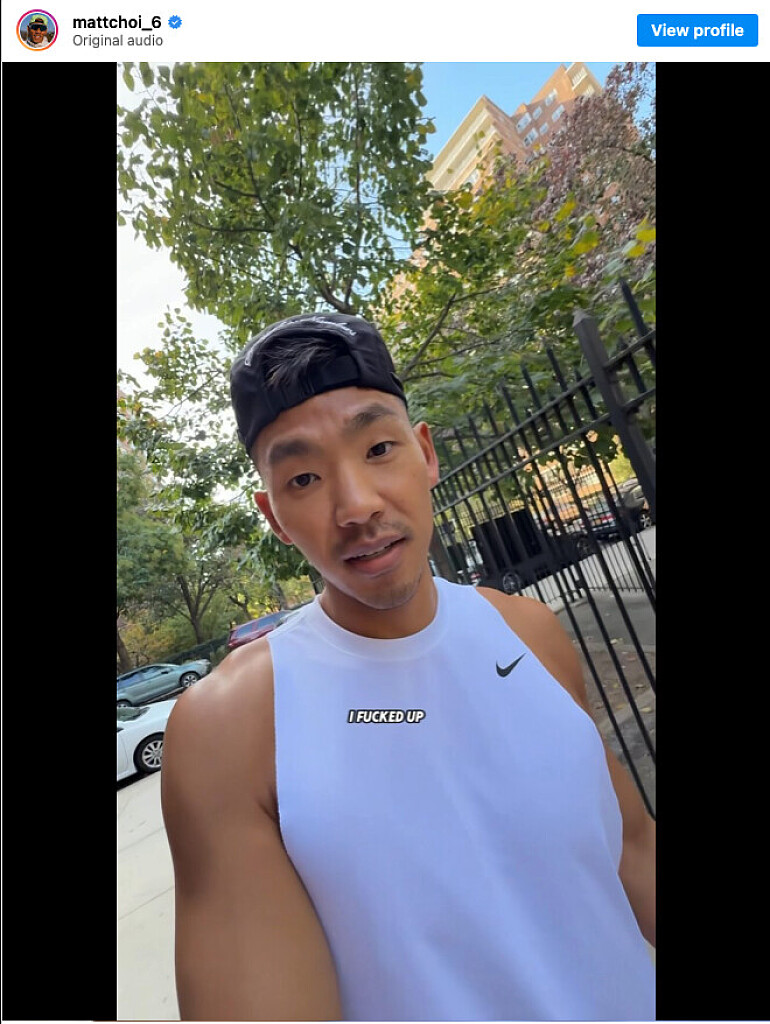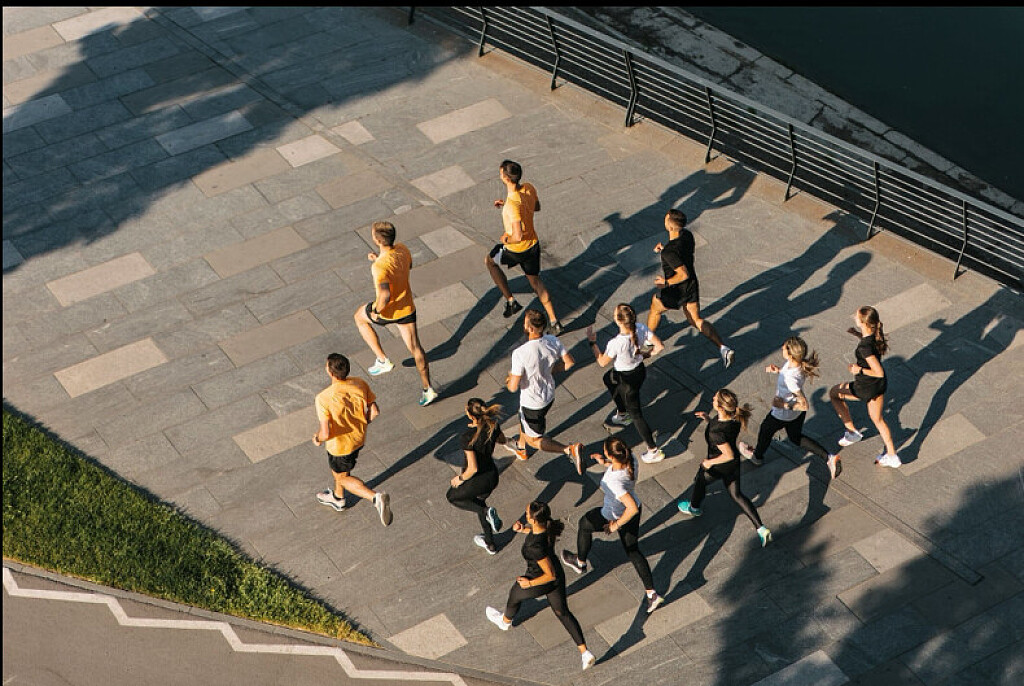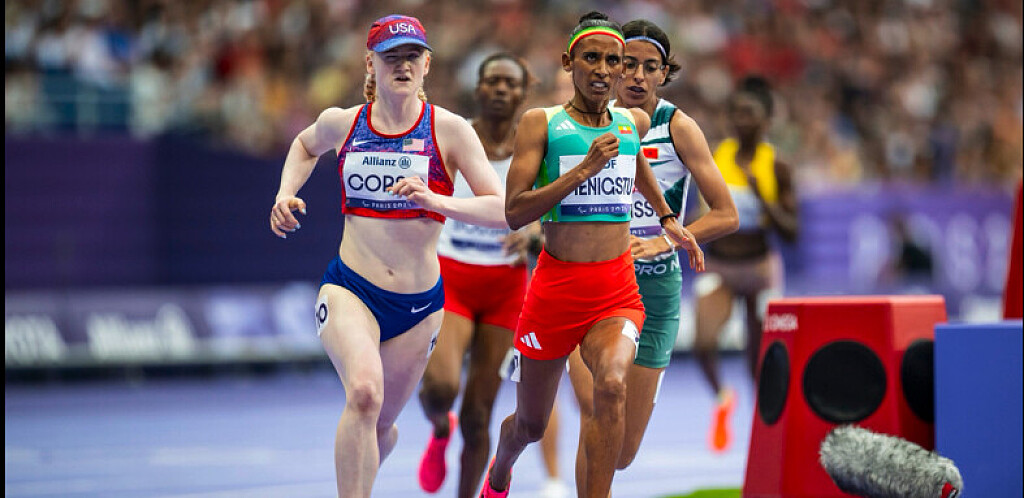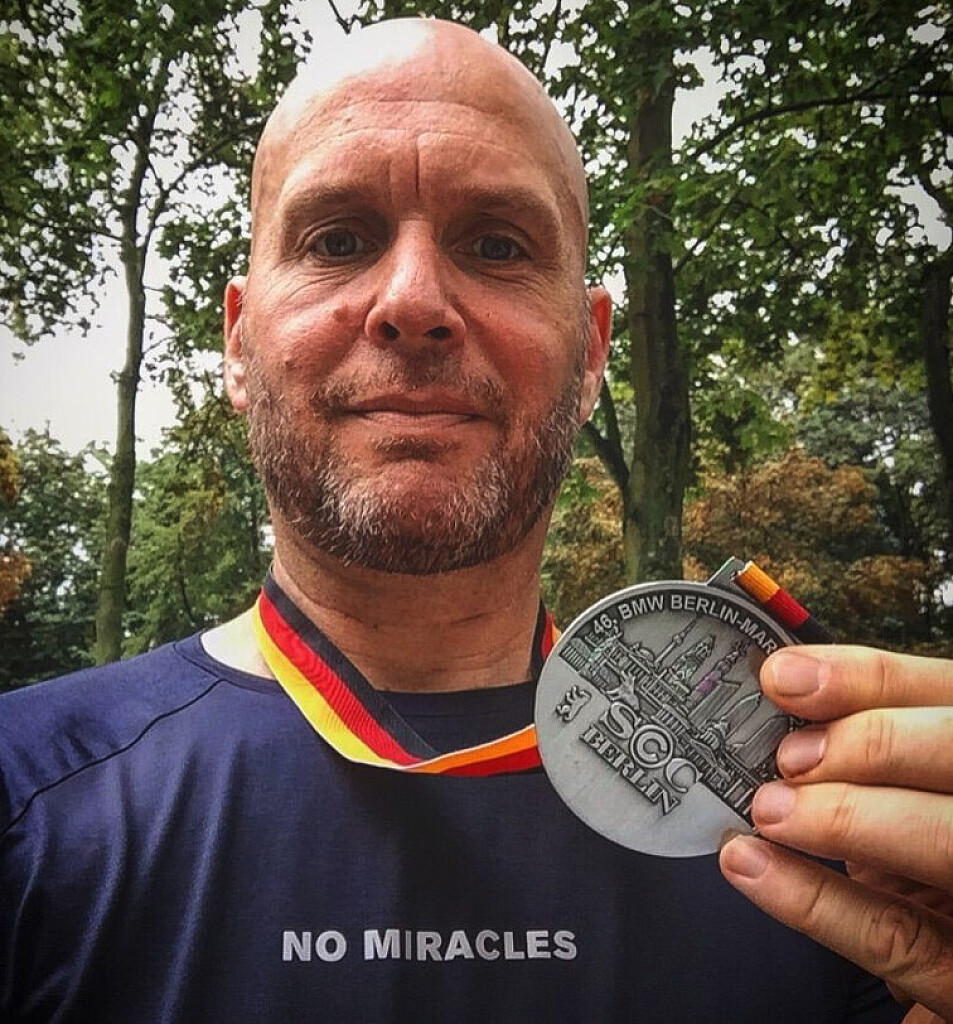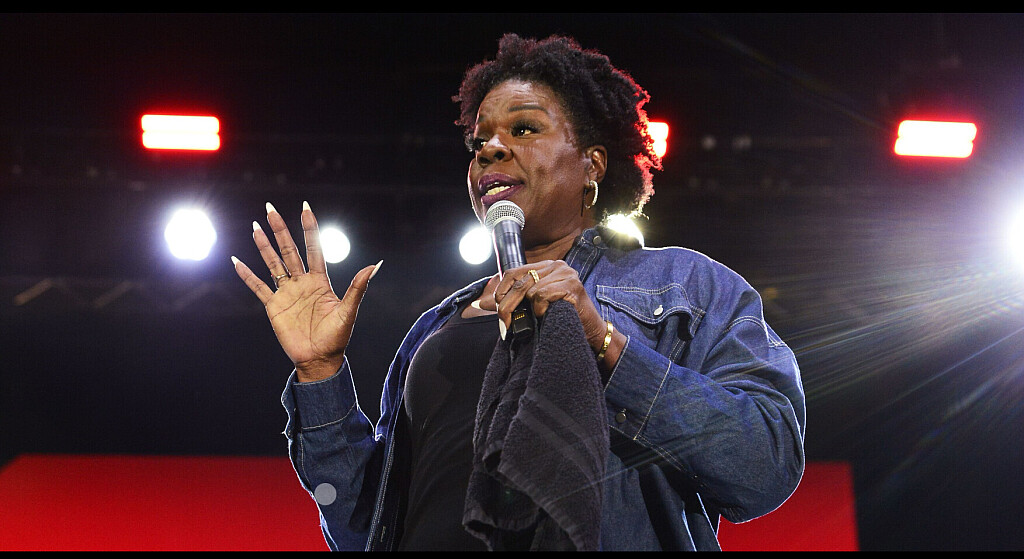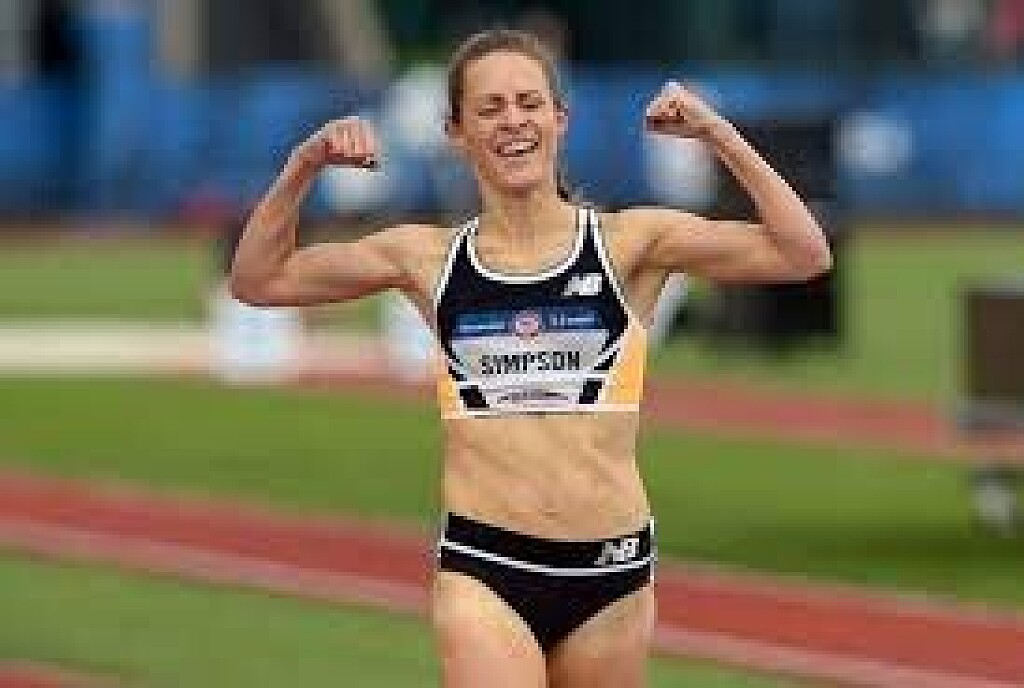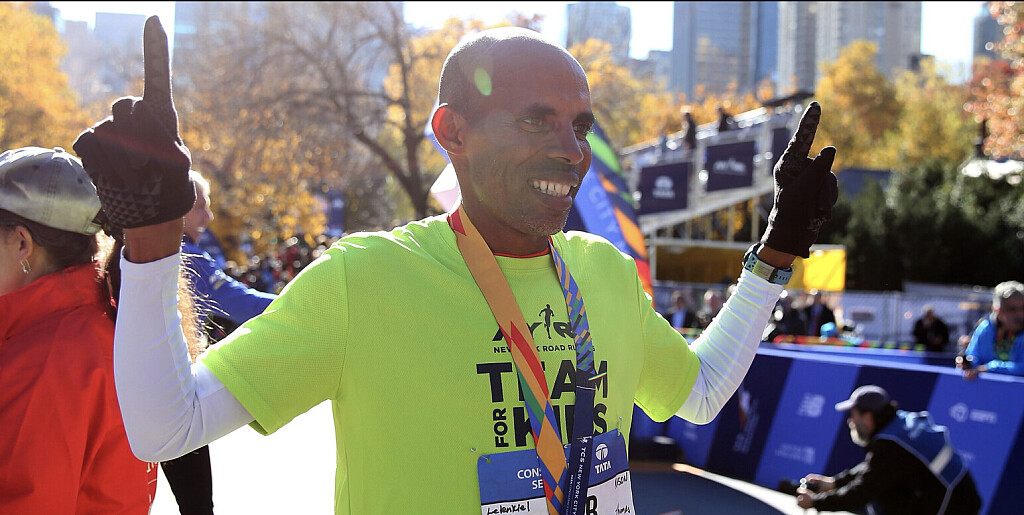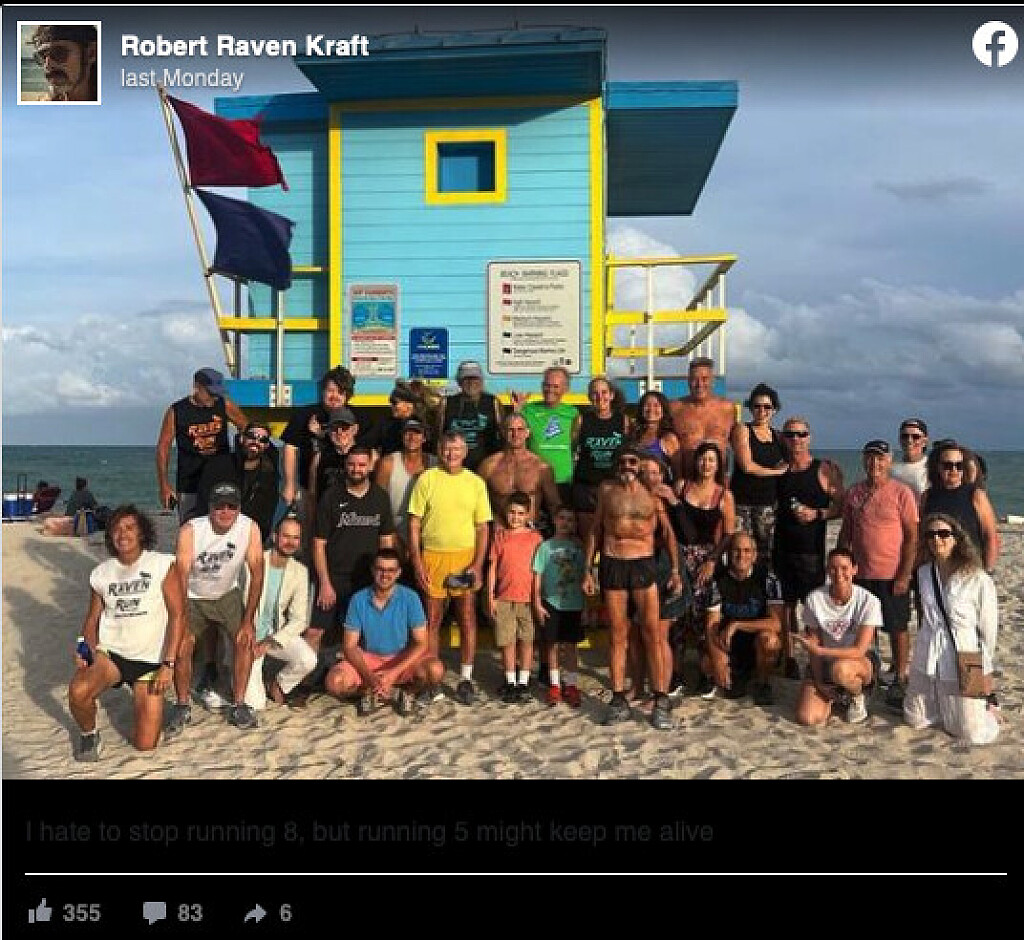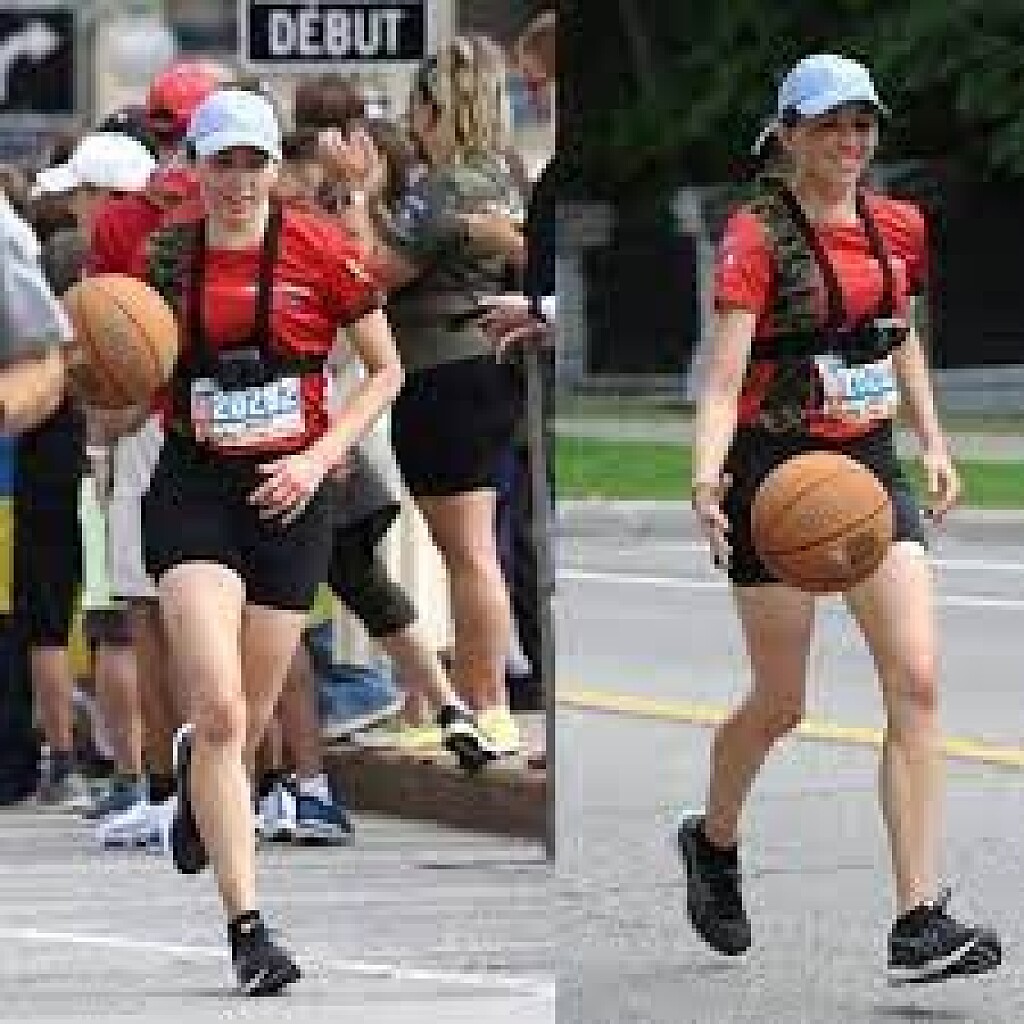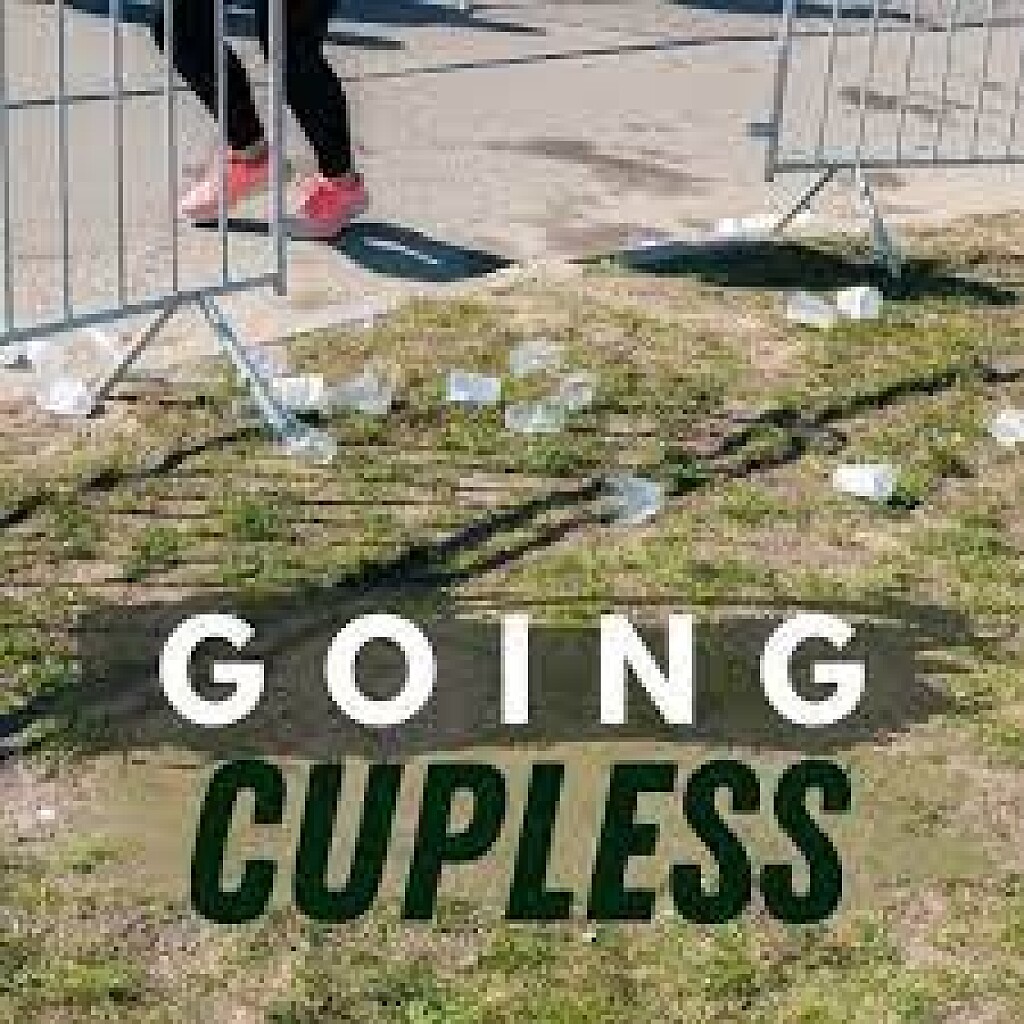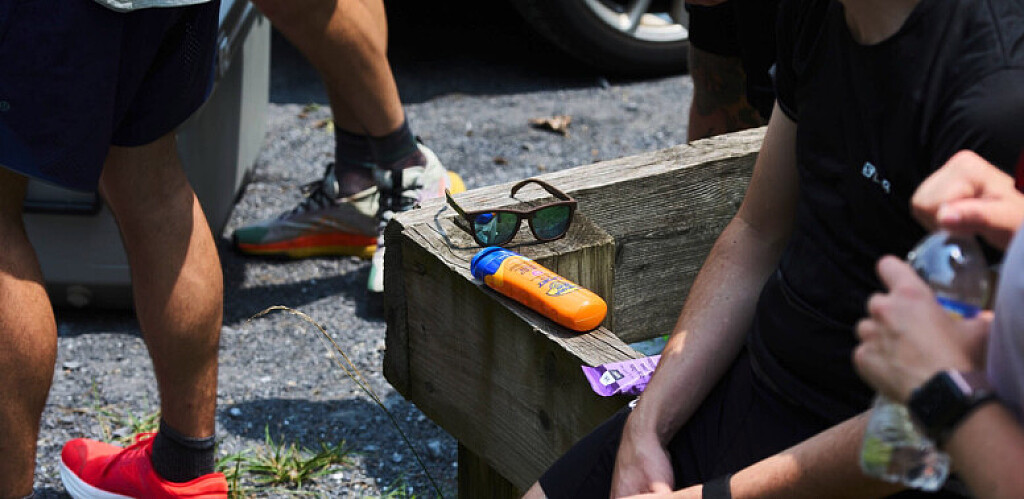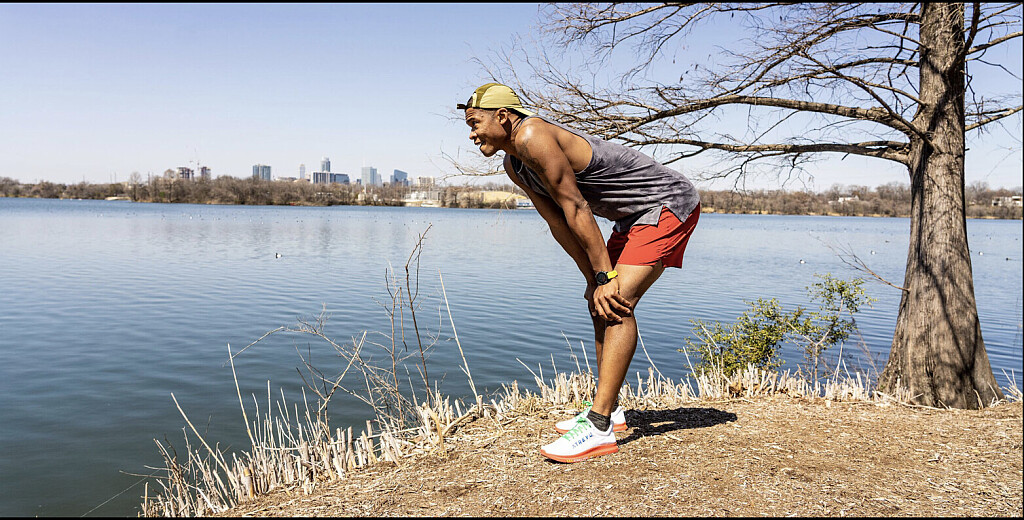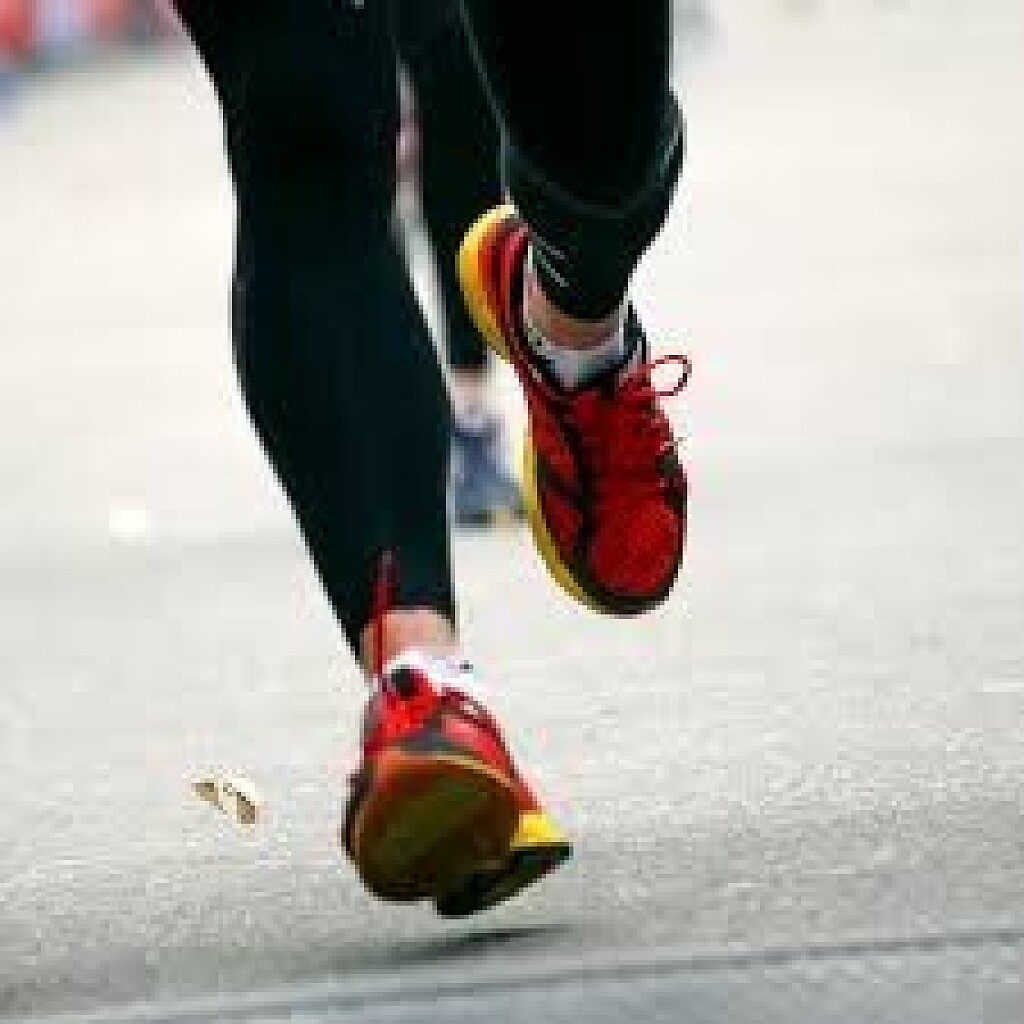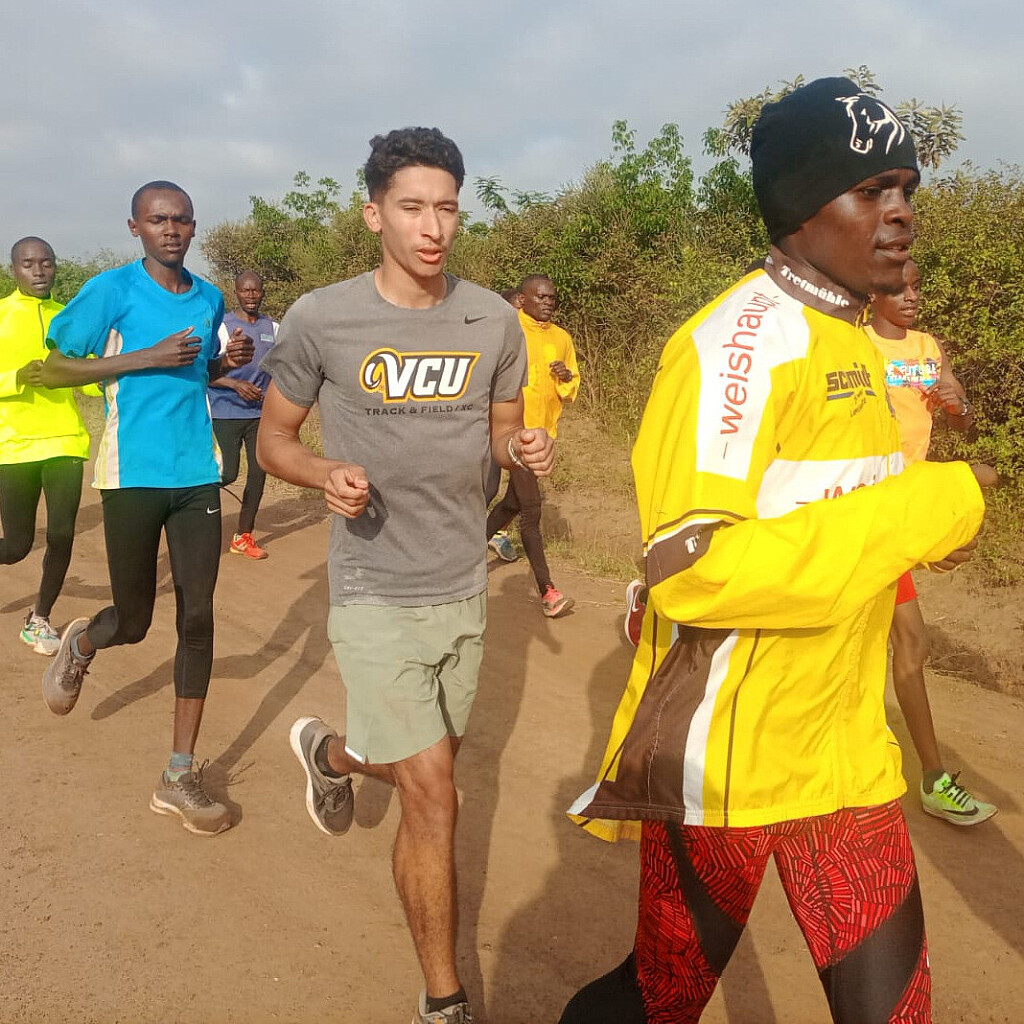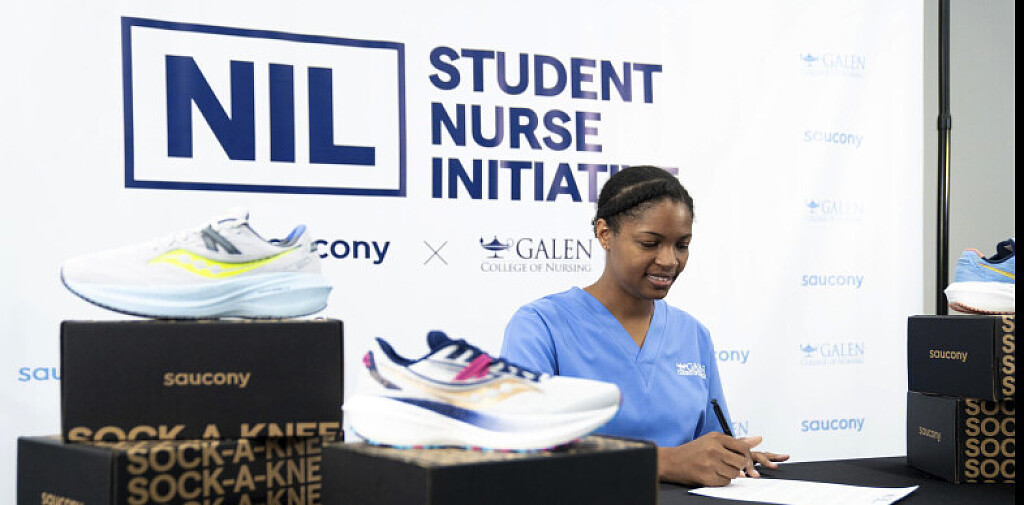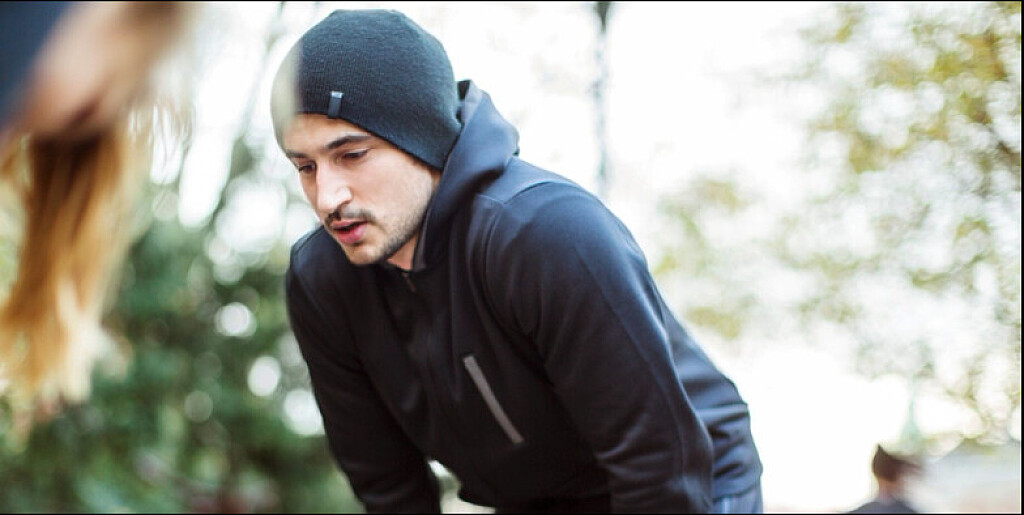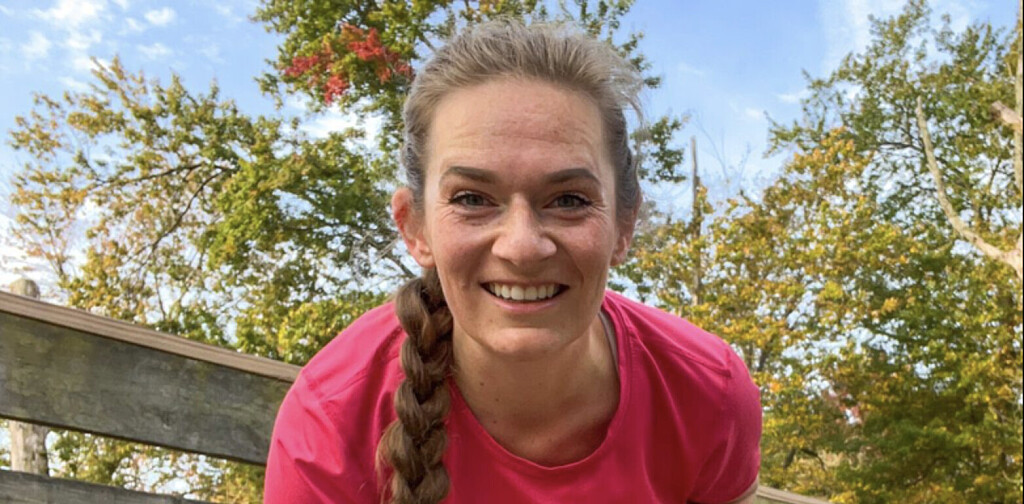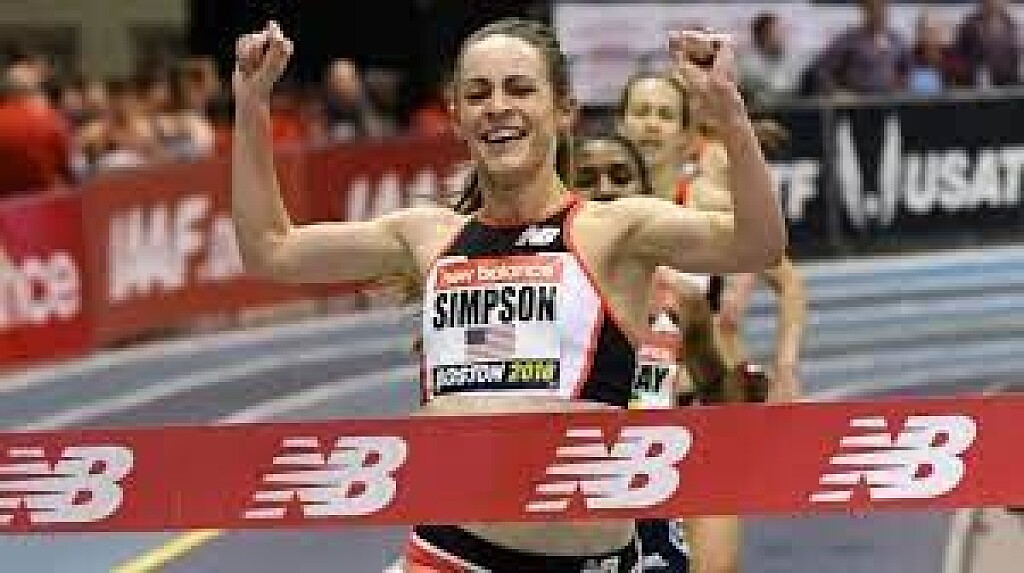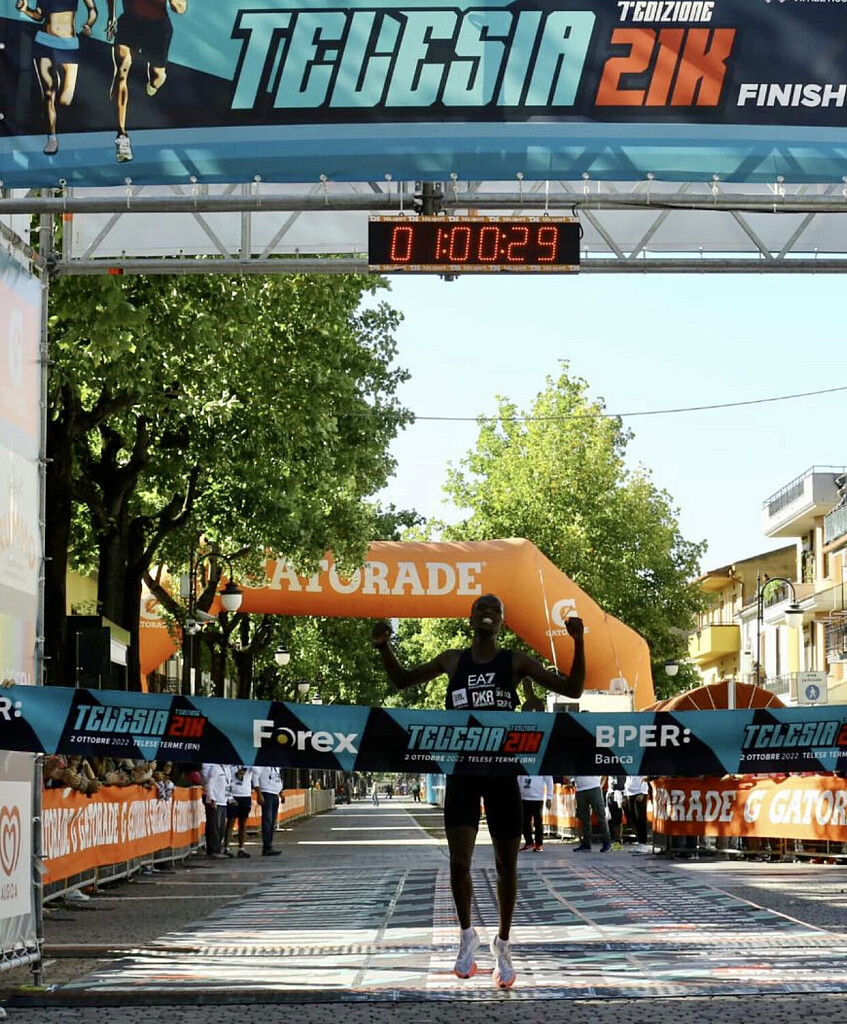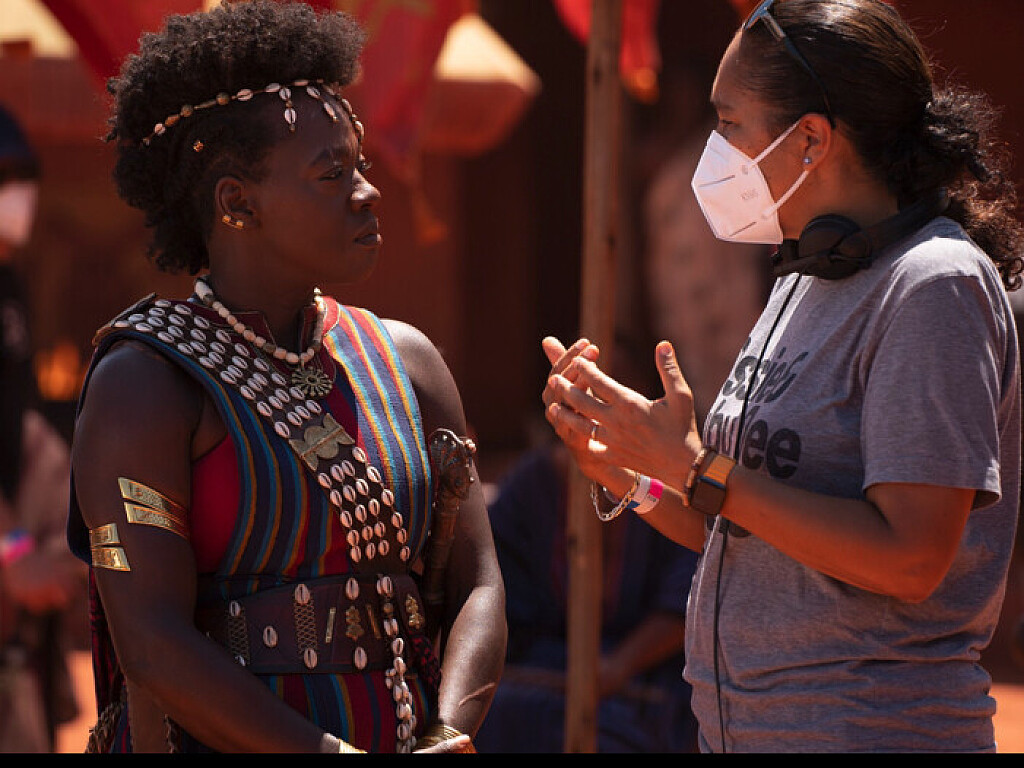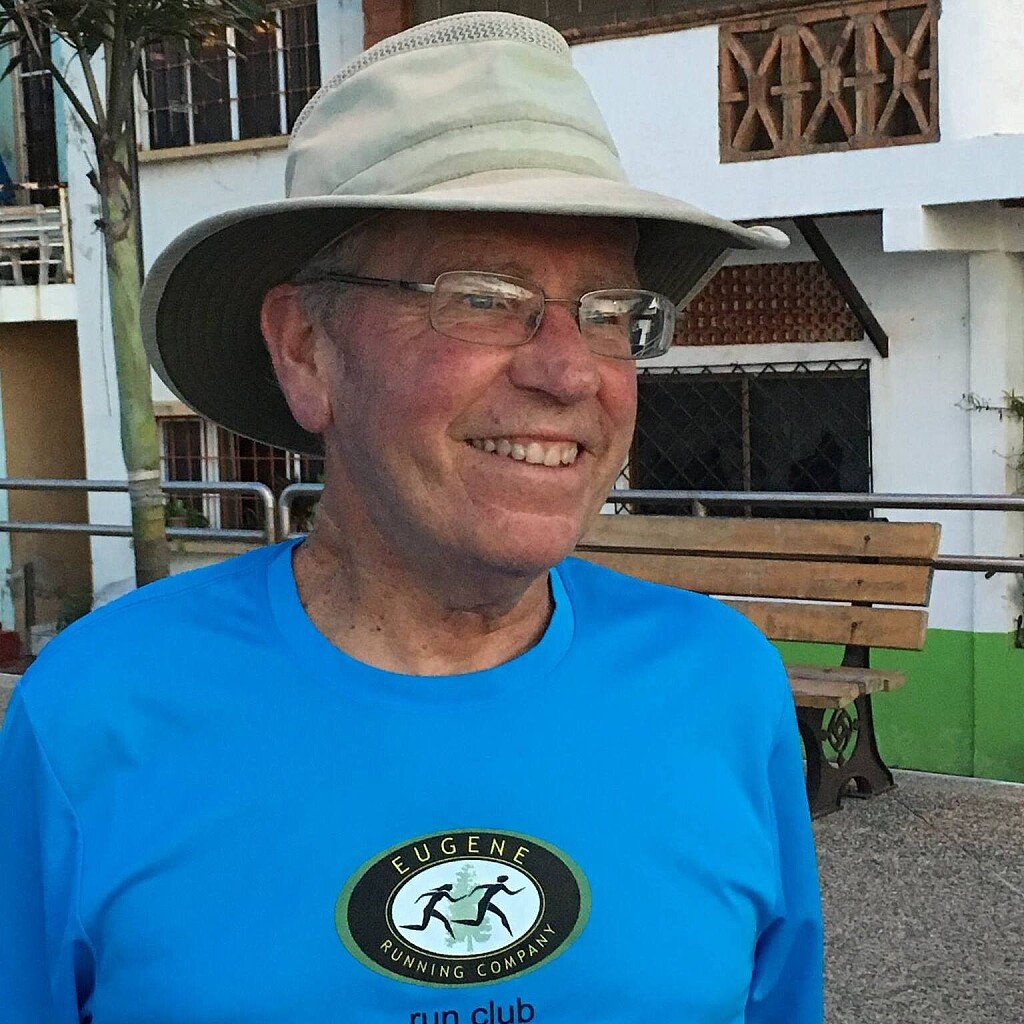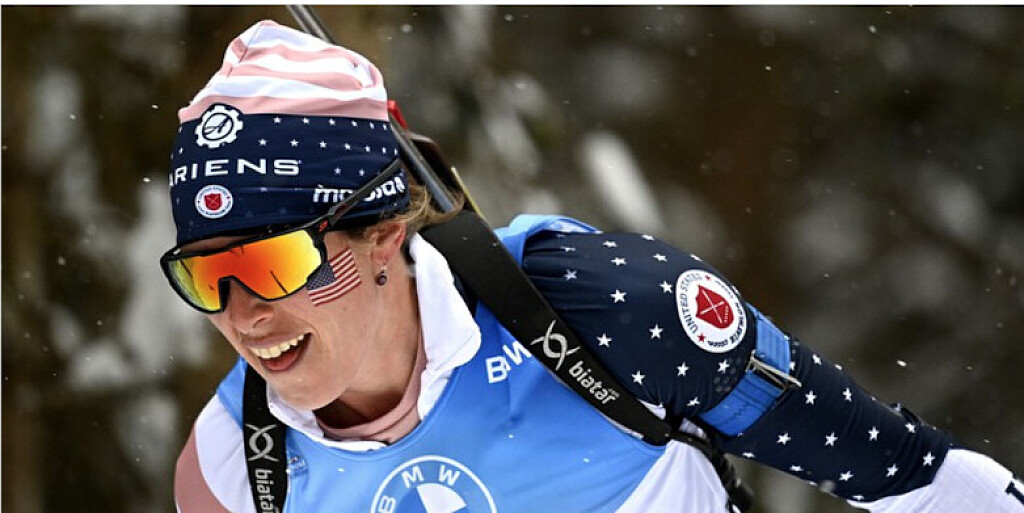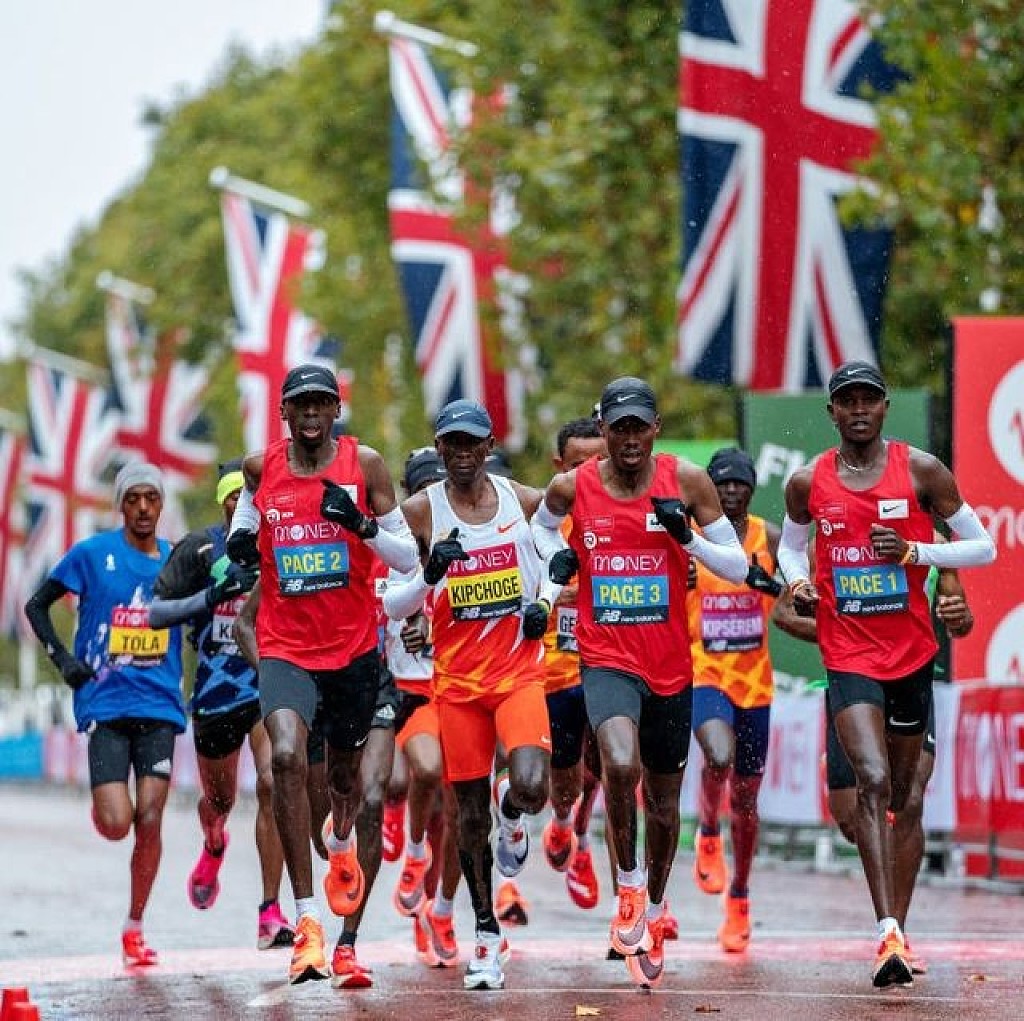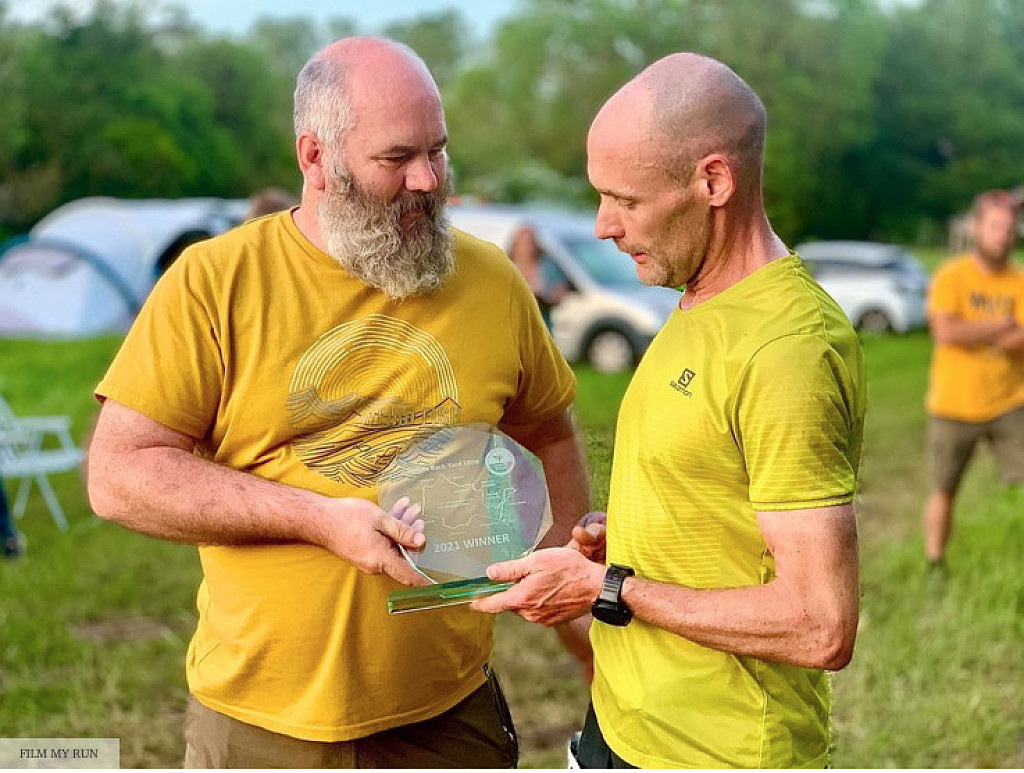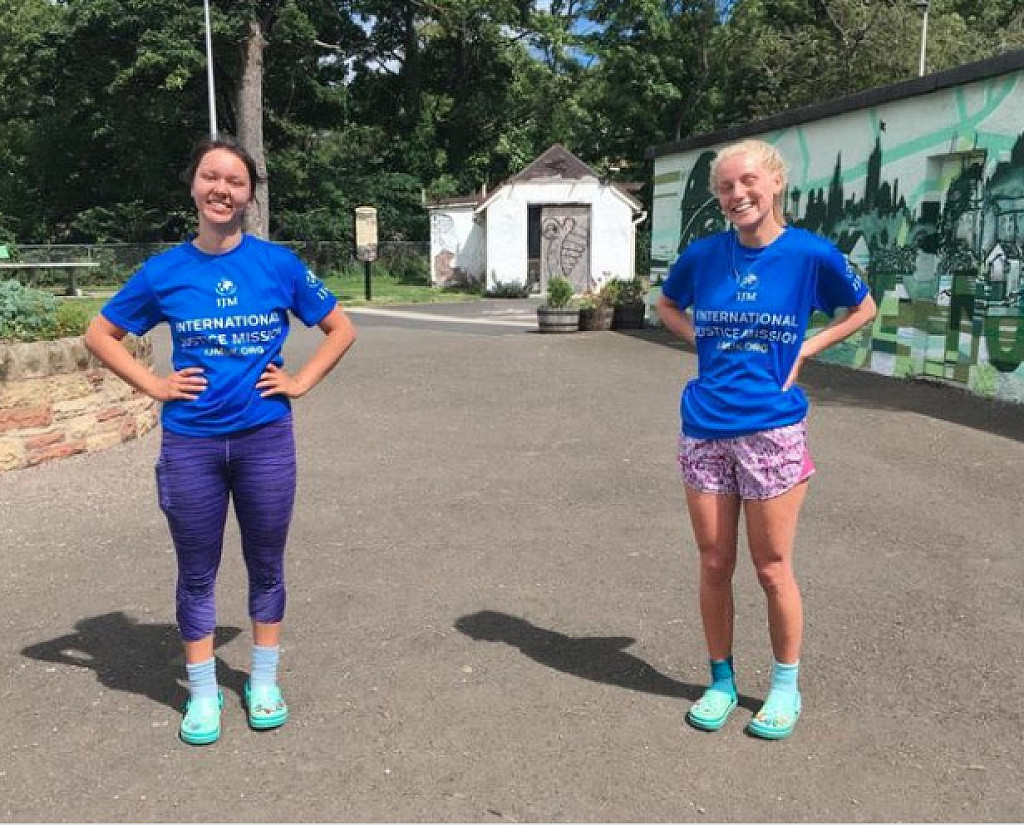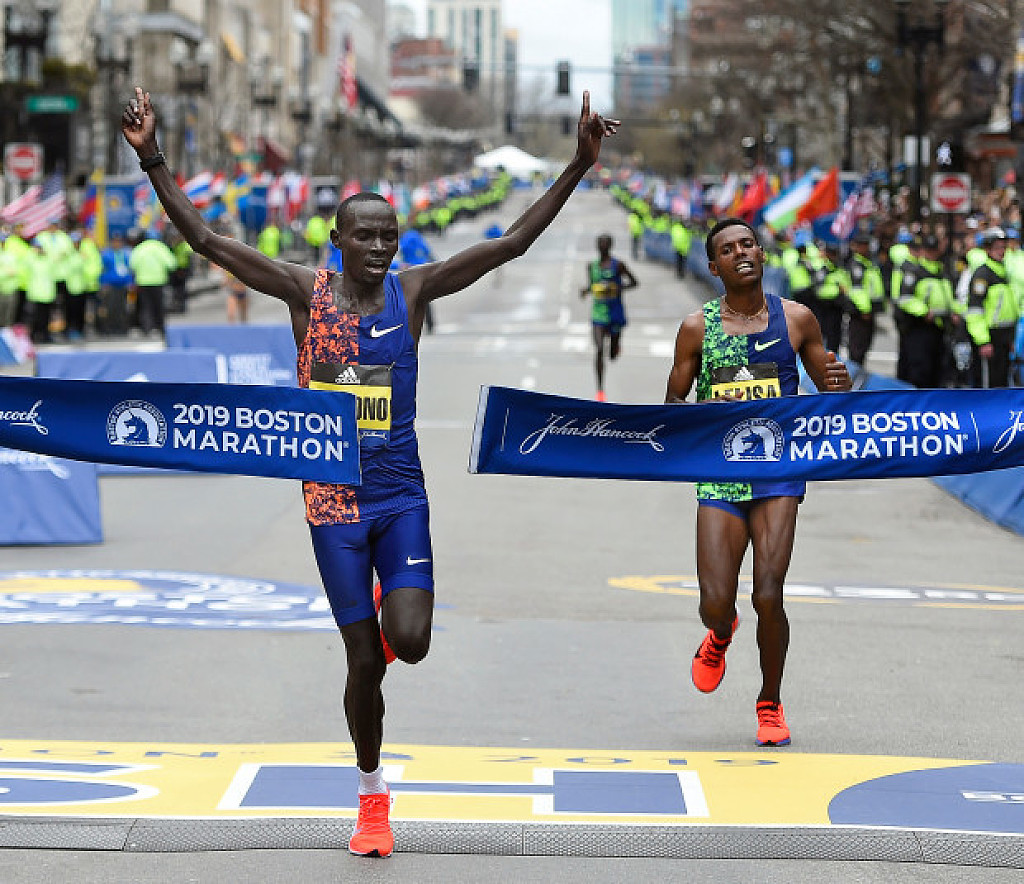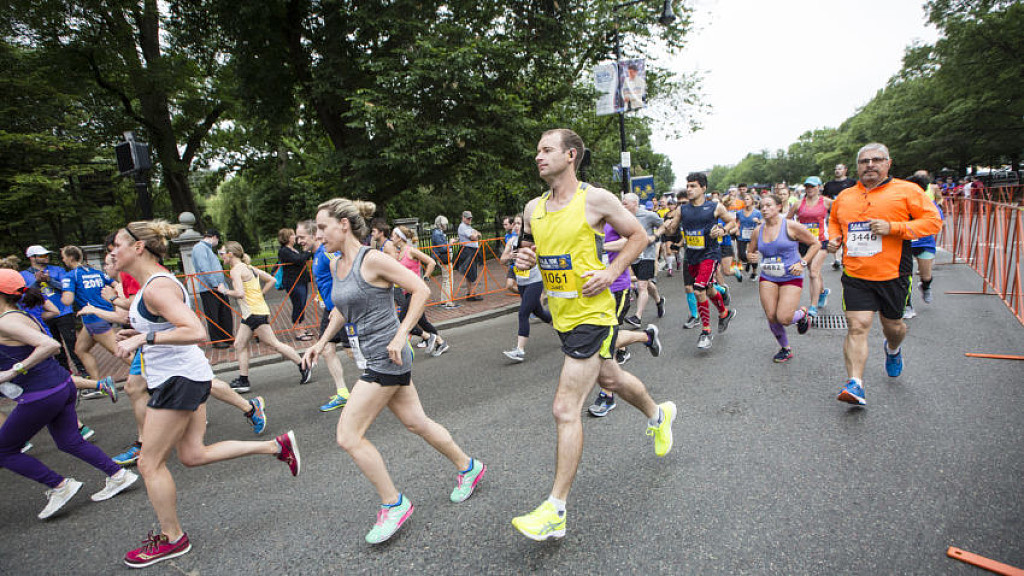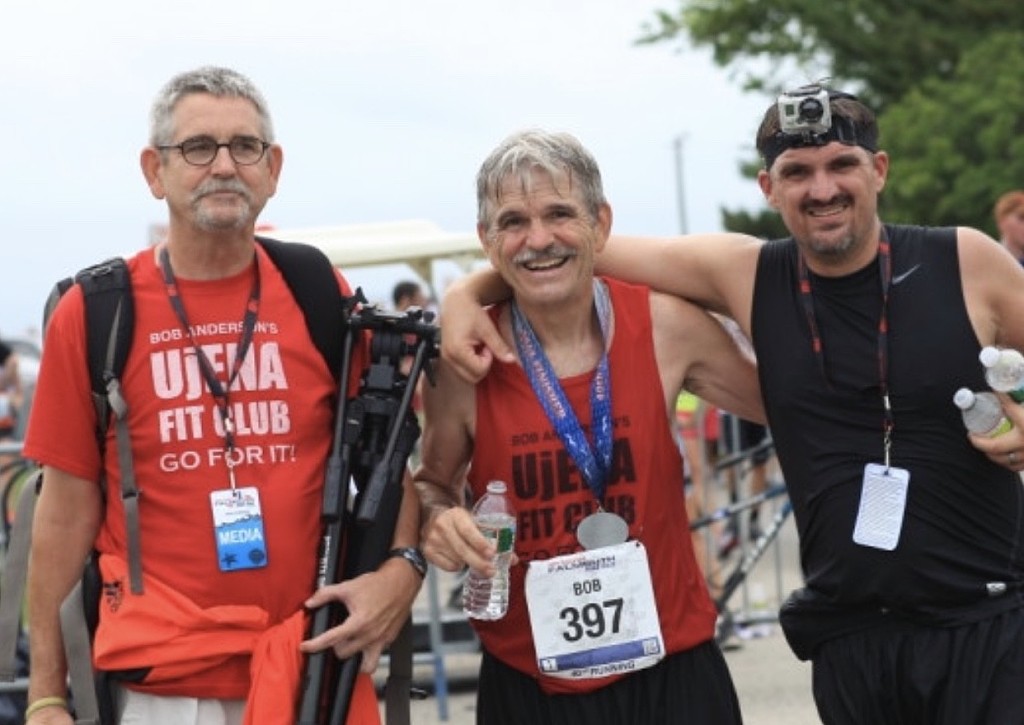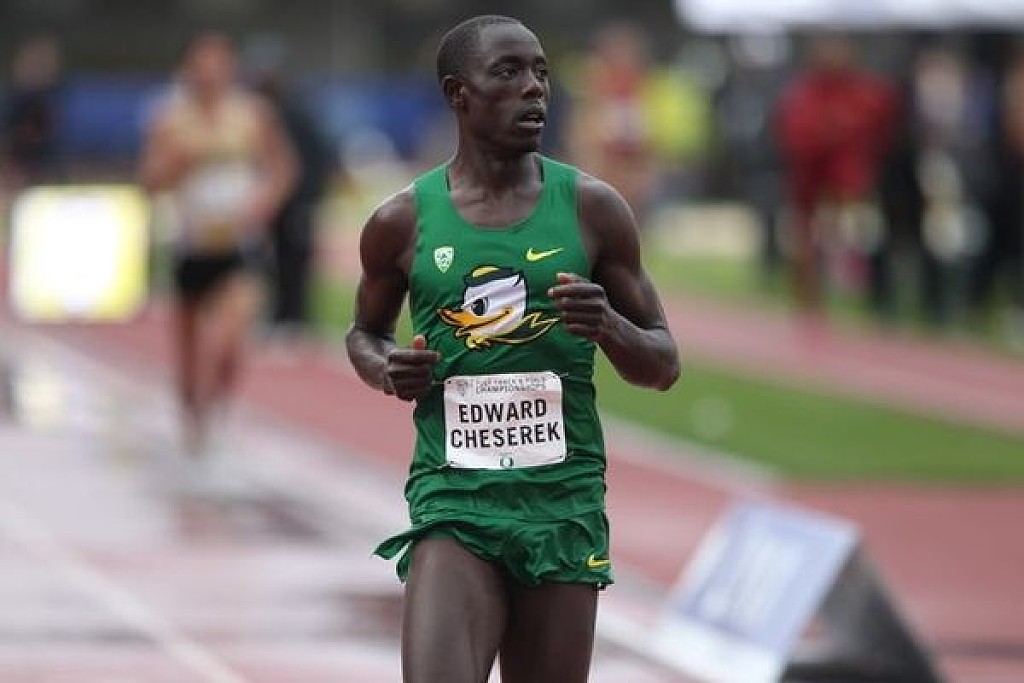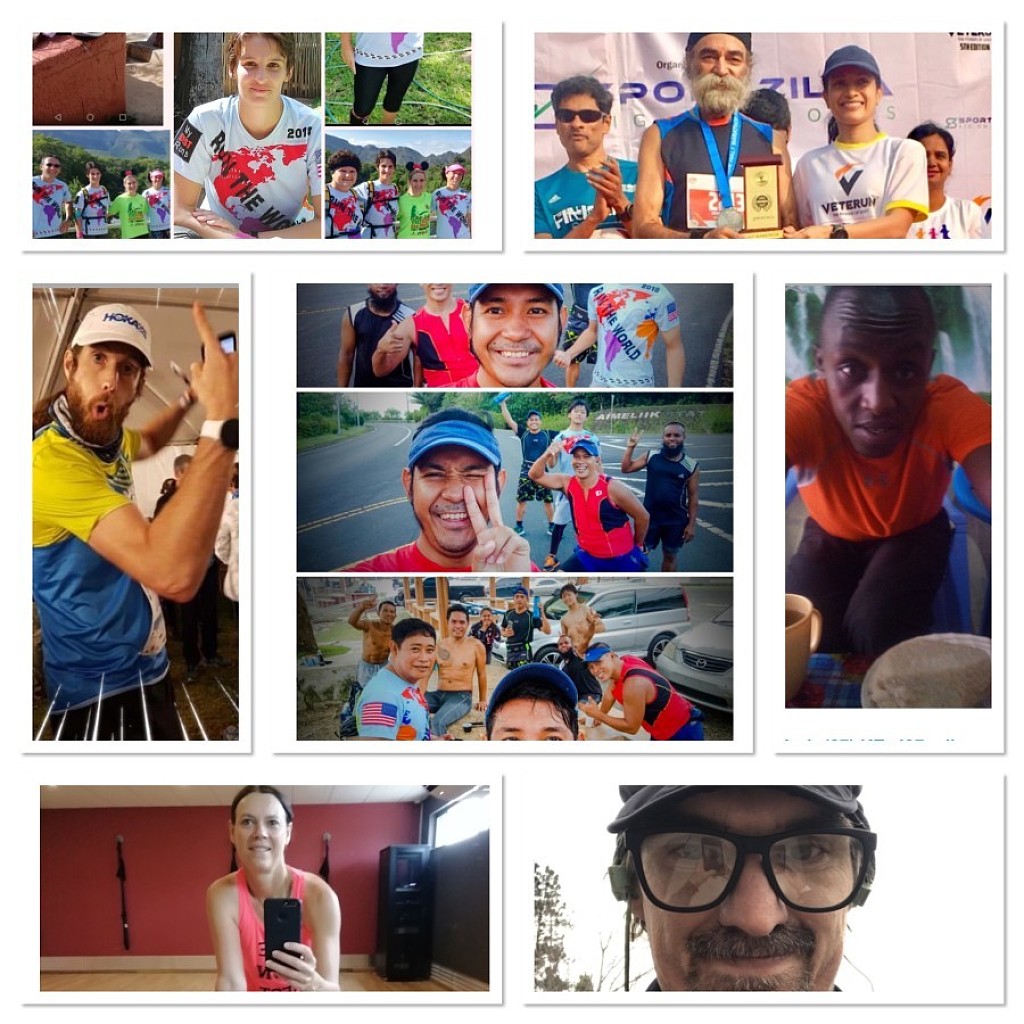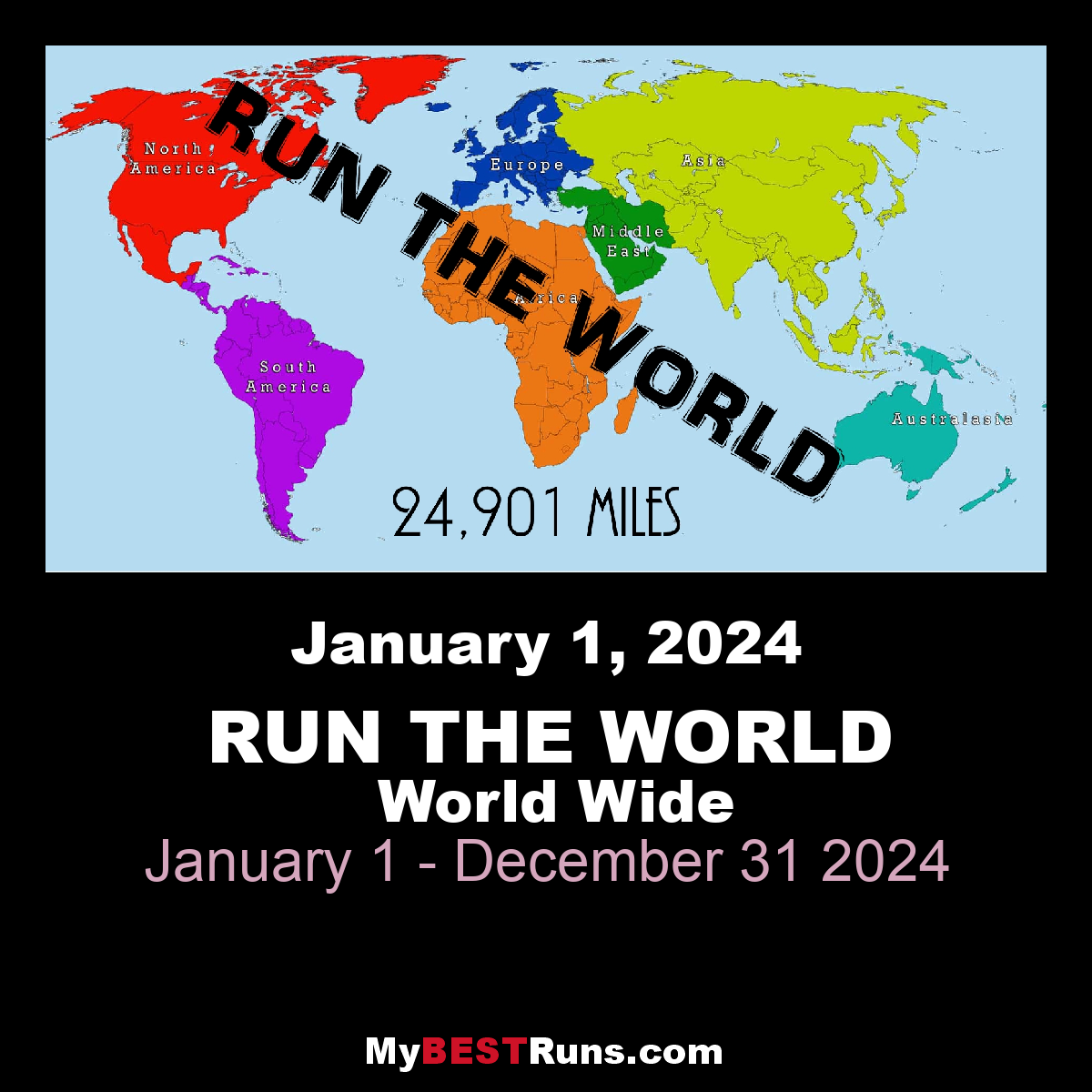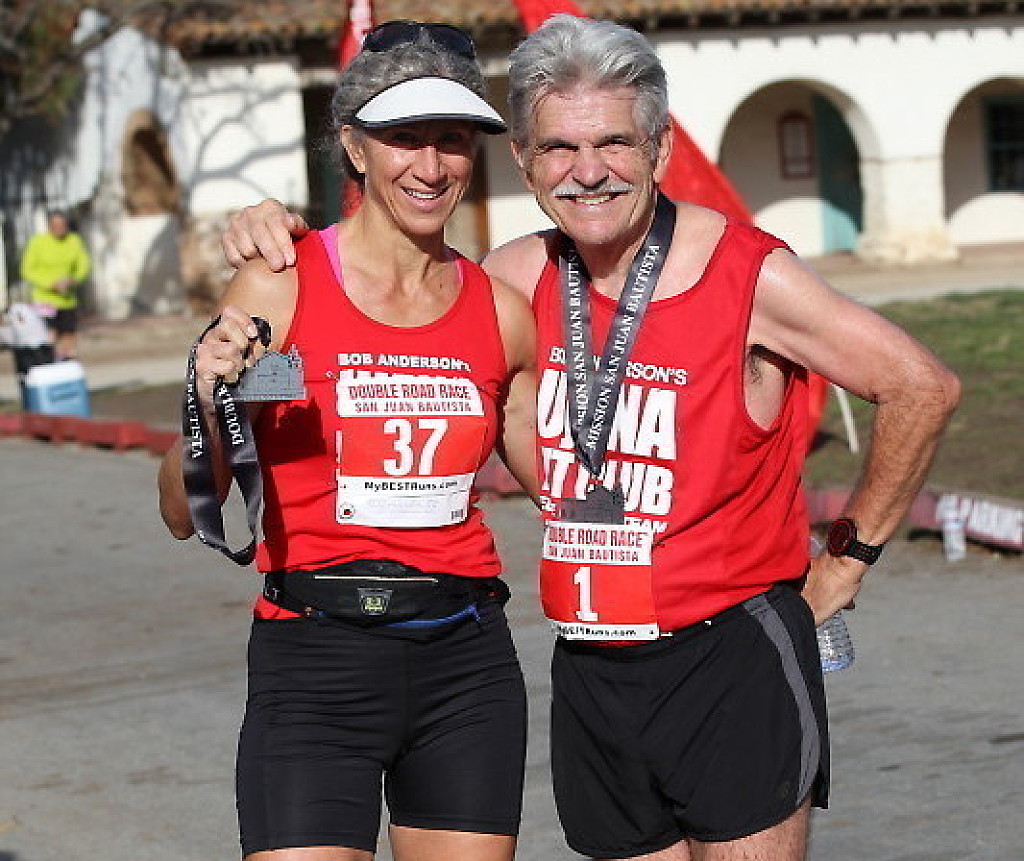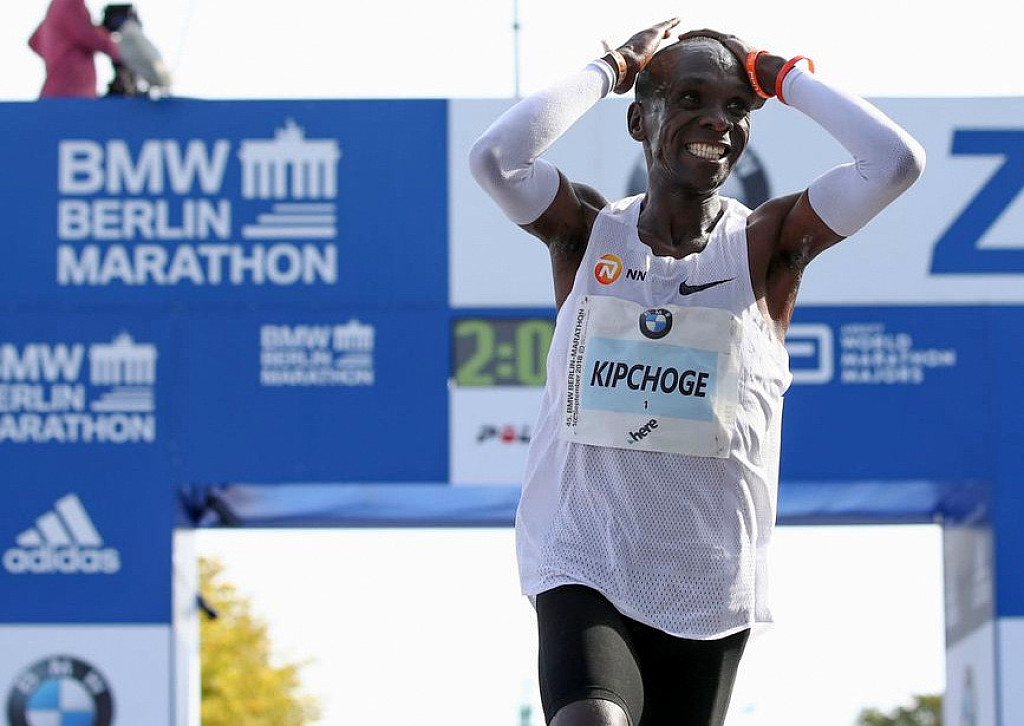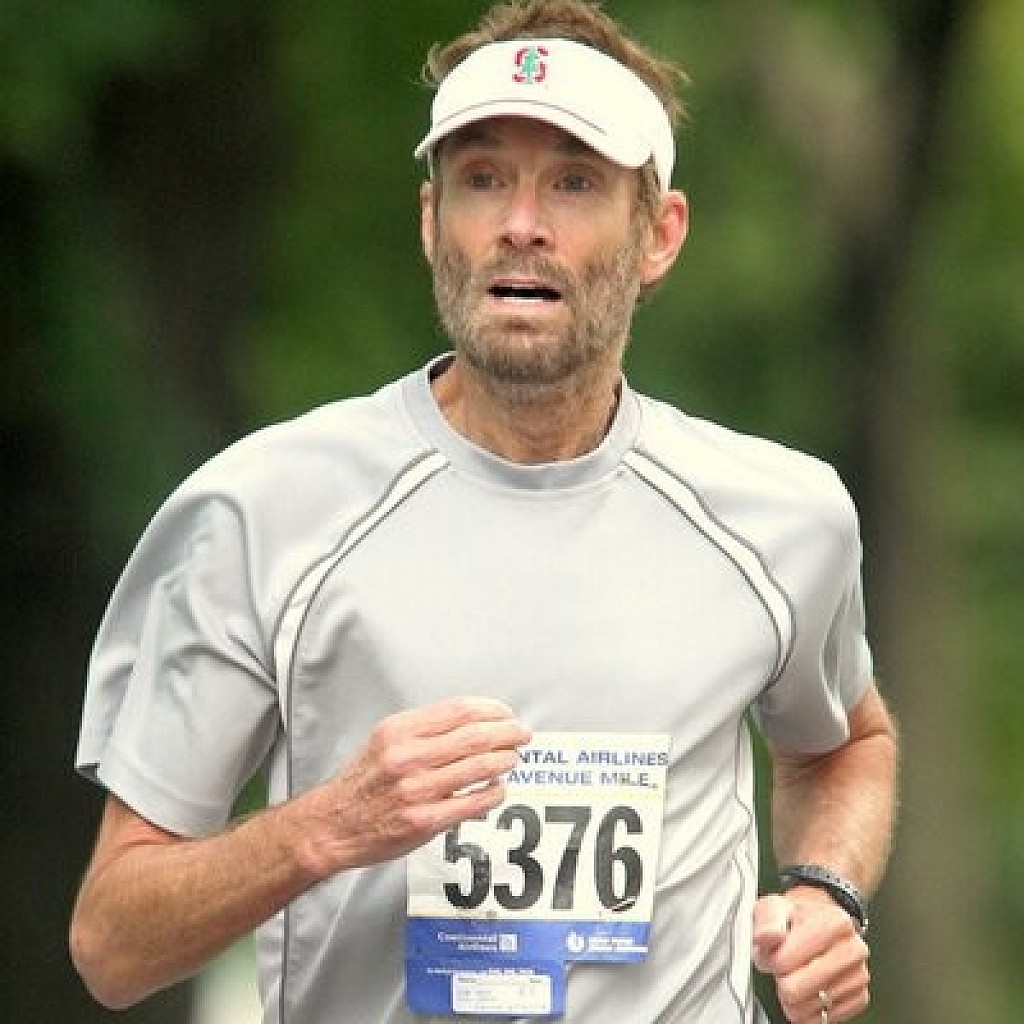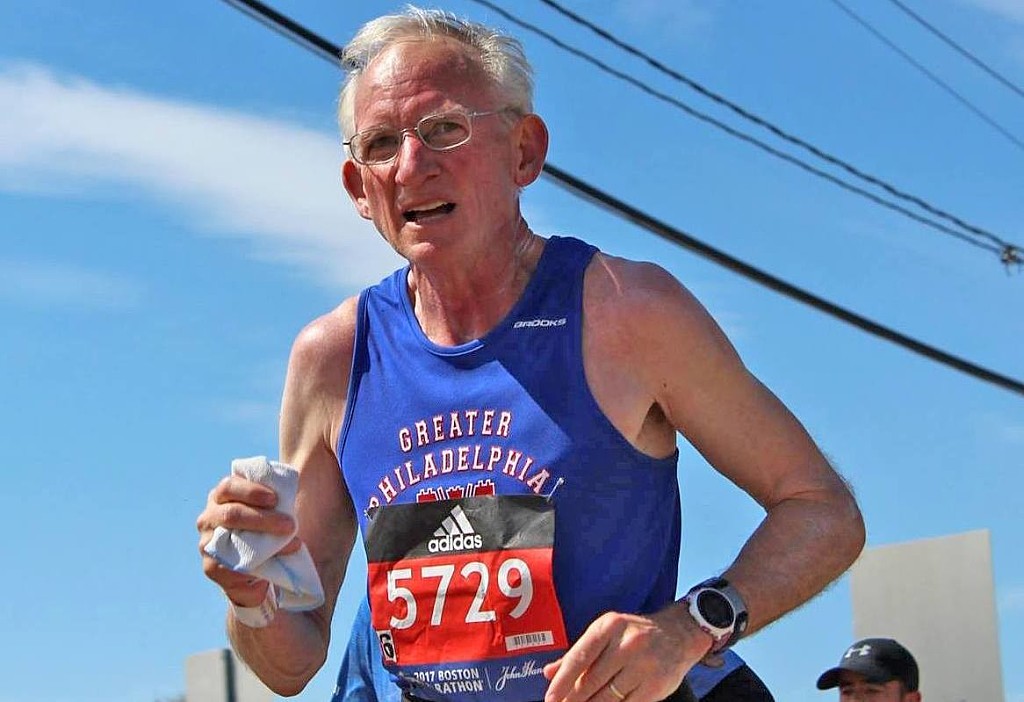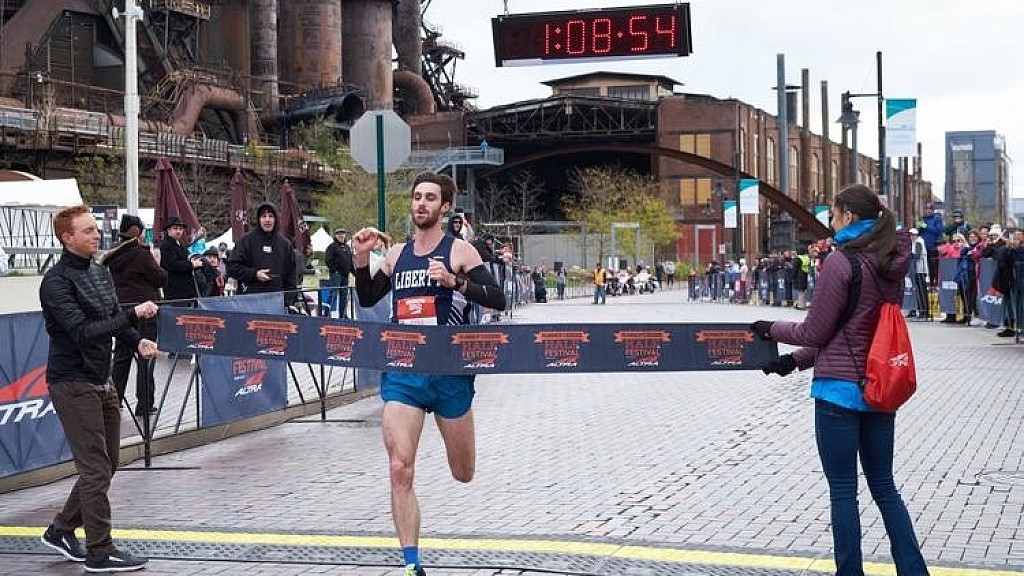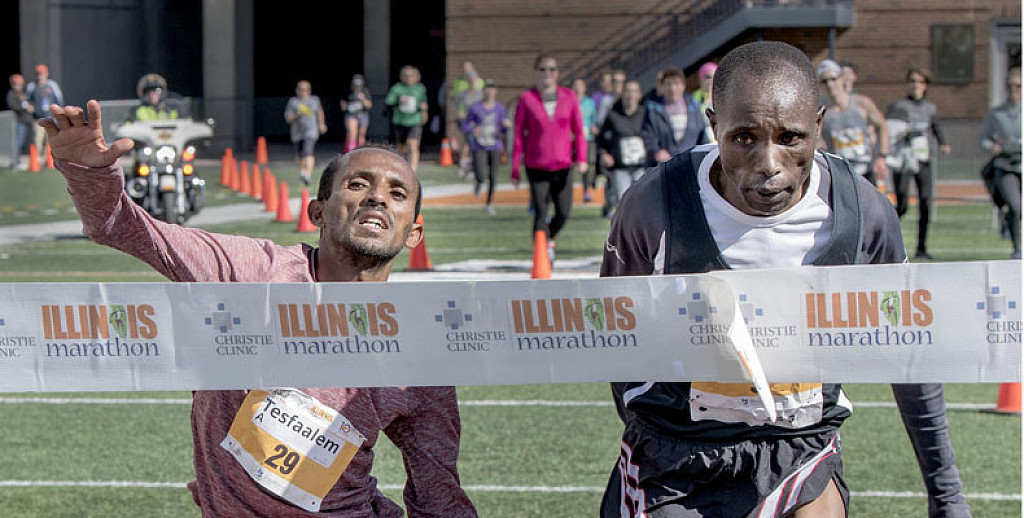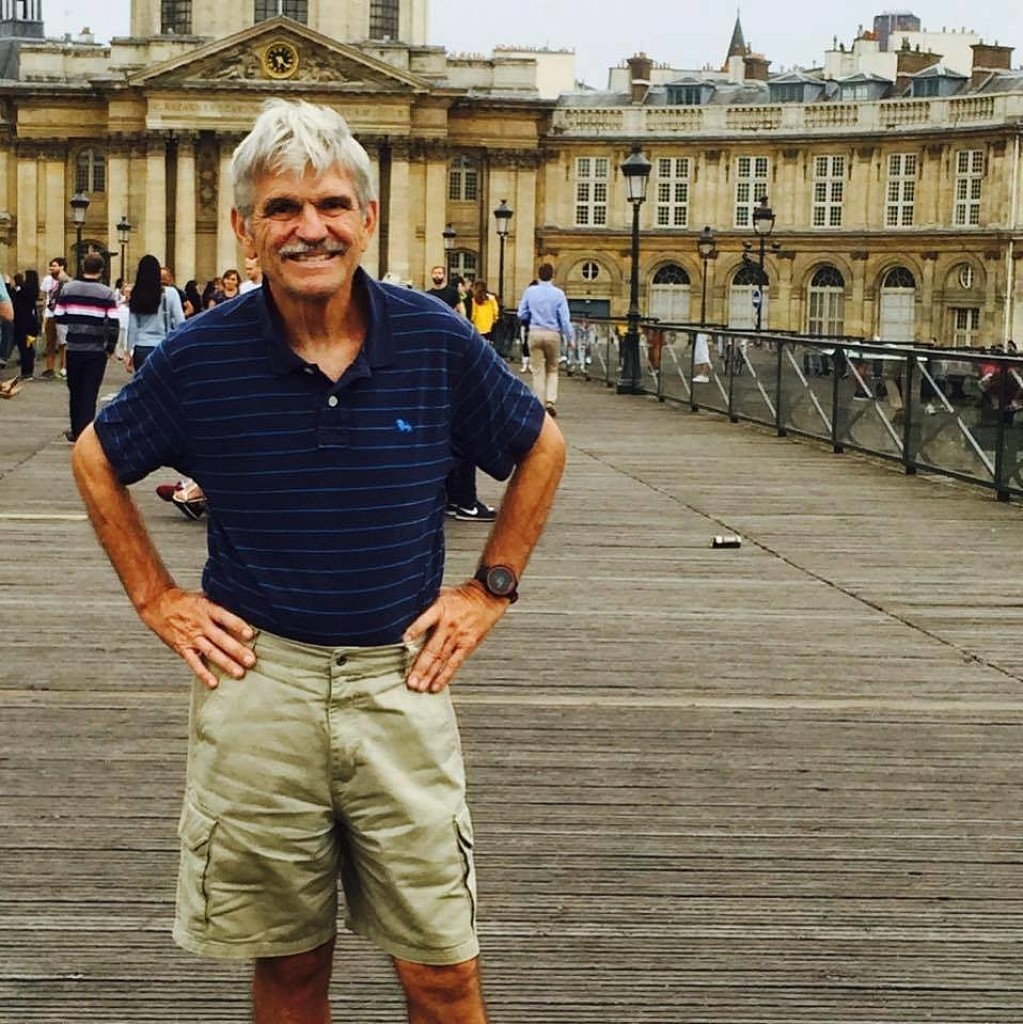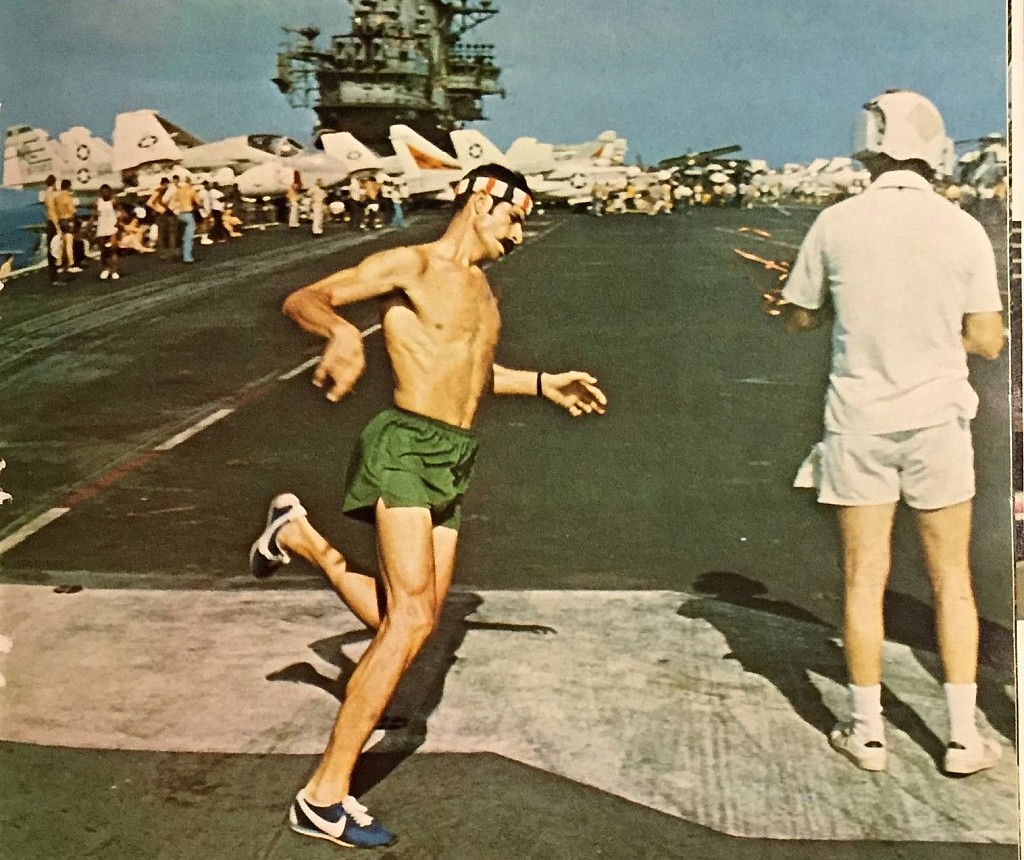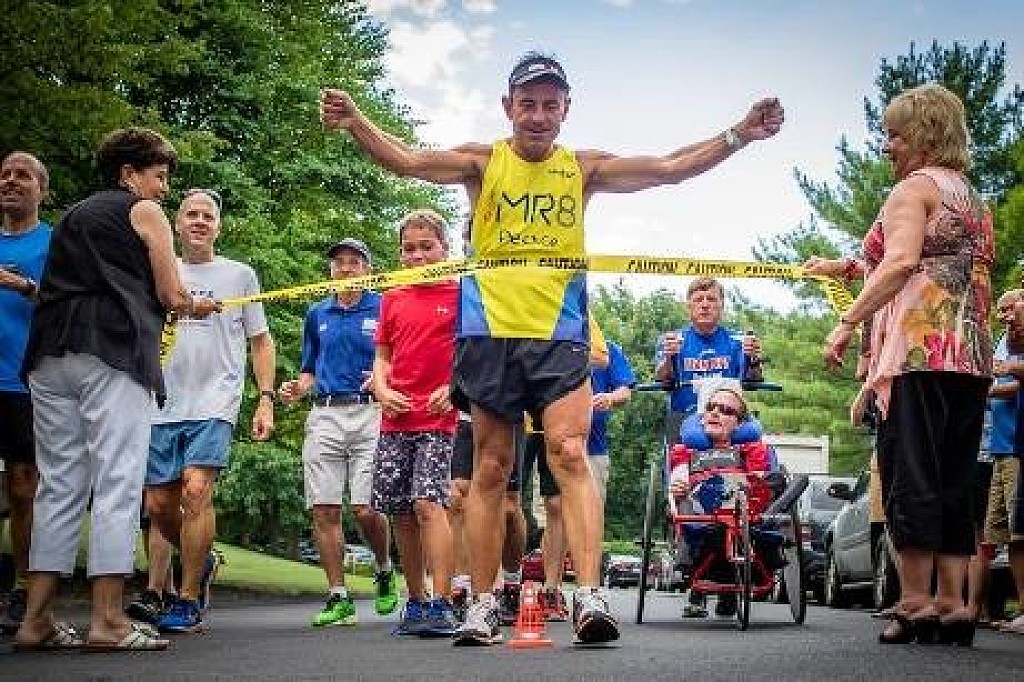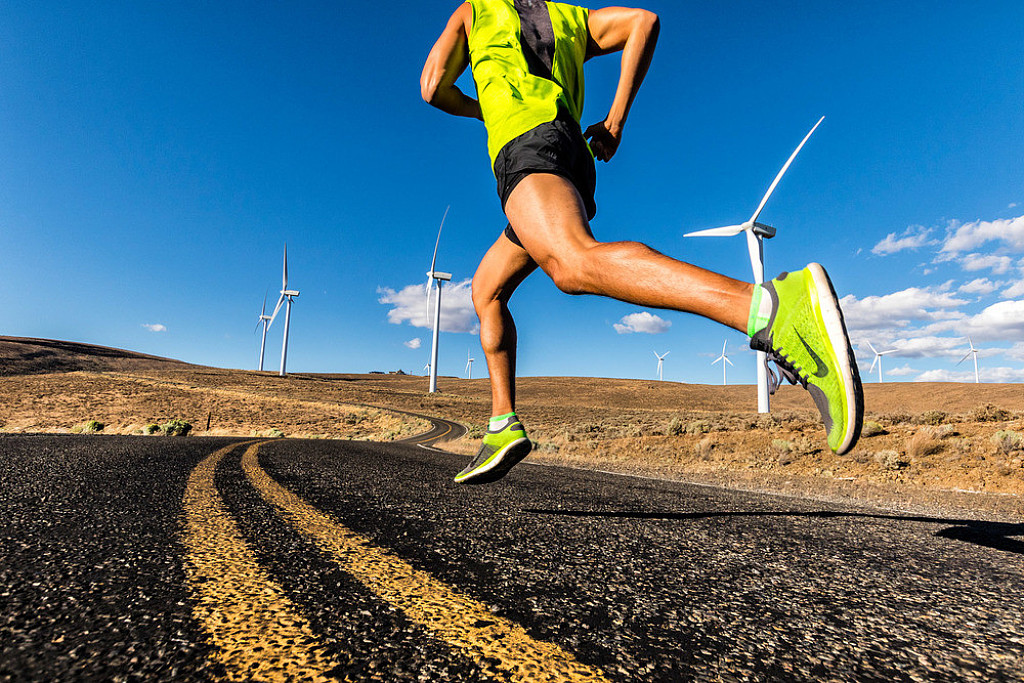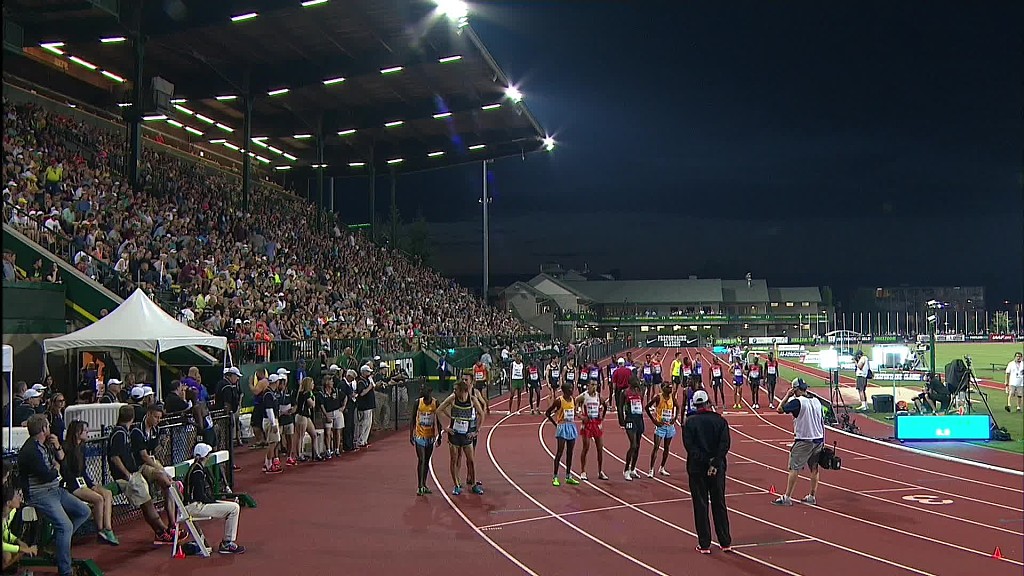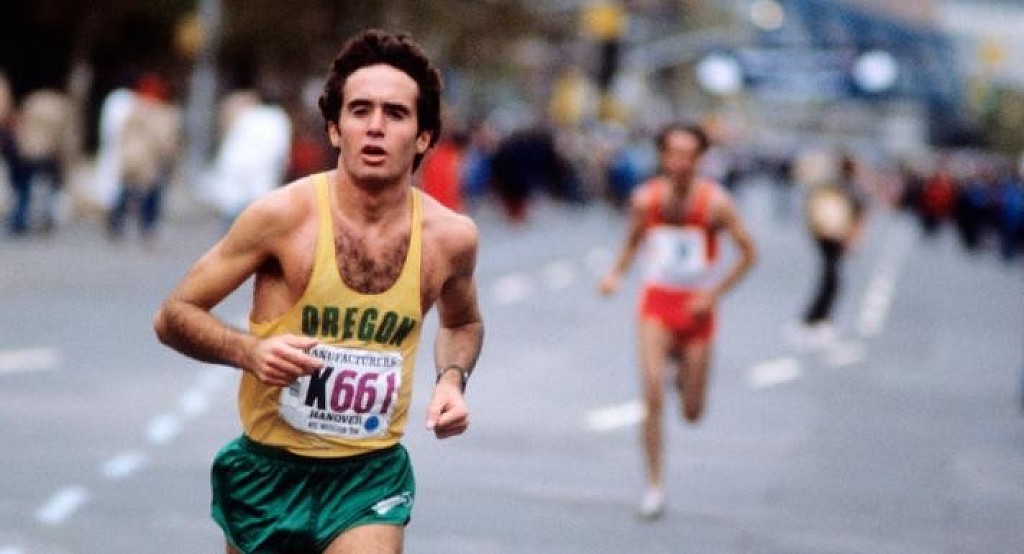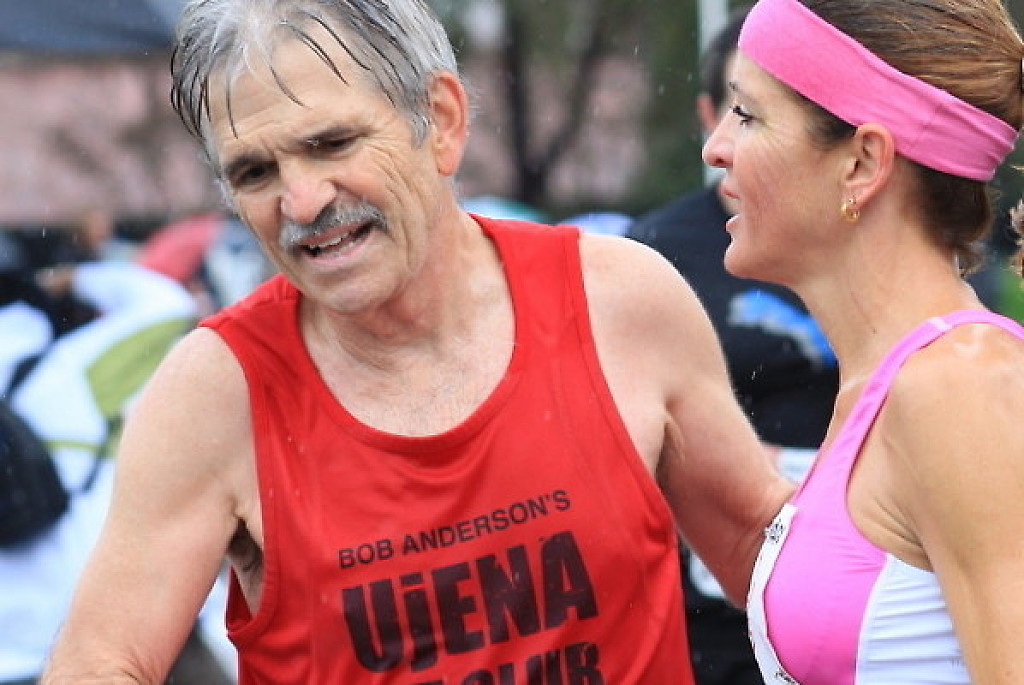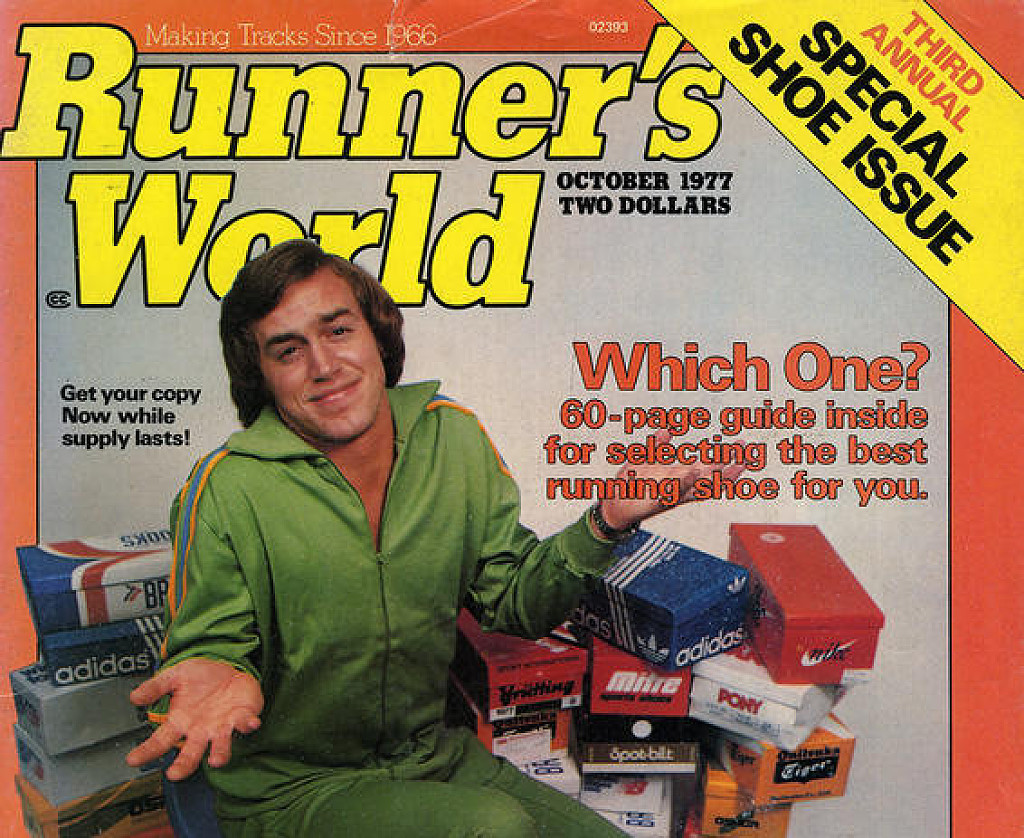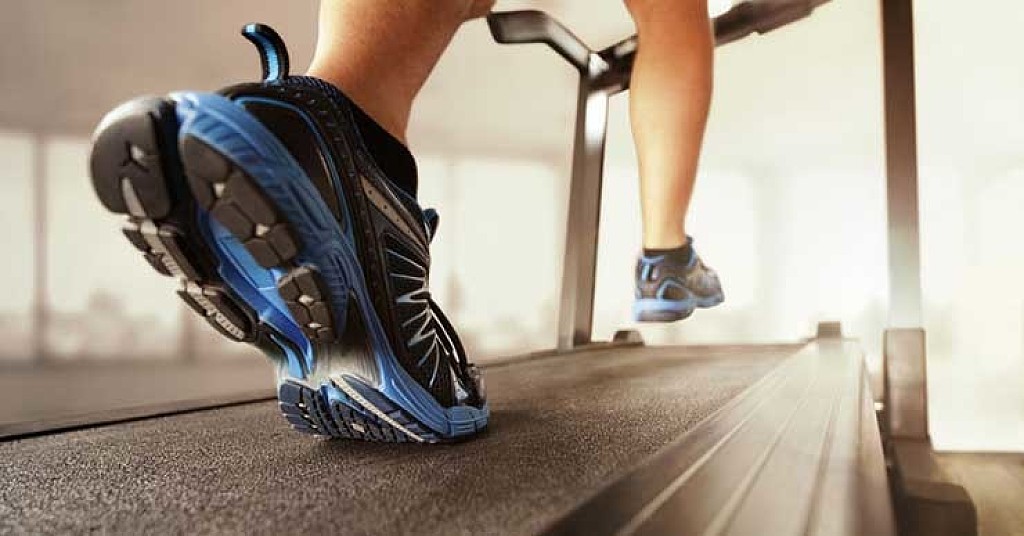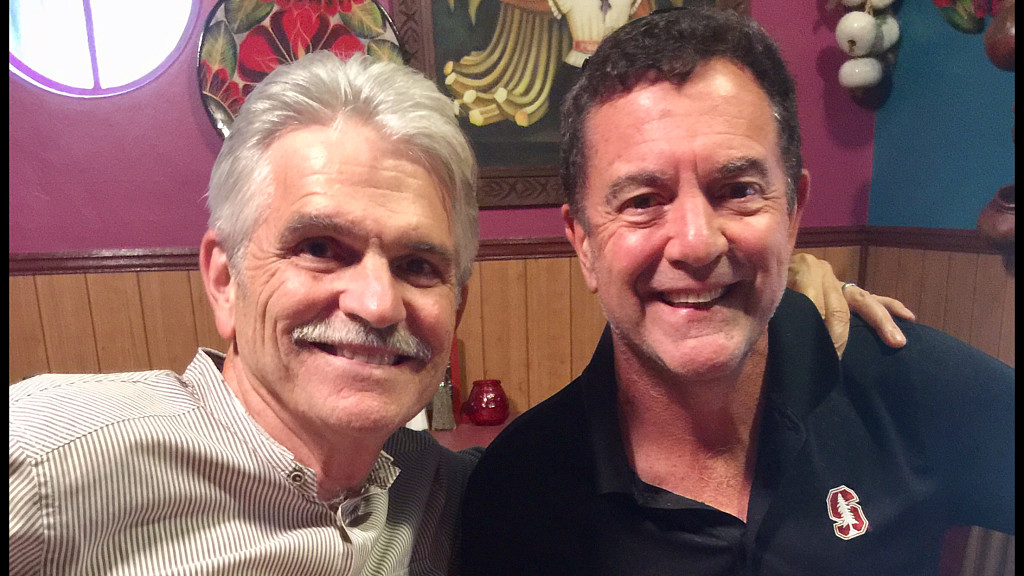Running News Daily
Running News Daily is edited by Bob Anderson. Send your news items to bob@mybestruns.com Advertising opportunities available. Train the Kenyan Way at KATA Kenya and Portugal owned and operated by Bob Anderson. Be sure to catch our movie A Long Run the movie KATA Running Camps and KATA Potato Farms - 31 now open in Kenya! https://kata.ke/
Index to Daily Posts · Sign Up For Updates · Run The World Feed
Articles tagged #Runner's World
Today's Running News
Matt Choi Apologizes for Running with E-Bikes on New York City Marathon Course
The influencer said in a video posted to Instagram, “I have no excuses. Full stop.”Matt Choi, the running influencer who infuriated the running community by bringing two unauthorized e-bikes onto the New York City Marathon course to film him running, has issued an apology.
“I f----- up,” he said in a video posted to Instagram. “I was selfish on Sunday.”Choi made it clear in his video that he understood the consequences of his actions. “We endangered other runners. We impacted people going for PBs. We blocked people from getting water. And with the New York City Marathon being about everyone else and about the community, I made it about myself.” Choi has not responded to a request for comment from Runner’s World.
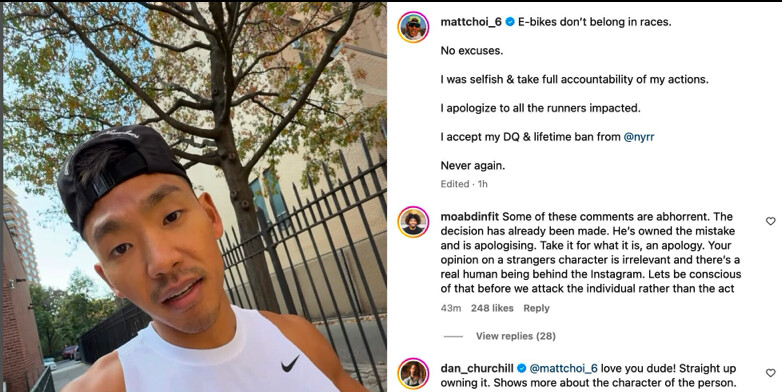
On November 3, Choi, 29, finished the marathon in 2:57, openly floating race rules with the two vehicles beside him. Runners raised an outcry, and by the evening of November 4, New York Road Runners had disqualified him from the race and banned him from future events.Choi said in his apology video that he will not appeal the organization’s ruling.
The actions are likely to have financial implications for Choi. The COO of Runna, a training program and app that was partnering with Choi, wrote in a statement posted on LetsRun’s message boards, “We have decided to terminate our relationship with Matt effective immediately.”
MORE FROM RUNNER'S WORLD ON APPLE NEWS
Login to leave a comment
Should You Pick a Run Club to Make Friends or to Run Faster?
Looking to join your local group after run clubs went viral this year? Here's what to know for the best possible experience.
ALL BRENDAN WILSCH wanted was a slightly different running experience. The 23-year-old New Yorker has spent most of his running life hitting the pavement solo, depending on the activity as an outlet to relieve stress. After spending every outing on his own, he decided to branch out and find some company for a change to add some socialization to his workout.
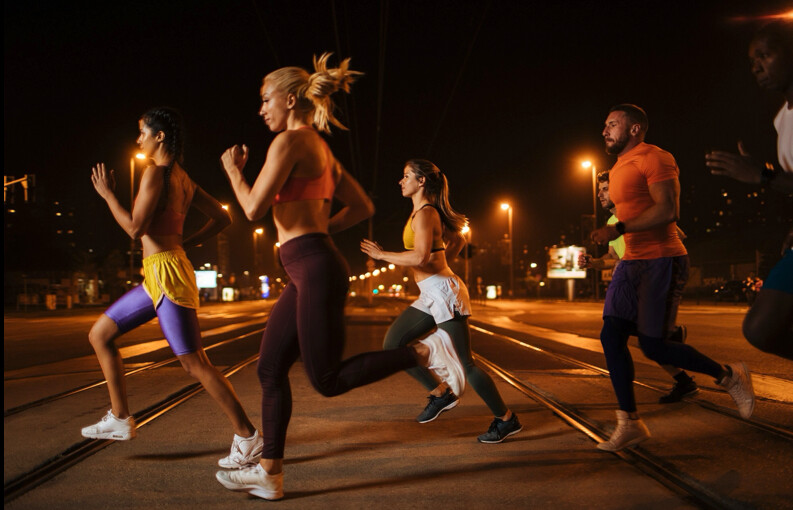
That’s what led him to join the viral run group headed by Lunge, a fitness-focused dating app for which he’d seen promoted posts plastered all over social media. The group showcased hordes of people running the streets, then hitting bars en masse afterwards. To Wilsch, it seemed like a fun way to make friends.

Except the focus on the activity at hand—running—was notably lacking. Wilsch arrived early to the group on a Wednesday evening in July. The group's organizers didn't lead a warmup, so he made time for one on his own. At about 6:50 p.m., the sizable crowd (Wilsch thought about 800 people were there, and an NBC New York broadcast report from July claimed over 1,000 people had RSVP’d to a similar event) was greeted by the run club leaders, Lunge app founder Steven Cole and group fitness instructor Rachel Lansing (Lunge Run Club organizers did not respond to requests for comment on this story). “They welcomed everybody to run club and thanked them for being there and making Lunge turn out to be something bigger than they ever expected,” Wilsch says. “Then they spoke about the app and said, ‘If you see somebody here, and you may not have the courage to go talk to them, download the app, and maybe you'll find them on there.'"
He found that most people in the crowd were outgoing and friendly, even if some seemed hesitant to jump right into mingling mode. After splitting the hundreds of people into a few
This is not how run clubs usually operate, whether they’re in NYC or elsewhere in the world. These groups have broken through run-centric subculture and entered the mainstream; Runner's World notes that Running in the USA lists 968 clubs across the country, and you can find stories about run clubs everywhere from Oakland to rural Australia. Yet it was Lunge that commanded TikTok and Instagram algorithms this summer, especially as young people yearned to meet new friends IRL amidst a “loneliness epidemic.”
There’s some logic to this for outsiders looking in; the groups consist of people sweating and getting their endorphins up doing a healthy activity together. Even better (and unlike group fitness classes at boutique studios or rec sports leagues), clubs are often free to attend or only cost a monthly fee once you become a consistent member training for a specific goal, so you don’t have to worry as much about draining your bank account while simultaneously making a few friends, leveling up your V02 max, and dropping your 5K time.
Not everyone was into this new trend, especially because of what it started to morph into. Apps and groups like Lunge pushed the idea of making
Run Club Best Practices
WHETHER A RUN club prioritizes relationship-building or PR-chasing, it'll almost always have a standard operating protocol that differs greatly from what Wilsch experienced at Lunge. There are rarely groups that large that traverse busy city streets, for one, and most will have more hands-on involvement and organization from leaders to maintain the dynamic beyond show up and jog. The run of show typically includes introductions to the coaches, pacers, and organizers and any need-to-know safety tips or other housekeeping info. Then comes an icebreaker, a warm-up, the run itself (or running workout), a cooldown, hydration, and goodbyes. In commuter cities, there’s also potentially a bag check.
Once runners hit the streets (and even in parks or on public tracks), they shouldn’t just go out in a huge group. There are cars, cyclists, and pedestrians who are on the roads too, and club members will inevitably wind up going at different paces. That’s why many run groups include two kinds of leaders guiding you through the run: pacers and sweepers. Pacers set the tone and time for the group or the smaller groups that break out according to their expected speed
Every run group, whether social-focused or PR-driven, should have structure and safety guidelines (like pacers and sweepers). But run group social dynamics exist on a much more vast spectrum. Some, like Brooklyn Track Club in NYC, are great for prepping runners for races. Others, like Martinus Evans' Slow AF Run Club, focus on inclusivity. Some even affiliate with major brands to allow members to test new gear. In any scenario, bonds are eventually formed by routine and the time spent sharing the experience. It’s a community, and the social dynamics of one persist. Some people like Amir Gamble, a 33-year-old in New York who has been running in the club scene since 2022, join multiple groups. He consistently attends two different runs depending on what he’s looking for—a few miles at a conversational pace to socialize, or focused training and track workouts. He says the groups he’s enjoyed most have established leadership and a welcoming environment, not necessarily the fastest people on the streets.
Gamble’s run sessions are much smaller than Lunge’s massive crowd of nearly 1,000 people. “That’s nearly as many as the race I just did!” he exclaimed, referring to this August’s Brooklyn Mile road race. No matter the organizers’ intentions, he worried about how anyone could safely run on busy city streets and sidewalks in such a large group.
Nearly as pertinent an issue, given Lunge’s stated mission to bring people together, is how hard it actually is to get to no anyone when a run includes hundreds of people. Many run groups count 25 runners max at a normal session, so the workout can start with everyone introducing themselves and participating in an icebreaker activity; it all takes about 15 minutes. When the group swells, that portion of the run requires more time, infringing on the run and your chances at knowing who you're keeping up with on the road. Expecting an immediate connection is like expecting that you’ll set a 10k record the first time you lace up your shoes. Friendships take work.
“Some people chat a little bit after but, usually within 10 or 15 minutes the group kind of dissipates,” Gamble says of his run groups’ social
There are some baseline expectations you should have if you attend a run club. Firstly, the group should center your safety and give you some info about what it takes to be a better runner, according to Zapotechne. “Are they providing electrolytes? Are they helping runners understand what to consider when running in the heat? Or, the safety and etiquette of running in the street in a large group? You run two across [on the street] versus 10,” she rattles off. Even groups without brand partnerships or financial resources should be providing basic running best practice information to their community.
You’ll also want to be mindful of leadership, since you’ll be trusting the coaches with your time and your safety. There are run clubs that are just small groups of friends getting together for a jog and social hour every week without a clear hierarchy—but once the group starts to include people who want to run at different speeds and tackle different goals, it becomes critical that someone takes charge and leads. Ideally, these people have extensive experience with run training and are also actively participating in the run community and culture of the area. Importantly, leaders should also make efforts to establish a safe and inclusive environment within their club. “I think a green flag when it comes to co-ed running groups is when you see both male and female leadership,” Zapotechne says.
Beyond road safety, and with the rise of run club culture via social media in particular, Zapotechne points out the importance of acknowledging boundaries among members. “I did a lot of workshops and training with my staff around what was appropriate and not appropriate, and we had to have (sometimes many) conversations around boundaries when it comes to interactions [with club attendees],” she notes. This includes more obvious things like physically touching, like hugging after runs or unsolicited help with stretching, and murkier territory like when it's inappropriate to send DMs and texts. You should know that if you join a run club and immediately start receiving unsolicited messages—especially from those in charge—something is off. “If you're in a leadership position, you don't slide in the DMs of people that are showing up to your group. That could be a pacer, crew runner, captain or coach. You're not there to date the people who come to your running group,” she says.
A good way to ID a run club that is more focused on sport and movement is to check out the way they communicate their training plans on social media. Do they use terminology like intervals, fartleks
by Men’s Health
Login to leave a comment
When You’re Sidelined, Cross-Train Your Way Back to Health Before a Goal Race
Here’s how Liza Corso made the podium at the Paralympic Games by making her bike and swim workouts as intense as her running regimen.
Leading up to the 2024 Paralympic Games, Liza Corso was pedaling furiously on a stationary bike parked on the patio of her condo in Nashville, Tennessee. In the brutal summer heat, the two-time Paralympian closed her eyes while visualizing the women’s 1500-meter final.
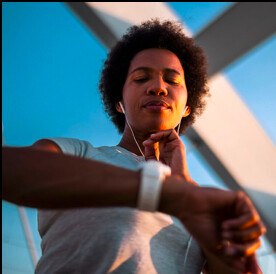
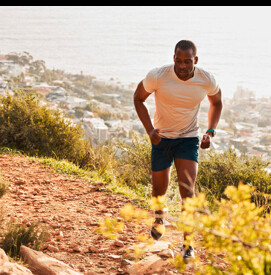
She imagined the purple track at Stade de France and the uniforms of competitors she’s faced before in the T13 classification (athletes with vision impairment). With pop music blaring in her headphones, Corso pedaled faster in anticipation of the biggest race of her career.
On August 31, Corso’s visualizations finally came to fruition. After spending six weeks cross-training while healing a stress fracture in her left femur, the Lipscomb University senior earned bronze in 4:23.45, just over a second behind two-time Paralympic champion Tigist Mengistu of Ethiopia and silver medalist Ezzahra El Idrissi of Morocco. After the race, the athlete from Newmarket, New Hampshire, shared on Instagram she only ran eight miles over the course of six weeks in the lead-up to the event in a brutal buildup that tested her mentally and physically.
So, how did the 21-year-old pull off winning a Paralympic medal while healing from an injury and not being able to run? In an interview with Runner's World, Corso shared the many highs and lows of the cross-training regimen that helped her safely prepare for a standout performance on the world stage.
July 1-July 26: Processing the Injury
About three weeks before the U.S. Paralympic Trials on July 18-20, Corso started feeling pain in her left quad. She went to see the doctor and got an MRI in the area where her quad meets her hip, which showed she had tendonitis. After recovering from a stress fracture in her tibia during the indoor track season earlier this year, the diagnosis was a relief for Corso. “I didn’t want tendonitis, but I was scared of something [in the] bone so I was like, this is the best case scenario. I can keep running through it,” she said.
Though the pain continued to get worse leading up to the national championship in Miramar, Florida, Corso still managed to compete in the women’s 1500 meters and earn a spot on Team USA. But with the pain intensifying, Corso
Though Corso struggled to feel like she was building the same level of fitness, seeing her heart rate reach 160 beats per minute for 90-minute sessions and hover between 175 to 180 for hard workouts ended up being a source of encouragement. “My coach said, ‘Your heart doesn’t know the difference between if you’re running or if you’re biking,’” Corso said.
Late July to August 31: Monitoring the Pain
In the first two weeks after the Paralympic Trials and following her diagnosis, Corso’s main priority was to walk pain free. Working with her physical therapist, she focused on limiting any weight-bearing activity, using crutches when she wasn’t cross-training for the first three days post-diagnosis. While gradually using the crutches less and less, Corso was able to walk pain free without them about two weeks after the diagnosis.
Corso also incorporated blood flow restriction (BFR) into her training. The method involves the application of a cuff (tourniquet) proximally to the muscle that is being trained. The cuff is inflated to a specific pressure with the aim of blocking the blood vessels. The idea is to help strengthen muscles and promote healing, Corso said. She usually put the
“To be able to prove to myself that I didn’t let those [negative thoughts] win, and I chose the harder path—to keep a positive mindset and work through some pretty lonely and draining cross-training sessions—it all ended up being worth it,” she said.
Looking back on her experience this summer, Corso hopes other runners can find their own hard-fought victory amid the healing process, knowing how powerful team support and mental tools can be in difficult situations.
by Runners World
Login to leave a comment
Six-Time Cancer Survivor Runs a Marathon on Every Continent
“Don’t let anyone tell you what you’re capable of. That’s for you to determine.”
For the last mile of the Antarctica Marathon, Jonathan Acott played one song on repeat. Trudging through snow and icy winds on the edge of the world, the runner from Surrey, United Kingdom, listened to Tim McGraw’s hit, “Live Like You Were Dying.” It was a fitting anthem for the six-time cancer survivor in his pursuit to run a marathon on all seven continents.
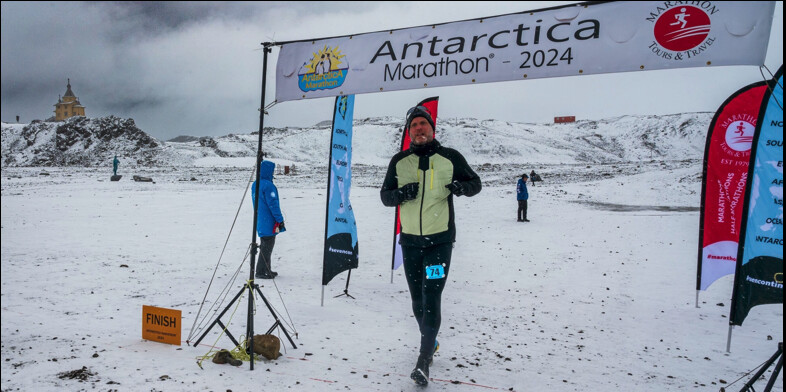
With 500 yards remaining in the race, Acott took his headphones out. He wanted to be fully present for the homestretch of the seventh marathon. Running downhill toward a small tent with a timer next to the Russian research station, the 48-year-old made his way to the finish line area, where a group of volunteers and fellow competitors cheered him on.
His legs sore from the descent, Acott took a moment to compose himself before stepping across the finish line, completing a challenge that seemed unimaginable five years ago. “The photographers are there and they say, ‘Put your arms up!’ But I don’t want to put my arms up. That’s not how I want to celebrate,” Acott said. “I needed to stop at that moment. There’ll be other mountains, but right now I just want to stop.”
Amid the devastation caused by multiple cancers and the arduous healing process that followed, Acott transformed his life, becoming a motivational speaker, coach, and avid runner intent on chasing epic goals. For Acott, becoming a member of the Seven Continents Club—645 men and 358 women who have completed 26.2 on all seven continents—is the latest example of the runner choosing to embrace every moment.
‘If I’m moving, I’m not dead.’
Acott’s cancer journey began 20 years ago. In 2004, he was diagnosed with testicular cancer at 29 years old. His first relapse occurred in 2007 when doctors discovered a tumor in his chest. He relapsed again in 2013 and 2016 and underwent back-to-back retroperitoneal lymph node dissections, a surgery to remove the lymph nodes in the back of the abdomen. In 2017, he was diagnosed with bowel cancer. The following year, doctors discovered he relapsed again. His final surgery in 2018 involved removing his kidney and spleen. The spleen ruptured during the procedure, which required an emergency blood transfusion on top of chemotherapy post-operation.
In a span of 14 years, Acott underwent numerous rounds of chemotherapy (he estimates about seven months total) and six surgeries that left his body riddled with lifelong side effects, including permanent nerve damage and hearing loss. The experience also took a heavy toll on his mental health. At his lowest, Acott suffered from suicidal ideation. Working with a psychiatrist helped him cope and reframe his perspective.
“Life is unfair to everybody. This just happens to be it,” Acott said. “And I can do two things. I can sit there and wallow about how miserable life is, or I can accept that life is difficult and hard and challenging, and you can make the most of it.”
Since 2018, Acott has been cancer free. After the last bout of the disease, his doctors encouraged him to start walking in the recovery process. He also lost his job after being unable to work during treatment. Walking not only gave him time to process his emotions, it also gave him something to work towards. In a few months, Acott was walking up to three hours at a time.
After spending months building up to long distances, Acott decided he wanted to be more efficient by running. “I push because if I’m moving, I’m not dead,” Acott said. “If I’m moving further each day, I am getting healthier.”
Because Acott is immunocompromised and his body takes longer to heal now, he trains every other day. He’s also battling pain most of the time from scars and neuropathy in his feet, among other ailments, and needs to run a conservative pace most of the time. “My body has been through a lot, but it’s still capable of doing so much," he said.
Choosing to live in optimism
In the fall of 2019—15 months after his last surgery—Acott raced the Berlin Marathon as a way to celebrate his comeback. He finished his first 26.2 in 4:58:38. Shortly after, he set out to complete the seven continents challenge.
“I chose to apply myself to making the most of my time because I don’t know how much time I have,” Acott said. “It’s a choice about how you live. You can live in fear, and I am always scared, or I can live in optimism that I’m going to have the best life I possibly can.”
The following year, he ran the Africa leg at the 2020 Marrakech Marathon in 4:45:48. In 2020, he also took up motivational speaking on top of his full-time job as the head of guest experience at a business complex.
After COVID restrictions were lifted, he finished the 2022 Austin Marathon in 5:15:28. The same year, he completed the South America portion by finishing the Curaçao Marathon in 5:09:16, trudging through flood waters on the course.
He ran the Asia leg with a 5:15:33 at the 2023 Dubai Marathon along a desert roadway. Last fall, he covered Australia at the 2023 Perth Marathon with a finishing time of 5:01:40. On March 21, he completed the Antarctica Marathon in 5:38:16.
Looking back on the experience, Acott remembered his surgeon’s warning after the last procedure. The doctor told him he wouldn’t be able to complete the same physical feats he used to do before cancer. Less than two months after completing the global marathon challenge, he’s already training for his next goal—breaking four hours in the marathon.
“Don’t let anyone tell you what you’re capable of,” Acott said. “That’s for you to determine. Find what the best version of you looks like, and make it happen.”
MORE FROM RUNNER'S WORLD ON APPLE NEWS
by Runner’s World
Login to leave a comment
Comedian Leslie Jones Will Be A Commentator At the Paris Olympics
The former Saturday Night Live cast member is a major fan of Team USA and will be covering her third Olympics as “chief super fan commentator.”
Comedian Leslie Jones will be an official commentator for the 2024 Paris Olympics, rejoining NBCUniversal’s coverage as “chief superfan commentator.” The former Saturday Night Live cast member will provide segments for a variety of events on NBC, Peacock, other NBCU channels and platforms, and will be posting updates on her own social media accounts as well.
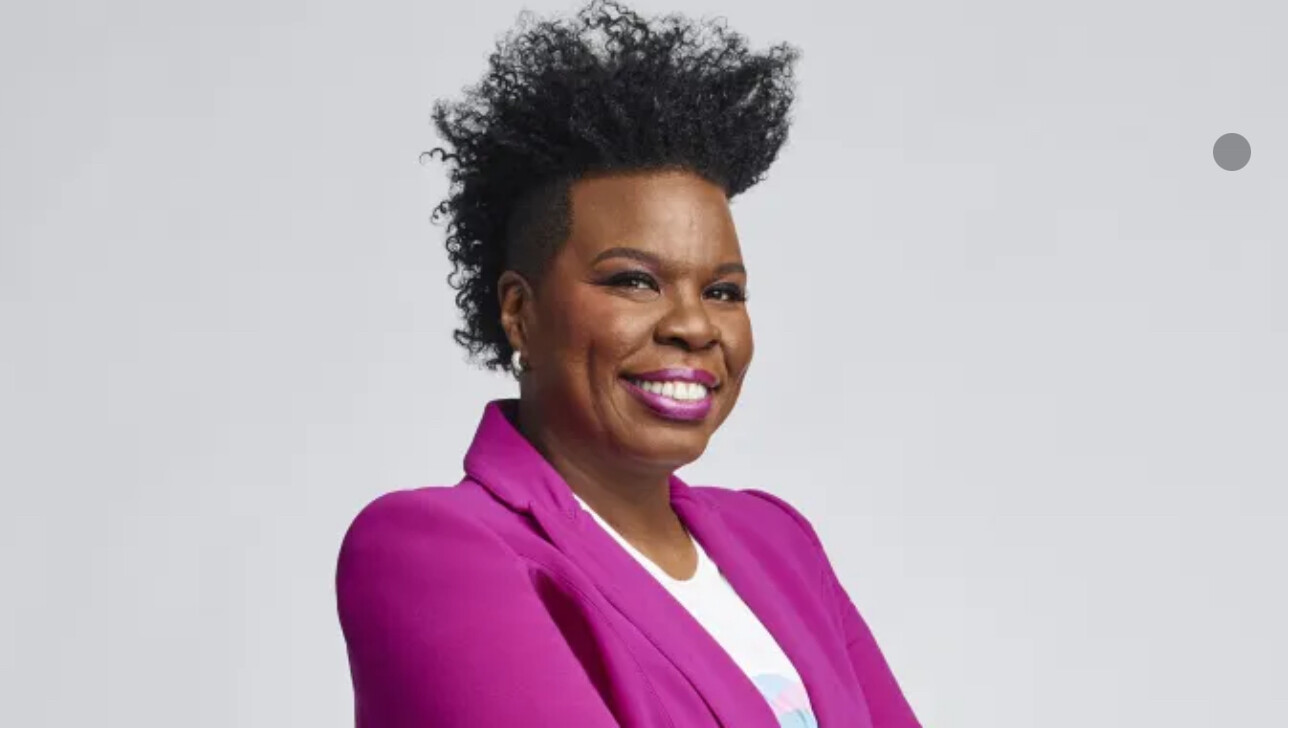
“I’m pumped to be heading to Paris to report on Team USA,” Jones said in a statement. “These athletes train for years to compete at the highest level, and I’m so excited to be back in the seat with NBCUniversal, cheering for Team USA and serving as chief super fan commentator. USA!! SLAY ALL DAY!! LET’S GOOOOOO!!”
Jones was first invited to become a part of NBCU’s Olympic coverage in 2016 after she live-tweeted day one of the Summer Games in Rio, offering hilarious commentary as she rooted for Team USA. She also provided commentary for the 2018 PyeongChang Olympics.
Showcasing the energy, enthusiasm, and comedy Jones brings to track and field coverage, Citius Mag posted a reminder of the time in 2021 that the Ghostbusters actress recorded herself discovering the steeplechase event, spouting expletives and yelling in disbelief, “Is that like a roadblock they jumpin’ over? That’s not a hurdle! Okay, so like, they horses? I’ve never seen no sh*t like that.”
“We are excited to welcome Leslie back to our Olympic team,” said Rebecca Chatman, coordinating producer for NBC Olympics. “She is a passionate fan of Team USA, and we can’t wait to hear from her at events and sites across Paris.” The Olympics will take place from July 26 through August 11, and NBC will include live events in its daytime coverage and a mix of highlights and other segments in primetime. In an unprecedented scope of programming, Peacock will be streaming every sport, including live coverage of all 329 medal events.
MORE FROM RUNNER'S WORLD ON APPLE NEWS
Login to leave a comment
Jenny Simpson Targets NYC Half
For the first time in her running career, Jenny Simpson faced a decision that she’d never considered in a race. At mile 18 of the 2024 U.S. Olympic Marathon Trials, her debut at the distance, the most decorated U.S. 1500-meter runner in history made the difficult choice to drop out of the competition on February 3.
The marathon leaves runners vulnerable to a number of challenges—nutrition issues, tough terrain, the rigors of high mileage—which can derail even the most experienced runners on a bad day. When Simpson, 37, started cramping with 16 miles left in the race, the setback shocked her. After spending months transforming her body from an explosive middle-distance runner to a long-distance athlete on the roads, Simpson felt ready to take on 26.2, which made the race in Orlando, Florida, all the more confusing.
“One of the beautiful things about running is that so often what you put in is what you get out, but the [Olympic Marathon Trials] wasn’t that way at all,” Simpson told Runner's World.
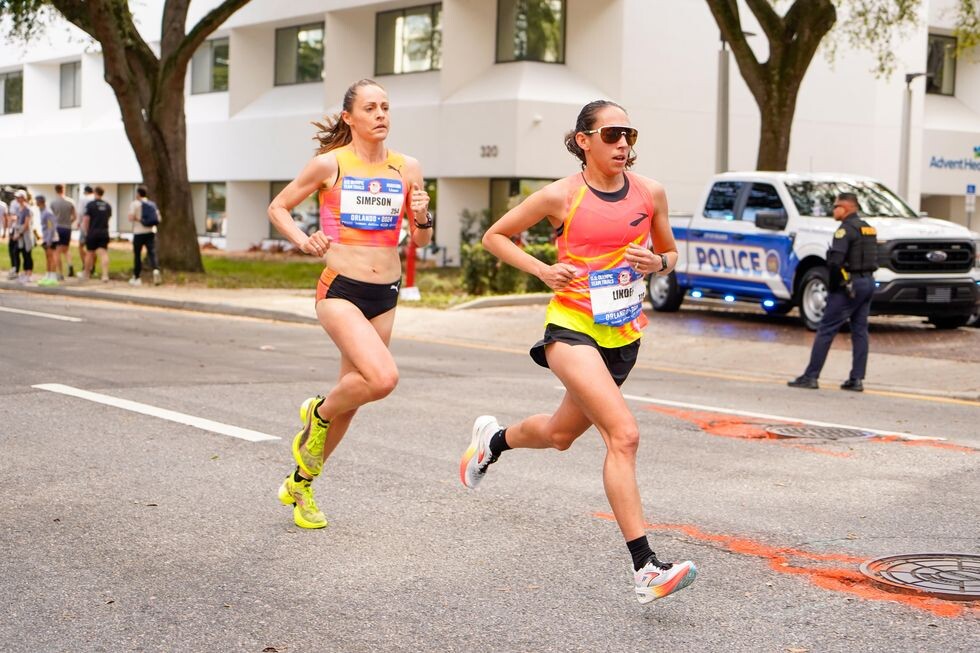
After the race, Simpson took time to reflect. For two days, the three-time Olympian relaxed with her family in Oviedo, Florida, her hometown located just outside Orlando. In between playing with her nieces and enjoying home-cooked meals, she expected to feel sad following the race. But to her surprise, that feeling never came. Instead, Simpson felt motivated to find another opportunity to show her fitness.
While riding in an Uber on the way home from the Denver airport to her house in Marshall, Colorado, Simpson sent a text message to a contact at the New York Road Runners (NYRR), asking if there were any spots available to race the NYC Half. The event in New York City on March 17, one of 60 adult and youth races organized by NYRR throughout the year, will include Simpson in her third half marathon.
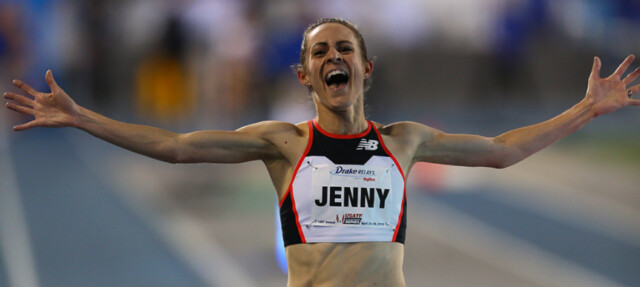
Coming out of a tough few years of personal and professional hardships, Simpson has a new perspective on disappointment. For her, the Olympic Trials is just another exercise in the importance of having faith in the process and her ability to bounce back.
“The race didn’t turn out the way I wanted, but I still believe in myself,” Simpson said. “I’m up at the plate, gripping the bat and I swung once, totally missed, but I’m gonna swing again because I believe I’m ready for it.”
Marathon metamorphosis
After spending well over a decade dominating American middle-distance running and collecting medals on the global stage—including world championship gold (2011), two silver medals (2013 and 2017), and Olympic bronze at the 2016 Rio Games—Simpson’s streak of making U.S. teams ended during the pandemic. In 2021, she made the finals of the 1500 meters at the Olympic Trials, but she finished 10th.
That fall, she started to transition to the roads with her first 10-mile race. But at the end of 2021, her life was upended by injury, the conclusion of a longtime sponsorship with New Balance, and a devastating wildfire that she and her husband, Jason, narrowly escaped on December 30, 2021. While their home was spared, most of their neighbors’ houses were destroyed. For three months, the couple was displaced while damage was repaired.
By the spring of 2022, things started to turn around for Simpson. Her sports hernia was healing, she and her husband returned to their home, and she was in conversations with shoe companies. That fall, she signed with Puma and shared her intent to focus on the roads.
In January 2023, she made her debut in the half marathon with a 1:10:35 in Houston. That summer, she announced her plans to race the U.S. Olympic Marathon Trials, her first 26.2.
In collaboration with her longtime coaches, Mark Wetmore and Heather Burroughs, Simpson threw herself into the event. She built up to 100-mile weeks during the training cycle, worked with a nutritionist on mid-race fueling, and spent three weeks in Orlando acclimating to the heat in preparation for the championship.
Lessons learned
On race day, Simpson started out at a pace that felt manageable (she ran between 5:23 and 5:38 per mile through the first 10), resisting the urge to go with the blazing pace set by the leaders. Just past halfway, Simpson got a side stitch, and then she started cramping, first in her toes and then in her calf and hips. “Over the course of a few miles, I went from being able to race, to feeling like I was in trouble being able to move through my normal range of motion,” she said.
Simpson tried to double down on hydration at the aid stations, but the muscle cramps got worse as the race progressed. While battling through the setback, Simpson ultimately decided to accept the loss. For an athlete who is used to being on the podium, dropping out was an agonizing choice, but the crowd’s support on the course helped her cope.
“It’s one thing for people to say, ‘We’re proud of you no matter what,’ and I’ve heard that my whole life. I’ve been the woman who can make the team,” Simpson said. “To actually be in the position where I’m not doing well and I’m not making the team and everyone is good on that promise to be proud of me no matter what, I’m just so grateful.”
Now almost three weeks out from the race, Simpson and her team are determining takeaways from the competition. After spending many years following a set schedule of Diamond League competitions and international championships on the track circuit, Simpson wants to choose races that excite her. Right now, that means conquering a half marathon through Times Square and Central Park.
“2024 for me is gonna be about embracing the freedom to dial in on the experiences that I want to have before this is all over,” Simpson said. “It’s not going to last forever, and that doesn’t mean I’m retiring tomorrow or anytime soon, but we’ve been through some tough years, and I still think life is beautiful.”
by Tailor Dutch
Login to leave a comment
United Airlines NYC Half-Marathon
The United Airlines NYC Half takes runners from around the city and the globe on a 13.1-mile tour of NYC. Led by a talent-packed roster of American and international elites, runners will stop traffic in the Big Apple this March! Runners will begin their journey on Prospect Park’s Center Drive before taking the race onto Brooklyn’s streets. For the third...
more...He’s Back! Meb Keflezighi Announces Return to Boston Marathon
Meb will line up to mark the 10th anniversary of his 2014 victory.
After a decade of one of the most famous wins in the Boston Marathon, Meb Keflezighi is returning.

On Wednesday, the two-time World Marathon Major winner and 2004 Olympic silver medalist confirmed that he will compete at the Boston Marathon in April. He is returning to mark the 10th anniversary of his 2014 win, where he became the first American man to win since 1983. It was an emotional year for many, as it was also the first running of Boston since the 2013 bombings.Keflezighi, 48, announced via X that he’ll run the marathon in support of his MEB Foundation, which supports health, education, and fitness worldwide.
“I am lacing my shoes in Hopkinton and running the Boston Marathon on April 15, 2024,” Keflezighi said in the announcement, to a fitting soundtrack. “10 years ago I had the great honor to put the victory for all of us among the 36,000 others who want to make a difference at the streets of Boston. Boston strong.”
Keflezighi has been absent from the race since he ran his last professional Boston Marathon in 2017 before finishing his competitive career at the 2017 New York City Marathon. Along with his Boston win, Keflezighi won New York in 2009 and earned a silver medal at the 2004 Olympic games in Athens, making him the only man to win the Boston and New York marathons and an Olympic medal in the marathon.
Since his big win in 2014, no American has run a time faster than his 2:08:37 effort.
MORE FROM RUNNER'S WORLD ON APPLE NEWS
by Runner’s World
Login to leave a comment
Can You Harness Anger to Reach Performance Goals?
Focusing on a mix of emotions, including negative ones, could have an effect on your running, according to a recent study.
A series of studies show that anger, despite people viewing it as a negative emotion, can actually help you tackle challenging goals.
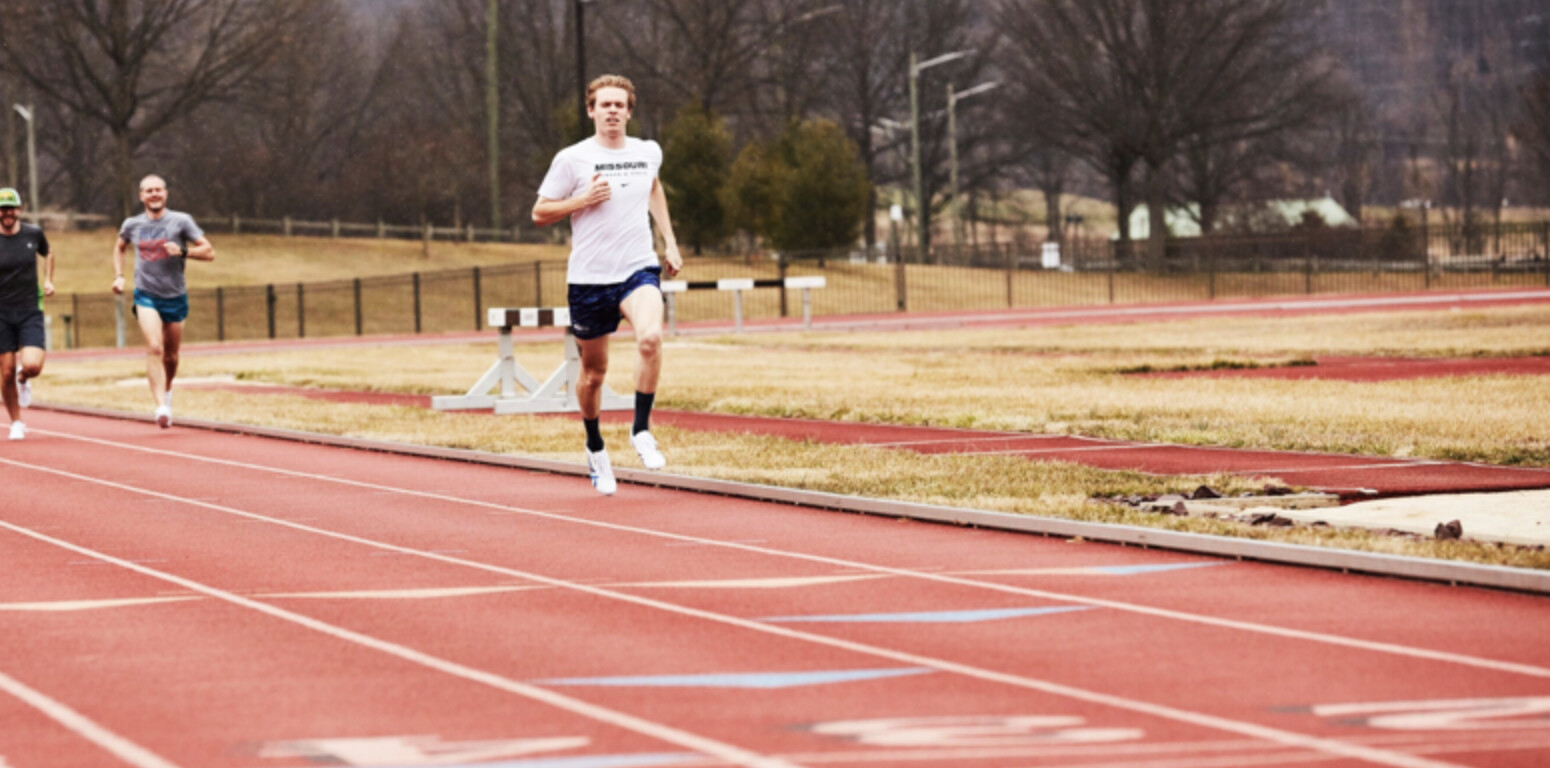
Experts suggest instead of trying to combat anger by thinking positive, using that feeling as fuel for your runs.
Tapping into emotional health and visualization isn’t a new concept in sports science. For example, one study published in 2020 suggests positive emotions, like hope, can give athletes a better sense of control and less anxiety during competition. But recent research suggests it isn’t just the uplifting feelings that can make a difference. Even emotions considered negative, like anger, may have a place in reaching performance goals.
The new investigation published in the Journal of Personality and Social Psychology notes that people often believe a state of happiness is ideal, but recent studies have shown that a mix of emotions that include negative states can result in the best outcomes.
To better understand how this blend might work for reaching goals, including athletic aims, researchers reviewed experiments on emotions that involved more than 1,000 participants and those that involved eliciting an emotional response or a neutral state. Emotions ranged from amusement and desire to anger and sadness.
After identifying their emotional state, participants would do a specific task, such as solving word puzzles or trying to achieve a high score on a skiing game. In all of the experiments, anger consistently improved performance compared to a neutral condition or more positive emotions, according to lead author Heather Lench, Ph.D., professor in the department of psychological and brain sciences at Texas A&M University.
That seemed to be true most often when the goals were especially challenging. For example, when two versions of the skiing game were used—one with a single, easier task like doing a jump and another that involved avoiding flags on a difficult slalom course—anger didn’t affect jump performance, she told Runner's World. But when it came to mastering the tougher course, anger seemed to spur participants into being more focused, and even having faster reaction times.
“The results here demonstrate that anger may increase effort toward attaining a desired goal, and that could result in greater success,” Lench said. “Another takeaway is that it may be helpful to change your perception about the use of negative emotions.”
She said that many people see negative emotions like anger as maladaptive—such as a feeling that allowing yourself to be angry during a run will cause you to be distracted or to slow down—but the opposite could be true. Harnessing that emotion and using it to spur your athletic pursuits could be a way to maintain motivation and to tackle particularly challenging goals, according to Lench.
One important distinction here is between anger and aggression, although those are sometimes perceived as synonyms. Anger is an emotion, while aggression is a behavior or action that can be destructive or violent, according to Gregg Henriques, Ph.D., clinical psychologist and author of A New Unified Theory of Psychology.
He told Runner’s World that it can be tricky to feel the emotion without having it fuel the behavior. A technique for that is to simply identify an emotion as it’s happening and visualize using that for a specific goal (like running a quick pace for your next workout!) rather than a catalyst for hostility, he suggested.
“Sometimes, anger is a response if you perceive obstacles to be overwhelming or insurmountable,” added Lench. “Using that anger instead of trying to cover it with positive emotions may be a better strategy for overcoming those obstacles and reaching your goals.”
by Runner’s World
Login to leave a comment
For 48 Years, Robert “Raven” Kraft Ran the Same Eight Miles. Every Single Day.
Raven has organized his life around a run streak on Miami’s South Beach, inspiring countless runners along the way. Now, it’s coming to a close.
When Raven answered his landline, he told me he was “hanging in.” Me, too, I told him, thinking about the impending pickups for my three kids and a long list of to-dos. But no, he was hanging in, engaged in an isometric hang to help ease some of his back pain.
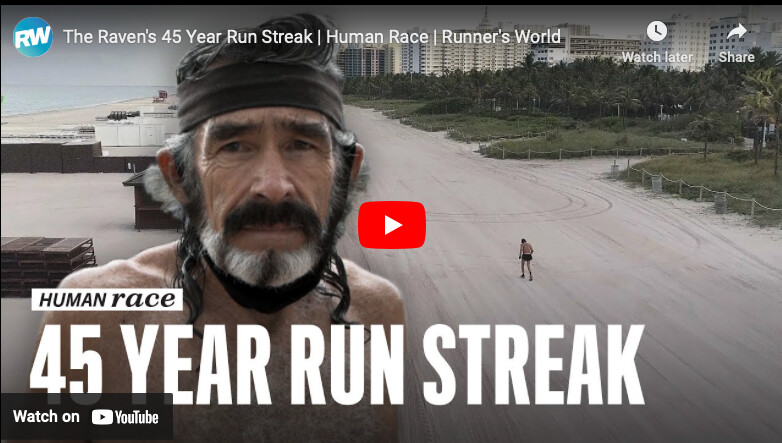
It’s that unrelenting back pain, which he thinks started in earnest after helping a fellow runner move in 1995, that has driven Robert “Raven” Kraft, 73, to scale back his eight-miles-on-the-beach run streak. Since 1975, Raven has run an out-and-back eight miles on South Beach in Miami, starting at the 5th Street Lifeguard Station.
(In 2020 he spent two weeks running on the roads, which nearly destroyed his ailing back. Local authorities gave him the okay to return; they told police that Kraft was patrolling the miles of empty beach amidst the pandemic.)
“My body is forcing me to do this,” Kraft told me of his plans to run five miles instead of eight. “I truly don’t want to, but my streak will continue, as the longest in the world on the sand.”
Kraft started running when he was 19. He wrote a song during his time trying to make it as a country artist in Nashville, but he says he didn’t know anything about copyright. Later, he heard the song on the radio, played by another artist.
“I had a few angry years,” Kraft previously told Runner’s World. A friend encouraged him to start running. That friend dubbed Kraft, “Raven.”
“You always wear black, you’re up late at night, and you write sad songs,” Kraft recalled what his friend said.
But running helped. He worked his way up from a couple of miles to five miles to eight miles. On New Year’s Eve 1975, he vowed to run every day. This New Year’s Eve will mark 49 years.
The streak is going to look different. Sunday, November 5, was the last day Kraft ran his eight-mile route. I can hear the pain in Kraft’s voice when he talks about just missing the 49-year-mark of running eight miles.
“It breaks my heart.”
But eight miles was always arbitrary, Kraft admits; it’s not even his favorite number.
“Everyone can do a 10K. Seven was too short. Nine was too long,” he says, sounding like a less chipper Goldilocks.
On Sunday, nearly 40 runners, including a 5- and 8-year-old, joined Raven for his last eight-miler.
“No one said anything negative to me, like, ‘So you’re cutting down to five miles?’” Kraft says. Anyone who knows him knows this decision was not taken lightly.
The shorter run will free up more than an hour a day—I hate to stop running eight, but running five might keep me alive, Kraft says, pointing out, poetically, that five miles is (just about) eight kilometers.
Less time running means Kraft can spend more time writing and performing music.
That’s all he’s ever wanted to do: run on the beach, work out, and write music. Last month he came out with his first album: An Unkindness by Raven and the Dark Shadows. (An unkindness is a flock of ravens, by the way.) Dave Abbruzzese of Pearl Jam is featured on the song, “Dracula.”
“My whole life has been built around [this streak],” Kraft told me. “I’ve had to give up a lot of things, weddings, parties. I have a strict schedule. I have to get back here. I’m always looking at my watch.”
It was at this moment that it hit me; this wasn’t just a get-the-miles-where-you-can daily run streak. Kraft starts at 5:30 p.m. (4:30 p.m. during standard time) from the same spot and runs the same eight-mile route. I asked him if he had any regrets.
He paused.
“Unlike you, I have no family. No kids. I didn’t make a whole lot of money working security
Kraft has run with nearly 3,700 people over the past five decades. He keeps a log, and everyone he runs with gets a nickname. And just because Kraft has to cut back to five miles, to become an official Raven Runner, anyone who joins him has to run the full eight. (“Sorry,” he says.)
Kraft says his daily runs have taught him to be more accepting.
“I’ve changed,” he says. “I’m easier to be around. Running has been my savior. I don’t want to give it up. I was shy as a kid. A loner. An outcast. Running got me out of my shell and brought out the best in me.”
Death aside, Kraft says there might be one reason he’d break his streak: accepting a Country Music Association Award in Nashville.
“I’ve never been on a plane,” he says. But then he pauses.
“Maybe I’d send somebody in my place. Or do a video thing. Zoom or something.”
MORE FROM RUNNER'S WORLD ON APPLE NEWS
jobs. I’m hoping my songs might change that.”
And except for the debilitating spinal stenosis and sciatica, “I’m in pretty good shape.” Kraft says he felt less worse after Monday's five-miler, which is a good sign. He’s already considering running eight miles on special occasions, like the 49th anniversary on December 31. What’s more, perhaps, is that Kraft felt the burden of the eight-mile streak being lifted.
by Runner’s World
Login to leave a comment
Teacher Dribbles Way to Guinness World Record Marathon Finish
Maria Babineau dribbled a basketball for 26.2 miles, finishing the Toronto Waterfront Marathon in her debut at the distance.
Over the weekend, the Toronto Waterfront Marathon saw its fair share of excitement, with Ethiopia’s Buze Diriba Kejela winning the women’s race with a personal-best time of 2:23:11 for the women’s race, while Elvis Kipchoge Cheboi took the win in the men’s field with a time of 2:09:20.
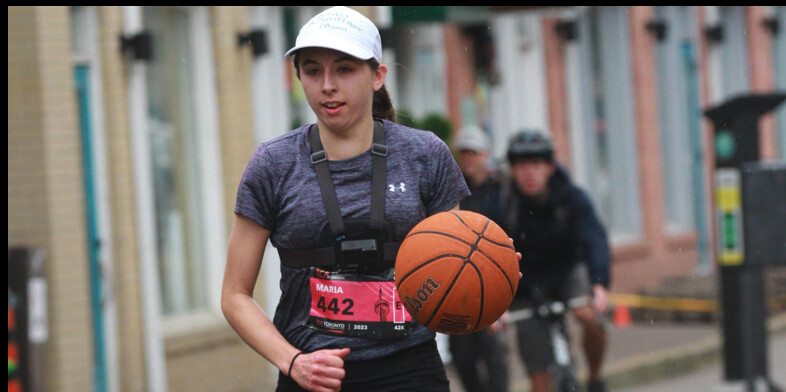
While no course records were broken, the event did see an incredible 20 Guinness World Record attempts, with everything from the fastest half marathon in a five-person costume to the quickest half marathon by a female dressed as a crustacean. But one impressive attempt was a total slam dunk: elementary school teacher Maria Babineau broke the record for the fastest female running a marathon while dribbling a basketball, finishing the race in 3:57:40.
My students knew I loved basketball, so they encouraged me to break a basketball world record,” Babineau told Runner's World. “The enthusiasm the students shared for attempting the record was amazing. I wanted to show them that anything is possible.”
Video from the race shows Babineau running while dribbling the ball, alternating between her hands as she confidently breezed past her competition. “During the marathon, there were points of the race where my arms were cramping a little,” she said. “The cheering of the spectators and the positive comments from all the runners around me are what helped me get through it.”
The race, surprisingly, was Babineau’s first marathon, completed after about seven weeks of training. “During my training, I ended up having quite a few dogs try to steal the basketball,” Babineau said. “I also had to practice wearing a GoPro on my chest to record the attempt.”
The record attempt, which Guinness is still reviewing, was for more than just cheers from the crowd—Babineau ran in support of a charity she volunteers with, Ronald McDonald House Ottawa. Her goal was to raise $1,000 CAD to help the organization (which provides a home for families with sick children) buy an adjustable basketball net so families can play together. Babineau donated $1 for every kilometer she ran as part of her training, and ultimately, she raised more than her goal, presenting the basketball net and her record-achieving basketball to the house.
Marinella Satta of Italy set the previous record for the fastest female dribbling a basketball in 4:28:11 during the Giro D’Italia Run in Turin, Italy, back in 2010, finishing 25th out of 38 runners.
For any men who feel inspired by this feat, the current Guinness record for the fastest marathon while dribbling a basketball for men was set in 2021 by Steffan Reimer, who ran a 2:50 marathon while bouncing the ball along the course.
by Runner’s World
Login to leave a comment
Reusable Aid Station Water Cups Are Gaining Traction at Races
Hiccup is a service that has been used at Grandma’s Marathon and the Chicago Marathon start line. Now it’s partnering with NYCRUNS, which hosts over 75,000 runners each year.
Race organizers around the world have been making strides in recent years to reduce waste—from making T-shirts and medals optional (or eliminating them completely), to providing digital-only swag bags, to offering compostable or reusable water cups. But there’s still a long way to go to make running events more environmentally sustainable.
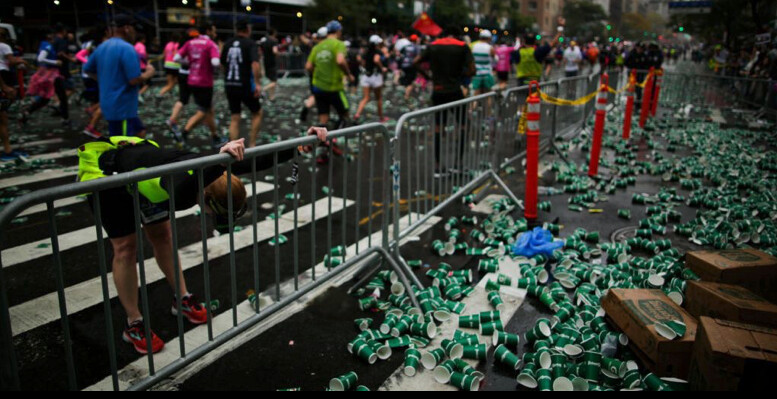
In 2020, Kristina Smithe started her reusable cup service, Hiccup, because she was astounded by the amount of waste she saw at running events and wanted to do something about it. Hiccup provides 8-ounce silicone cups at race aid stations as an alternative to disposable cups, and washes and sanitizes them afterwards so they can be used for future events. So far, Hiccup has partnered with races in nine states, for small town turkey trots to major events like Grandma’s Marathon and the Chicago Marathon start line.
Now, thanks to a new partnership with NYCRUNS, Hiccup is making its way to one of the biggest running cities in the world, adding the Big Apple to the list. The running group’s first event using the cups will be the Haunted Island 10K and 5K races NYCRUNS is hosting on October 28 and 29 on Governors Island.
In an email introducing the Hiccup concept to participants, the NYCRUNS team included instructions: “Do not take the cup away from the water station and do not keep it as a souvenir (as tempting as it may be!) ... Toss the cup in one of the designated bins when you are finished.”
NYCRUNS estimates that by using Hiccup, they will prevent over 10,000 cups from going to the landfill at their Haunted Island races alone. There’s heaps more work to be done for the running industry to become more sustainable, but the impact of just this one New York City racing org switching over to reusable cups is not negligible. NYCRUNS hosts about 20 running events per year for over 75,000 athletes. All those cups and all that rubbish adds up.
MORE FROM RUNNER'S WORLD ON APPLE NEWS
by Runner’s World
Login to leave a comment
Does Sunscreen Expire? Experts Answer Your Qs
Here’s how to tell if your sunscreen needs a refresh. Plus, the best ways to store it for optimal efficacy.If you’re like many runners, you might have the same bottle of sunscreen sitting in your bathroom cabinet for longer than you can remember. And, like many, you probably face a common dilemma: Keep or toss?
The simple verdict: Sunscreen definitely expires, so toss yours if it’s past its prime.
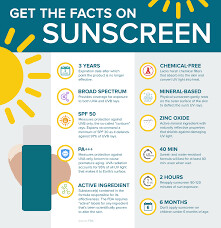
MORE FROM RUNNER'S WORLD ON APPLE NEWS
According to the Skin Cancer Foundation, slathering on sunscreen every day can prevent premature skin aging and slash your melanoma risk by 50 percent. (ICYMI, melanoma is the most dangerous form of skin cancer.) But sunscreen that’s passed its expiration date won’t do your skin any good.
As runners, we log more hours in the sun than most people, which puts us at greater risk for sunburn and skin cancer. We owe it to our skin (and overall health!) to give it the best sun protection possible.
Here, we explain why sunscreen expires and how to tell if yours has.
Why does sunscreen expire?
Sunscreen contains active ingredients that shield your skin from UV rays. In chemical sunscreens, you may find ingredients such as octisalate and/or avobenzone. According to the Skin Cancer Foundation, these ingredients absorb UV rays like a sponge before they can do any damage. In mineral sunscreens, common ingredients include titanium dioxide and zinc oxide, which physically block the rays before they enter your skin.
Over time, these active ingredients break down. When this happens, they become less effective at protecting your skin from harmful UV rays, leaving your skin vulnerable to sunburn and damage, says Cameron Rokhsar, M.D., the founder and director of the New York Cosmetic, Skin, and Laser Surgery Center and an associate clinical professor of dermatology at Mount Sinai Hospital in New York City.
Therefore, it’s essential to keep tabs on your sunscreen’s status. Using an expired product is not only pointless, but it can give you a false sense of security during sunny runs.
Are there signs to look for that show my sunscreen has expired?
“Unfortunately, there’s no reliable way to test if a sunscreen has expired,” says Shari Lipner, M.D., Ph.D., a dermatologist with Weill Cornell Medicine in New York City. However, some sunscreen manufacturers print an expiration date on the bottle or label.
For products that don’t have that expiration date (or if you threw the packaging away), know that all sunscreen manufacturers have to prove that their product will remain effective for at least three years, per the U.S. Food and Drug Administration (FDA). If that’s the case, write the purchase date on the bottle to track how long you’ve had it, Lipner suggests. Consider your sunscreen expired at the three-year mark.
Sunscreen can also expire earlier if exposed to heat, humidity, and sunlight. According to the Cleveland Clinic, chemical sunscreen is especially vulnerable because the active ingredients tend to be more unstable when exposed to heat than mineral sunscreen ingredients.
The takeaway? Don’t rely on expiration dates alone. “If you notice any changes in the consistency, color, or scent of the sunscreen, it could indicate that it’s expired or undergone some degradation, and it’s best not to use it,” Rokhsar says.
For example, many chemical and mineral sunscreens contain inactive ingredients that help the formula spread evenly. When these ingredients break down, you may notice that the sunscreen is gritty and/or tough to rub into your skin, according to the Cleveland Clinic.
You may also experience skin reactions like acne and rash when inactive ingredients degrade, Rokhsar says. Plus, many sunscreens contain preservatives. When these deteriorate, bacteria and fungi are more likely to grow inside the container, leading to skin infections and acne, the Cleveland Clinic notes.
So, if you start breaking out or developing rashes after using your sunscreen, it’s time to get a fresh bottle.
What’s the best way to store sunscreen?
“To extend the life of your sunscreen and ensure its effectiveness, store it in a cool, dry place,” Rokhsar says. In other words, don’t leave it in your car during hot summer runs or on top of your towel during beach days. Excessive heat breaks down the active ingredients that protect your skin from harmful UV rays, Rokhsar explains.
A better approach: Apply sunscreen before leaving home so you don’t have to keep it in your car during your run. “If you’re at the pool or beach, I suggest wrapping [the sunscreen] in a towel,” Lipner says. You can also stash it under some shade or keep it in the beverage cooler.
Also, keep the container tightly closed to prevent exposure to air, “which can also contribute to the breakdown of the active ingredients,” Rokhsar says.
So, can you use expired sunscreen?
Using sunscreen that’s gone bad won’t protect your skin from the harmful UV rays that cause skin damage and cancer. You’ll likely irritate your skin to boot. So, toss your sunblock if it’s passed its expiration date, it’s been three years since you purchased it, or you notice changes to the product or your skin.
You can prolong the shelf-life of your sunscreen by storing it in a cool, dry place. However, you don’t need to worry about expiration dates if you use sunscreen the way you should. “If you’re using sunscreen properly, which means applying a generous amount [or about a shot glass’ worth] and reapplying frequently, such as after swimming or sweating, a bottle shouldn’t last more than a season,” Rokhsar says.
by Runner’s World
Login to leave a comment
Spice Up Your Typical Running Route With These 7 Variations
From out-and-back challenges to artistic ventures, explore the most common types of running routes that will ignite your passion.
There is nothing wrong with having your favorite running route—you can run it mindlessly and you already know the distance, so you shouldn’t encounter any surprises. But there are even better reasons to mix up your running route planning. New routes will boost your motivation, bring a new wave of inspiration, and help you avoid burnout. What’s not to love?
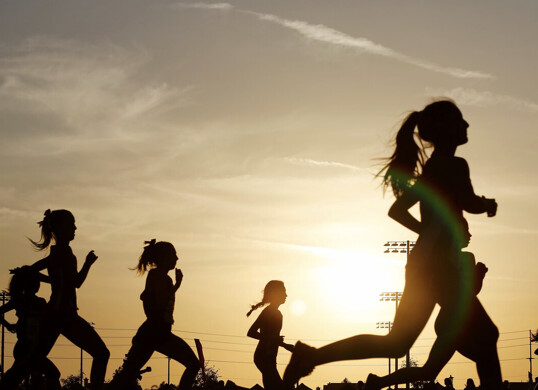
So with that, let’s spice up your running and discuss some of the most common types of running routes that you can do almost anywhere.
Out and Back
Choose a great starting and end point. While your home may be the most convenient spot, riding your bike or driving to a different starting point may be a whole lot more exciting.
While there is nothing wrong with running even splits for your out and back, to mix it up, maybe challenge yourself to run the return route faster (or whatever other challenge you’d like to tackle). Increasing your turnover/speed will bring more of a challenge to the experience. Think “what goes up, must come down,” and as you make the turnaround, lean more forward in your running with a mindset of finishing strong.
Lollipop
This route is an intersection where a loop meets an out-and-back. If you’re not a fan of turning on your heel and running straight back, choose a route with a little loop at the end of it. It can be a detour to a convenience store for a sports drink, a fountain, or simply a place that speaks to you.
Figure Eight or Four-Leaf Clover
These routes involve running four loops or out-and-backs, all returning to the same starting point. Home would be an excellent base for this one, giving you the opportunity to get a sip of a drink or use the bathroom before going back out.
This particular option may be great for a day where you’re less focused on your mileage or pace, and lean more into the pretty drawing your route will create once you finish. Have you ever seen runners uploading completed runs depicting all kinds of amazing pictures? Get artistic starting with this route, who knows where it will take you next!
Running Every Street in Your Neighborhood
Determine an approximate area or neighborhood you’d like to cover, and then try to run every street within. This style will really help keep your mind engaged as you plot how to get to the street or alley you have not run yet.
Rolling Hills
Hills pay the bills, baby! Sticking with hills is the best race currency, so for this one, choose a route that is as hilly as it is flat-ish.
Chart a course that will include hills along the way. This includes both uphills and downhills with winding roads along some flat terrain. Lean into the uphill and crest the hill standing tall, then settle back into any flat, followed by running downhill with control. Allow gravity to take over some of the control. I wasn’t always a fan of this type of route, but after maturing and seeing the positive impact of hill training during my races, it’s now my favorite type. Respect and welcome hill training.
Set Up a Rule
Before you head out the door, think of a rule for your run: It could be turning left whenever you see a red light, or maybe turning right every time a car of a certain color passes by you. The goal is to have fun with it.
Loop +Turned Into a Tour
This one is as great to put to use in your neighborhood or city as it is while you’re visiting a new place. Plot some stops worth seeing or visiting as you do a full roundabout.
Using software like Garmin Connect, Coros, MapMyFitness, Runkeeper, or Strava, you can simply input the goal distance and direction (N, S, E, W), and these technologies will return you a route in seconds. Make sure to double-check the routes go through parts of town where you feel safe running and preferably away from busy traffic. There is usually a toggle heatmap feature that will follow routes frequented by others.
Now for the fun part, pick your milestones when you’re in a new location: From murals, historic markers, convenience stores, and restaurants to a popular park, outdoor area, and entertainment or theater district, there are many ways to add life to this loop option. Have fun with it!
MORE FROM RUNNER'S WORLD ON APPLE NEWS
by Runner’s World
Login to leave a comment
How Your Feet Recover (or Don't) After a Marathon, According to Research
New research highlights the type of damage that may occur from 26.2 miles of impact.
Participating in marathons can be a thrilling accomplishment, but it’s not always easy on the body—research has highlighted that marathon runners can be prone to serious soreness depending on muscular strength levels, as well as hamstring damage, for example. But what does it do to your feet? New research in the Scandinavian Journal of Medicine & Science in Sports finds that the larger muscles in the feet may show damage in the form of swelling and soreness for a week or more after a race.
To determine how feet are affected, researchers recruited 22 college runners who ran at least two to three times per week, and who were registered for the Mt. Fuji International Marathon in either 2019 or 2021. They used magnetic resonance imaging to measure the transverse relaxation time of the intrinsic and extrinsic muscles at four different time points: before the marathon, as well as days one, three, and eight after marathon completion.
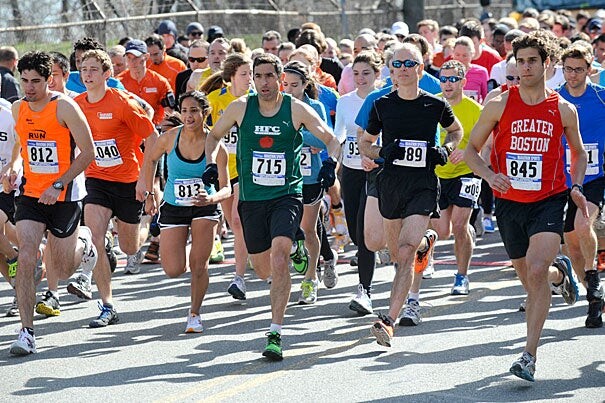
To help put that into layman’s terms: The intrinsic muscles of the foot originate and insert within the foot itself, while extrinsic muscles originate in the lower leg and connect to the foot by way of the ankle. Both types of muscles stabilize the inner arch of the foot while working to move the foot during walking and running. Transverse relaxation time, also known as T2, is a measure of muscle damage.
When comparing the T2 values, researchers found significant damage for one of the intrinsic muscles and three extrinsic muscles the day after the marathon, with values fluctuating over the course of eight days.
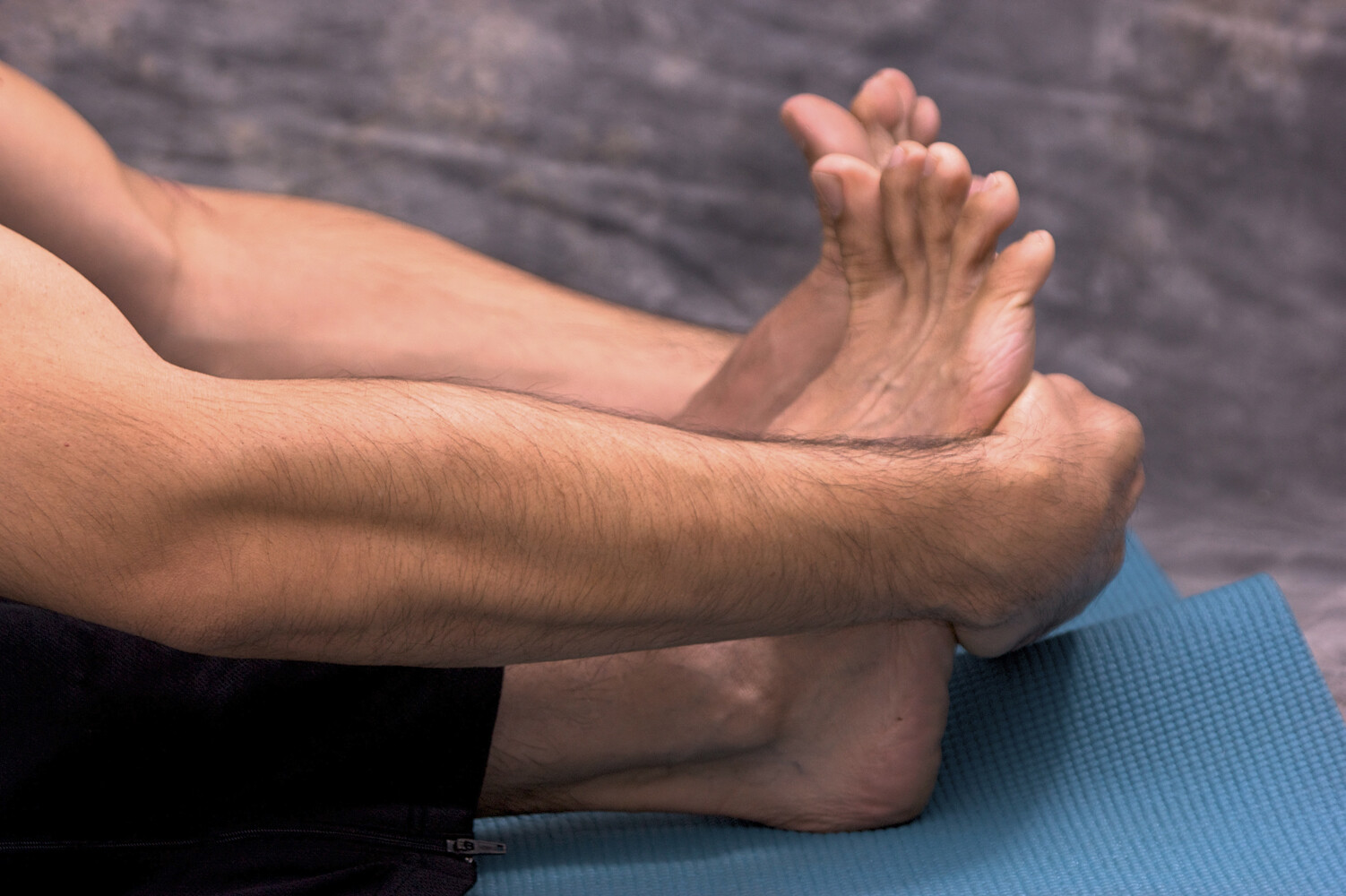
“This shows that different foot muscles are affected in different ways during a full marathon, with outer muscles more prone to damage than inner ones,” according to lead author Mako Fukano, Ph.D., researcher at the Shibaura Institute of Technology in Japan. He told Runner's World that pressure on the ankle joint during a continuous, long-distance run like a marathon would affect extrinsic muscles the most because they’re the ones that have to work harder to produce an efficient running stride.
“These findings might help for conditioning and injury prevention,” she said. “They give an indication that building strength in your feet could be important for recovery.”
In terms of how to best take care of your feet, the optimal strategy would be a combination of single- and double-leg exercises incorporated into a strength program, said Carol Mack, D.P.T., C.S.C.S.
“Strength training throughout the marathon training cycle can to help keep the foot and ankle muscles as strong as possible to run long distances,” she told Runner’s World. “For example, single-leg exercises will help isolate the stabilizing muscles in one leg at a time.”
Examples of some exercises to include in your marathon strength routine include single-leg Romanian deadlifts, single-leg squats, and Bulgarian split squats.
Another factor here is to allow time for recovery, she added. In the recent study, researchers only looked at damage in the first eight days after a race and there was still evidence of muscle damage. That means it’s unclear how long the damage may actually affect foot and ankle muscles, Mack said.
“What’s key is to understand that recovery from a marathon takes time,” she said. “In the weeks after a race, it’s important to take time off from impact exercise to let the muscles in the foot and ankle recuperate.”
by Runner’s World
Login to leave a comment
You too can Train the Kenyan Way in Kenya
Kenyan runners and many non-Kenyan runners training in Kenya have had good success. But why? These four things stand out as the reasons behind their success.
1. Training is a big part of their secrets including sloop training, intervals, fartlek and many exercise drills. They train twice a day, six times per week with the evening run easy.
2. Equally important is their diet, the Kenyan's runner diet is starch based very high in carbohydrates. Kenyan runners get 76 percent of their daily calories from carbs.
3. Almost all Kenyans train in groups, many at training camps.
4. Kenyans runners are surrounded by inspiration and positive thinking. You must believe you can run a 2:01 marathon to be able to do it. Visualization is a big part of this.
Many runners outside of Kenya have thought about training in Kenya with Kenyan runners. Some have made the trip and have had great success. But for most runners making the trip to Kenya and training for a month or more there never become more than a dream.
The main reason why it only remains a dream is because it just has not been easy to set it up. Lifetime runner Bob Anderson who also was the founder of Runner's World Magazine in 1966 and most recently the publisher of My Best Runs has made it easy for runners to come to Kenya and Train The Kenyan Way.
Bob and his wife Catherine first travelled to Kenya in 2013 and staged a race in Thika. It was during this trip he met up with Elam Wangwero, a 29-minute 10k runner who just loved all aspects of athletics. Bob and Elam talked about setting up a training camp in Thika (just an hour outside of Nairobi) during that trip.
Work started on the Kenyan Athletics Training Academy (KATA) some years later. Bob brought on board Florence Kimiti to be the manager and then hired Coach Joseph Ngure to be the head coach.
Construction was finished in September 2021. For the last two years the KATA staff have been working with Kenyan staff athletes getting them ready to accept guest athletes from around the world. The KATA staff athletes are training to become professional runners (some already are) and to help guests achieve their goals.
“COVID did slow things down for a while, says Bob Anderson, "but on June 14, 2023 we welcomed our first guest."
KATA has six private rooms for guests, each with a double bed and private bath with a shower. KATA has a total of 26 rooms including staff athletes’ rooms, office, a runners Lounge with a large TV screen, Olympic Dining Hall, Laundry room, Kitchen, massage room and a courtyard and garden so athletes can relax in between workouts.
KATA is solely set up for athletes who are interested in improving, running new PR's, becoming campions or being a professional runner. "We offer world-class training, quality Kenyan runner's food in a relaxed inspirational atmosphere with the emphasis on distance running, " says Director/Owner Bob Anderson working from his office in Mountain Views, California USA.
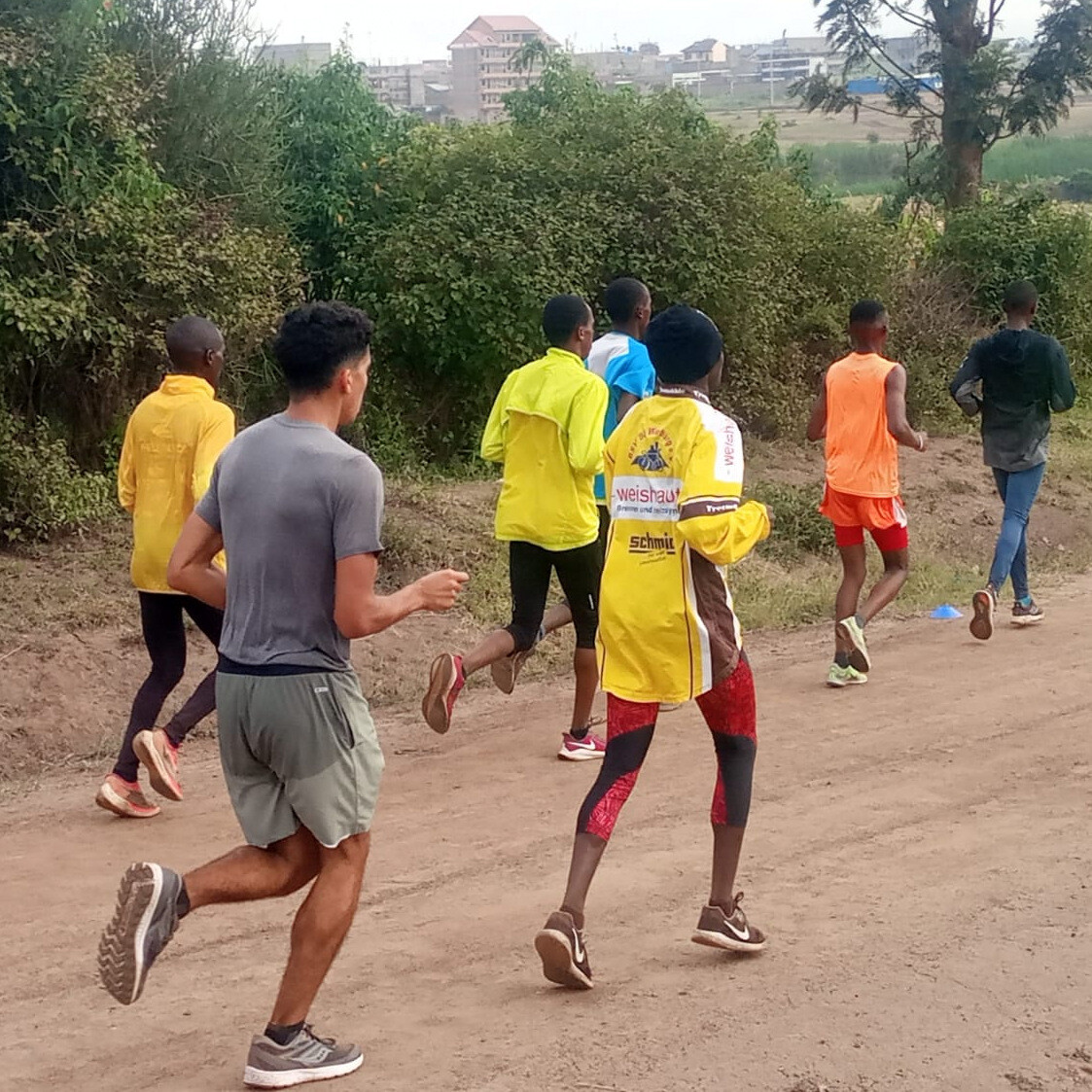
KATA’s first guest arrived on June 14th and is staying for six weeks. 20-year-old Nahim Abdallah (first and second photo) is a college student at Virginia Commonwealth University. He has clocked a 4:22 mile and recently ran a 14:31 5000m. He wants to be in top form for the upcoming cross-country season. His goal is to get under 14 minutes for 5k during his stay.
The second confirmed guest checking in July 2 for 12 weeks is Max Barnett (third photo) from England. He ran a 3:45 marathon in Paris a few weeks ago and wants to break three hours by October in Lisbon. "This is an aggressive goal," says Coach Joseph, "but we are going to help him make it happen."
"I have spoken with Max several times," says Bob Anderson "and I think we can help make this happen because of the passion Max has for running. His focus for 90 days will be running where now in England he just has too many other things getting in the way."
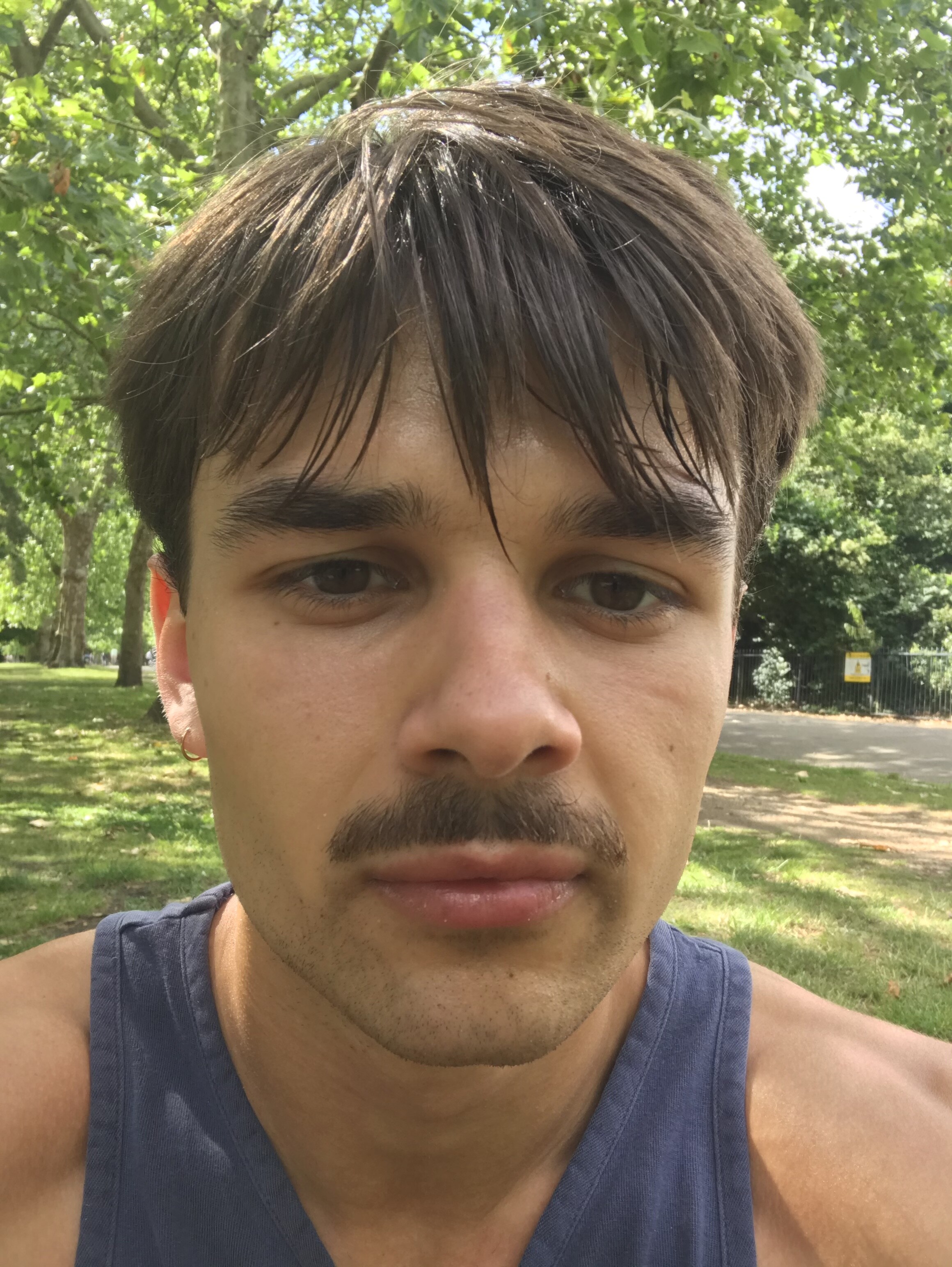
Bob Anderson and the team are very dedicated to this program and feel their setup is different than most. "We just have a cozy personal feel here," says onsite manager Florence. "So much positive inspiraton."
"This is your chance to Train the Kenyan Way," says Bob. All you need is a passport/visa and an airline ticket to Nairobi, Kenya. KATA will take care of everything else including picking you up at the airport. "Of course, you have to have the desire to become a better runner," says Florence, who was also a 1:59 800m runner as a junior.
"KATA offers training programs for 800m to 1-mile, 5k, 10k, Half Marathon and the Marathon" says KATA's onsite senior AK coach Joseph Ngure. "We will work with you and help you achieve your goals. Just let us know your starting point and your goals and we will provide the coaching to help you achieve it."
At any one time 12-20 Kenyan KATA staff runners are training at KATA. Most live and eat at KATA while others live nearby. These Kenyan athletes set the style of KATA as they work hard to become better runners themselves and help and support our guests.
You might be thinking that something like this must be very expensive. It is not, the cost is just $375US weekly with a minimum stay requirement of four weeks. This covers all your costs including a private room, three meals a day and world-class training.
For more info go to: www.KenyanAthletics.com
by Lisa Wall
Login to leave a comment
Saucony Launches New NIL Partnership with a Different Type of Distance Athlete
The shoe brand is teaming up with Galen College of Nursing to provide footwear and financial compensation to four stand-out nurses.
If you’ve followed college sports over the last few years, you’ve probably heard about NIL, or “Name, Image, and Likeness.” Ratified in 2021, NIL allows college athletes to partner with companies and earn money from marketing or sponsorships. Previously, NCAA athletes were not allowed to profit off business deals related to their sport.
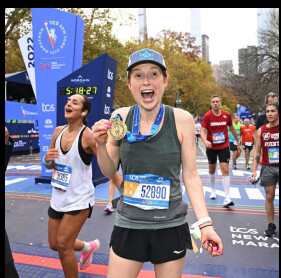
On Wednesday, Saucony posted on Instagram that, “The next big NIL deal is coming.” And on Thursday, they revealed that deal: the NIL Student Nurse Initiative. The shoe brand is partnering with Galen College of Nursing to sign four collegiate nursing students to NIL deals.
“We've officially signed four new collegiate distance athletes,” Saucony wrote on Instagram. “No, not your traditional endurance athlete, four aspiring nurses @galencollegeofnursing! The average nurse can walk nearly a marathon each week on the job! With this NIL initiative, we’re shining a light on their stories, their successes, and how critically important nurses are to our healthcare ecosystem.”
The nurses—four of Galen’s top students—include Lauren Lowe, Sarah Sangha, Ashley Lutes, and Brianna Nelly. The quartet will receive pairs of Saucony Triumph 20 and Saucony Endorphin Shift 3 shoes to wear on the job, as well as an undisclosed amount of “financial compensation,” according to a press release. The company told Runner's World that this is currently the only NIL partnership the brand has.
Other collegiate distance runners have garnered NIL deals in recent years. Star runner Katelyn Tuohy, of N.C. State, inked a contract with Adidas in November, and the reigning NCAA cross country champion, Charles Hicks, of Stanford, signed with Nike in March. Duke steeplechaser Emily Cole reportedly makes over $150,000 from endorsement deals on social media.
In the spirit of National Nurses Month in May, Saucony is also offering a discount of 25 percent to all nurses and nursing students, through May 18.
by Runner’s World
Login to leave a comment
These Phrases May Be a Tipoff for Poor Mental Health in Athletes
New research finds that your self-talk could be an indication of emotional challenges.
A recent study published in the journal Psychology of Sport and Exercise found a connection between athletes with internal irrational beliefs, as shown by negative self-talk, and increased anxiety and depressive symptoms.

Negative thoughts about sport can also become habitual, which can hinder self-confidence and lead to other mental health struggles.
Experts offer ways for runners to address these negative thought patterns.
Ample research has connected regular exercise with mental health benefits—for example, a study in The Lancet notes that those who work out consistently had fewer days of poor mental health compared to those who don't exercise. However, that doesn’t mean athletes are immune to emotional difficulties.
New research published in the journal Psychology of Sport and Exercise suggests athletes may have unique stressors, including concern about injury risk and anxiety about competitions. To determine how issues like these affect self-confidence, researchers looked at more than 400 athletes across a variety of sports, including a breadth of ages and experience levels.
They found that athletes’ belief systems, and especially beliefs that seemed irrational, were connected to lower self-confidence with increased incidence of anxiety and depressive symptoms. Researchers identified these beliefs through phrases such as “others think I’m not good at what I do, that shows I’m worthless,” or “my position on this team isn’t secure,” or “I’ll never make it.”
When negative self-talk like this becomes habitual, it creates a foundation of self-doubt that skews more thoughts in a negative direction, according to lead author Paul Mansell, Ph.D.(c), researcher at the school of sport, exercise, and rehabilitation sciences at the University of Birmingham in the U.K.
“This creates a maladaptive thought process that begins with irrational beliefs and leads to automatic, negative thoughts that may undermine an athlete’s self-confidence,” he told Runner's World. “This can lead to psychological distress and depression symptoms.”
Becoming more aware of these thoughts can be a step toward identifying mental health challenges, he added. Being able to pivot toward a more rational, self-supportive stream of thoughts can not only be protective in terms of reducing anxiety and depression risk, it can also give an athlete a stronger sense of control, said Mansell.
One starting point to address these thoughts: Envision all the resources available to you—teammates, trainer, coach, therapist, friends, family, and so on—that help you cope with the demands of stressful situations.
It’s also helpful to remember that more positive small talk may actually change your brain chemistry, according to Loretta Graziano Breuning, Ph.D., author of Habits of a Happy Brain. Although she wasn't involved in the recent research, Breuning has studied the way negative self-talk affects hormone regulation.
“When people default to negative thinking, that can increase your level of cortisol, the hormone responsible for stress response,” she told Runner's World. “When cortisol increases, it lowers hormones related to calmness and joy, like dopamine and serotonin. Over time, this becomes an automatic response.”
The mind gets into patterns, she added, and it does take effort to shift in a different direction. She suggested writing down thoughts centering around your exercise or competition performance, because seeing them in such a concrete form can be surprising.
“In many cases, people may not realize how negative they’ve become until it’s right there in front of them,” said Breuning. “Consciously and deliberately changing the way you talk to yourself is an important step not just for your sports performance, but also for your mental health overall.”
by Runner’s World
Login to leave a comment
This Mom Runs to Decompress and Recharge So She Can Be a Better Parent
“Getting back into running is the best thing I could have done for myself!” I initially got back into running as a way to lose weight, but it became more about making time for myself to de-stress and be a better mom.
I have always been a runner but stopped for more than 10 years. I ran cross-country and track and field in high school, and also ran on and off for two years in college around 2008.

MORE FROM RUNNER'S WORLD ON APPLE NEWS
I had a healthy pregnancy in 2020 with my second son, but gained some weight, which is inevitable when growing a little one. So my initial motivation to pick up running again was to lose some of the pregnancy weight I had gained.
It was after Christmas of 2020, when I was 32 years old, and I finally said enough was enough. I felt uncomfortable in my own skin, my clothes, and I was out of breath going up the stairs.
I was four months postpartum. Yes, I had given myself grace after birth, but it was time to commit to myself again. So in January 2021, I did just that. Running has always been an exercise that inspired me to move my body to be my healthiest self. I decided to make time for myself even when I was tired or burned out. Motivation might fade, but having the discipline to commit would prove worthwhile.
I started by giving myself the goal of 20 minutes of exercise a day, whether that was walking, running, or a combination of both. I used my Apple Watch to help motivate me, as I worked to close my fitness rings. I successfully closed each one for a whole year. In the beginning, my training consisted more of jog/walks to be able to work myself up to running without stopping.
With consistency, I was able to work my way up to running seven miles. My initial mile pace was in the 11- to 12-minute range. But, I put in the work every day and was able to bring my pace down to the 8- to 9-minute range—something I’m very proud of! Consistency and hard work will always pay off.
Right now, raising two young boys, my running schedule varies, but I hope to start training for a half marathon in the fall of 2023.
During my weight loss, it helped me to count my calories, and I also ate lower carb options with high protein. As I’ve maintained my weight loss for over a year, I still follow a high-protein diet, but don’t count my calories as often.
Running became a passion of mine again because it helped me as an outlet with motherhood. Losing weight was a perk but I found myself again as a person, not just a mom. Motherhood can be extremely draining. It’s the most wonderful thing in the world, but you are constantly putting others’ needs before yourself. Children rely on you, but when I started running again, I became a better mother and wife. I needed that outlet and alone time to help decompress. Getting back into running is the best thing I could have done for myself!
These three tips have made my running journey a success:
1. Believe in yourself
Only you can get yourself through the hard days and the unmotivated days. Believe that you can accomplish it and you will.
2. Set small, attainable goals
Small things add up with consistency over time. It’s easy to get wrapped up in what’s working for someone else, but you have to focus on you. We are all different.
3. Just get out there
You don’t have to go out and run for long periods of time or distances to be a runner. Just getting out there—whether it be a mile or two—makes you a runner. Overtime, it makes a difference, and still makes you a runner.
Sarah’s Must-Have Gear
→ Hoka Clifton: Over the years I’ve tried many different brands, but Hoka’s are my number-one.
→ Goodr Sunglasses: These sunglasses do not slip while sweating.
→ Shefit Sports Bra: Starting out with a larger chest, I needed as much support as I could for running. Shefit has always been my go-to sports bra. With adjustable straps, you are able to customize it to fit your needs.
→ BOB Rambler Jogging Stroller: BOB strollers are the best in the game for jogging strollers. I have both a double and single. They have helped me tremendously, because as a stay-at-home mom, I don’t always have an option for someone to watch my kids. This is a great option for them to come along with me on my runs.
by Runner’s World
Login to leave a comment
Is Top Miler Jenny Simpson About to Become a Marathoner?
The Olympic medalist signs with Puma and moves to the roads—although she still hits the track in spikes.
Jenny Simpson refuses to come out and say she’s training for a marathon. But all signs point to her training for a marathon.
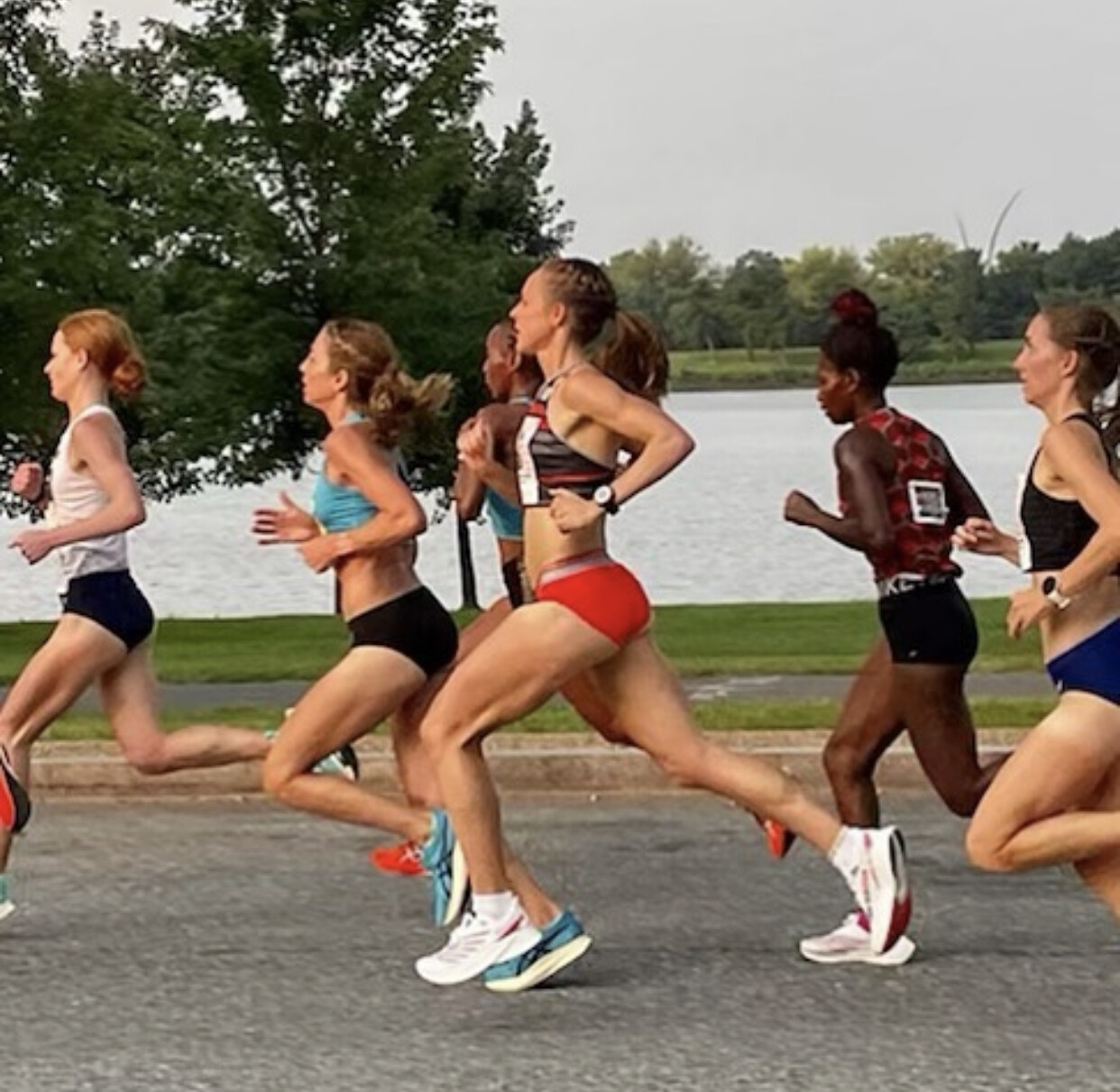
She’s consistently running the highest mileage of her life (85 miles per week). And she has a new sponsor, Puma.
“It’s correct that my emphasis is on the roads,” she said on an October 6 call with Runner’s World. “These next few years is an exploration in the distances and some of the challenges in running that I haven’t tried yet. That’s what I’m most excited about.”
Simpson, 36, has been a stalwart on the track since she was in college at the University of Colorado, going to Europe every summer and building her training around Olympics and World Championships cycles. Between 2011 and 2017, she won four global medals: a gold and two silvers in the World Championships 1500 meters, and Olympic bronze in the same event.
Through 2019, she made every U.S. team going back to 2007. But the pandemic put a sudden halt to that streak. In 2021, she made the finals of the 1500 meters at the Olympic Trials for the postponed Games in Tokyo, but she finished 10th.
“I had such an incredible run on the track,” Simpson said. “And then, just like a lot of people starting in 2020, the vision that I had for those next few years of my career got derailed.”
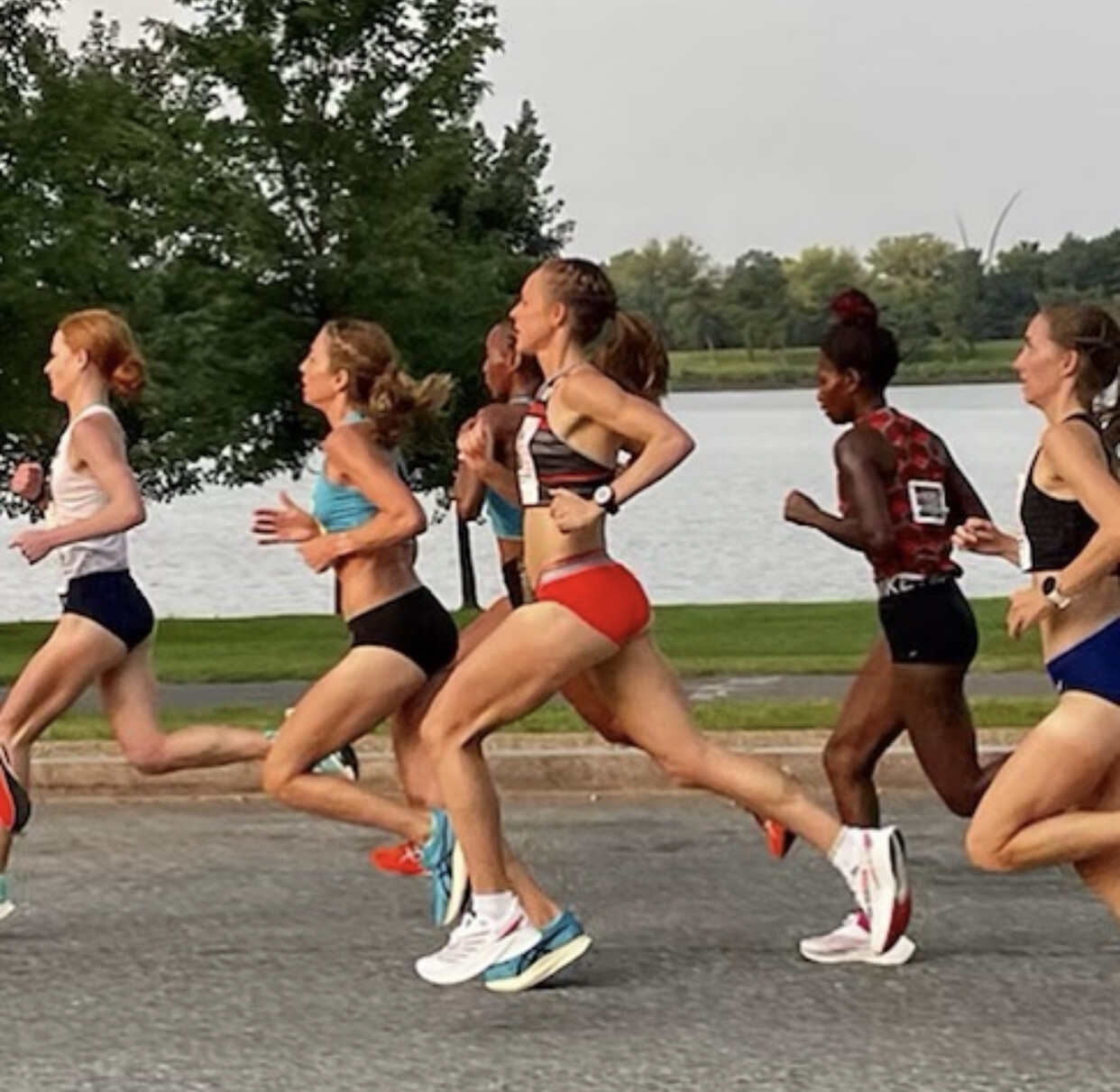
That fall, she began her transition to the roads, racing the Cherry Blossom 10-miler and finishing second in a sprint finish to Nell Rojas. But at the end of the year, Simpson’s life was upended.
Simpson suffered a stress reaction in her right hip, which took a long time to heal. She was diagnosed with a sports hernia in one of her adductor muscles, which pulled tissue away from one of the pubic bones. “A lovely place to be injured and have people poking and prodding,” Simpson said.
It was by far the most serious injury of her career, but she was able to avoid surgery with hours of physical therapy, working on her adductors, hamstrings, core, and glutes—anything near the hips. When she returned to running, she had several months of stopping and starting until she was finally pain-free.
At the same time, she learned that her future with New Balance—the company that had sponsored her since the beginning of 2010—was not secure.
And then on December 30, 2021, a wildfire broke out close to Simpson’s home, an old schoolhouse in South Boulder, Colorado, that she shares with her husband, Jason, and their dog. They had to flee with little warning. Most of the Simpsons’ immediate neighbors lost their homes, and entire neighborhoods in the bordering towns of Louisville and Superior were destroyed. The couple was displaced for three months while damage was repaired.
“So many things in my life were disrupted at the same time,” she said. “Between the fire and no longer having a sponsor and an injury, all those things swallowed up the first half of my 2022.”
By late spring, things were starting to come around. The Simpsons were back in their home. Her injury was healing. And sponsors were still interested. Simpson, who had represented herself for years, enlisted an agent, Hawi Keflezighi, to help her with a new shoe deal.
“Parting ways with New Balance will be one of the great heartbreaks of my life,” she said. “It was really hard. I didn’t want to make a change. But life is full of surprises. The change to doing a different event felt like this is going to give me some new energy and a new scene. Now that I’m on the other side of a contract with a new brand, I feel very much the same way. Puma believed in what I want to do. That’s really invigorating.”
Puma has made a substantial investment in American women’s distance running over the past two years. The company has added marathoners Molly Seidel, Annie Frisbie, and Dakotah Lindwurm to its roster, and funds a Puma training group with Fiona O’Keeffe and others in North Carolina. But it’s not just 20-somethings. They’ve also signed track runner turned marathoner Sara Vaughn, and now Simpson.
To be clear, Simpson doesn’t intend to just dabble in the roads. She wants to be excellent. And that’s the only thing that’s keeping her from saying “yes,” she’s doing a marathon.
“I will do one if I believe I can be competitive at it,” she said. “We don’t have enough information yet to know if I’ll be really good at it. I have the desire to do it, if my body and mind can handle it.”
Simpson is relishing the chance to reimagine what the end of her career might look like. For a long time, she said, she laser focused on the 1500 meters (and yes, she still spikes up for track workouts). “I’ve been one thing, a very good one thing, for a long time,” she said.
But now it’s time to try something different. She sees American marathoners running well into their late 30s, and doing it after having children, and she realizes she has to adjust her own thinking about what’s possible.
“This new wave of women racing later and having families and racing competitively at the same time, I feel like people just don’t remember how much of a zero option that was when I was younger,” she said. “And it’s not just the world is progressing. I have to progress. I don’t have to just pack it in.”
Simpson said she wants to show that she can try to be good at something else.
“I don’t know if I’m going to be great at the marathon,” she said, “but I really want to try.”
MORE FROM RUNNER'S WORLD ON APPLE NEWS
by Runner’s World
Login to leave a comment
The Kenyan Athletics Training Academy in Thika just launched today the KATA hunger project helping potential pro runners from poor families
KATA (Kenyan Athletics Training Academy) announced today (Oct 4, 2022) it has launched a new project. The KATA Hunger Project is going to help potential Pro runners from poor families. Additionally the project will help struggling women farmers to be better more efficient farmers year around.
"Our Kenya Fresh Farm Hunger Project (KATA Hunger Project) is going to provide 8.8 pounds (four kilos) of home-grown fresh fruits and vegetables weekly to Kenyans in Need for 13 weeks," says KATA director Bob Anderson, MBR publisher and founder of Runner's World Magazine (1966-1984).
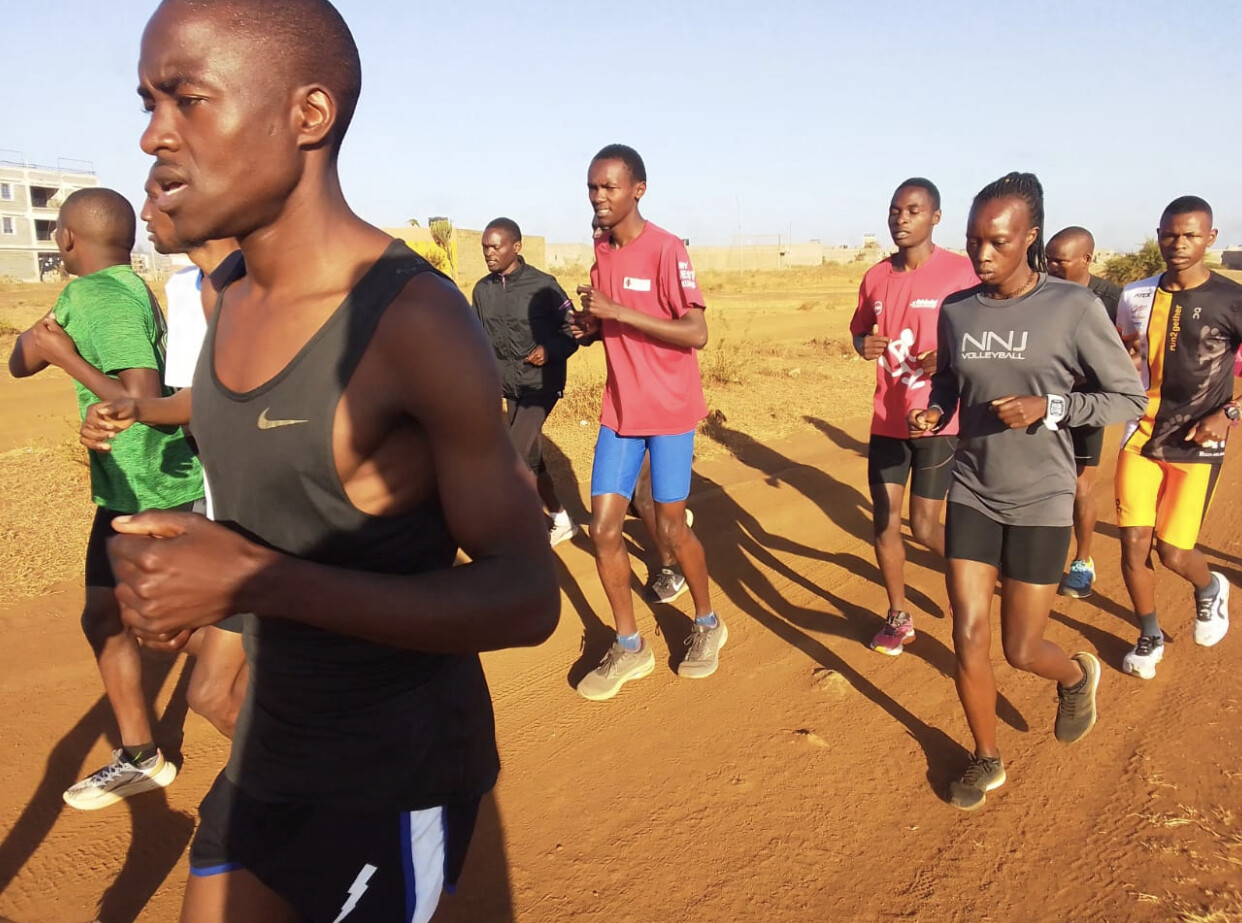
Bob and his wife Catherine built and financed the Kenya Athletics Training Academy located in Thika Kenya. The 23- room academy was officially opened Sept 4, 2021.
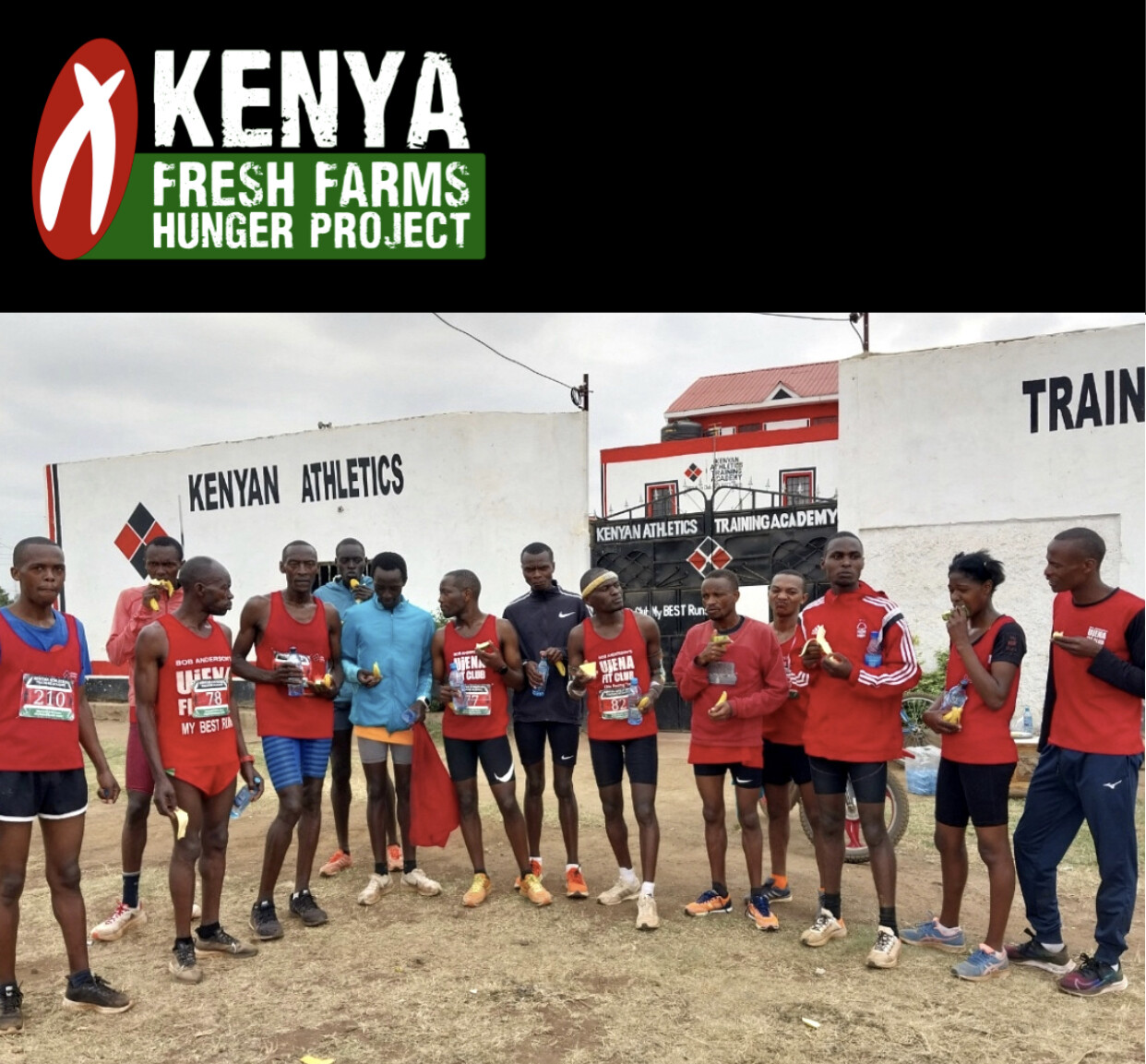
KATA is a one-of-a-kind facility and its focus is on training runners to become pro runners. KATA does not manage runners and does not ask its athletes to share any of their prize money.
Kenyan athletes are not charged to live, eat and train at KATA. "We mostly seek out runners who need our help," says head coach Joseph Ngure, a senior coach with over 30 years of experience.
As an example, Peter Njeru Mwaniki was one of the first potental pro runners who came to KATA for help. His family did not believed he could make distance running a career. They basically kicked him out of their house. He then moved in with his brother but that was not working either.
“He had run a 32:30 10k but his hope of making a career out of running was slim," says coach Joseph. "We took him in, feed him and trained him. Within just a few weeks we knew he had great potential."
On Oct 2, 2022 Peter won the Telesia half marathon in Italy clocking 1:00:29. It was a good pay day for Peter and his new KATA family made it happen for him. "We are very proud of Peter and all our KATA athletes," says Bob.
"It would be almost impossible to train hard without enough to eat," says KATA manager Florence Kimiti, as a junior ran 1:59 for 800m. "A 32:30 10k is not bad for a recreational runner but not for a pro runner. A lot of Kenyans make a living from distance running, the most famous being Eluid Kipchoge who is making millions for his efforts. He is our hero. The goat."
Peter will be running several more races in Italy before coming back to KATA to keep up his training and to help support our Kenya Fresh Farms Hunger Project.
"All KATA athletes staying at our academy put in 20 hours per week of work," says operations manager Elam Wangwero, a top runner himself and who have known Bob and Catherine since 2014.
"The work might be cleaning, painting, working on My Best Runs website (posting results, checking links, photos, etc) and now KATA Hunger Project. But of course the training always comes first along with three meals daily."
"It seems to me that doing something other can training, eating and sleeping is helping our athletes run so well," says Bob. "So much of running is mental and you need a sharp mnd."
"Without the support of KATA,"wrote Peter from Italy, "my dream would not have come true. I am feeling the happiest ever. I never thought of running such a time at this age."
The KATA Hunger Project was officially started August 1, 2022 but unofficially started in 2020. "Since we are going to provide home-grown fresh fruits and vegetables for our potential pro runners we needed to set up our own farm," says Florence.
Bob leased two acres of land outside of Embu on August 1. It was idle land but it did have 40 fruits trees (banana and mango) that just needed care. Additional land can be easily leased when needed.
Vegetable beds at KATA's Fresh Farm have already been planted. "We dug a well for water, we set up solar and are building a barn, thanks to Brock Hinzmann (2:19 marathoner back in the 80’s and 90’s) contribution," says Florence.
Runners can also train with the team by just coming to KATA and soon other locations. And when approved, will be given four kilos of Fruits and vegetables at the end of the week starting Dec 23. After or during the 13-week program the athletes with the most potential will be asked to live at KATA at no expense for them.
Potential pro runners outside of Kenya will be able to join the program starting November 1, 2022. "Our guest runners will receive all the benefits as our Kenyan athletes," says Bob. "Same food, same training, same duties with one difference. Our guests can have their own room."
Minimum stay is one month. Cost which covers everything is $1000 not including airline ticket and visa.
"A single month is not a lot of time," says coach Joseph, "but at least you will see what we do here. Our program is more than going for runs and doing some speedwork. We can get you ready to set new PR's."
"Our KATA Hunger Project is a keeper. We want to reach a lot of Kenyans in need but we need your help," says Catherine. "This is how the program works: for every one US dollar contributed, one pound of home-grown Fresh fruits and vegetables will be provided to a Kenyan in Need. 8.8 pounds weekly."
"There is so much talent here in Kenya," says Elam. "I am glad Bob and Catherine have set up these programs.
by Lisa Wall
Login to leave a comment
How Running Played a Big Role in the New Film, ‘The Woman King’
We spoke with the director and the run coach on set to get the scoop on training.
There’s a moment in The Woman King (released today) that, no spoilers, is one of the best running scenes this film-lover and running enthusiast has ever seen on screen. It involves the titular character and protagonist, Oscar-winning actress Viola Davis, dressed in the attire of the warrior army she leads. She sets off defiantly, on foot with machete in hand. As she takes her first few steps, bold and unwavering, we see not far behind her, the other Agojie women running in single file after her. It’s a rousing action that captures the heart and soul of the mighty Hollywood epic—and the running looks masterful.
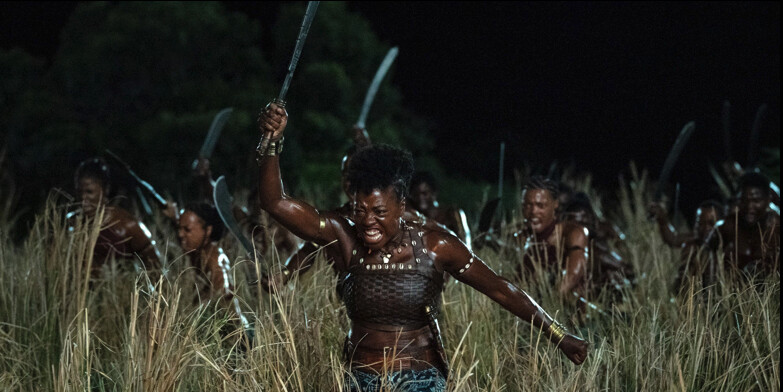
It’s thanks to director Gina Prince-Bythewood’s own love of and dedication to running that the scene works as well as it does. A former triple jumper at UCLA, Prince-Bythewood tells Runner’s World that it drives her nuts “when you watch an action film or sports film and the actors can’t run.”
Known for her character-driven films, from Love & Basketball to The Secret Life of Bees, the director flexed her action film muscle in The Woman King. Set in 1820s West Africa, it’s about the all-women military squad of the Kingdom of Dahomey, called the Agojie.
Bringing The Woman King to the big screen was a years-long Herculean feat in itself—with Davis, Prince-Bythewood and the producers having to navigate a host of behind-the-scenes challenges Black women face in the entertainment industry before they even started filming, from convincing executives to bankroll their movie to being allowed to do hair and make-up the way they wanted it. To handle the on-set demands of shooting in South Africa, Prince-Bythewood wanted to make sure her cast was prepared.
Why Prince-Bythewood Prepped the ‘The Woman King’ Cast for Running With the Help of a Coach
Along with months of grueling martial arts and weapons training plus weight lifting, Prince-Bythewood enlisted the help of running coach and former 400-meter champ Jerome Davis. “Jerome is an incredible coach,” she tells Runner’s World. “There’s a difference between just learning to run and learning to run well. Also, there’s a difference between sprinting and long-distance running. I needed everyone to look good doing both.”
Having worked with Jerome Davis before, on both The Old Guard, with Kiki Layne, and the TV series, Shots Fired, with Sanaa Lathan, Prince-Bythewood was confident Davis could work his magic on The Woman King. She gave him the direction to make the women look athletic and believable.
“That was the key word, ‘athletic,’ especially in the heat of an action scene. I wanted it to feel second nature; these women grew up running. Running was an important part of their training, and I wanted the audience to feel the natural gait of these women,” says Prince-Bythewood.
Davis, who competed at the World U20 Championships and the World University Games in the late 90s, believes he’s always been a coach at heart. “I think it started in high school, I would always try and encourage my teammates, and it was kind of natural. I just always love to see people achieve and do their best,” he tells Runner’s World. Having been a coach for more than 20 years, these days he works a lot with elementary and high school runners.
The key to a good running scene, Davis says, is that you want to get as close to what you would see in a race or a good high school meet. “You want the form to be great,” he says. Running on film is like any other skill an actor might have to pick up for a role. “It’s like being a musician or a barber, you think, ‘Oh, they just do it. They just show up and the work comes out beautifully and it’s just easy.’ But the reality is, it’s an art form to it.”
Getting actors to perform the art of running requires flexibility and patience, considering they’re obviously not professional runners. So Davis asked them for an hour a day, three to four days a week, “and I’ll make you look like you have run your whole life.”
What Run Workouts Looked Like for the Cast of The Woman King
A large part of the hour-long run sessions, which took place over six weeks, focused on the warmup, which Davis sees as essential, both in achieving a solid foundation for good running form and preventing injuries that could impact the production schedule. In Davis’ workouts, that warmup would include drills.
“I’m a very big believer in plyometric drills to be able to activate the muscles that you want to use, and not only activate the muscles you want to use, but help get you in the mind frame of good running technique,” Davis says. Working on a small track at Cold Canyon Park in Beverly Hills, the actors would start with A-skips and butt kicks, and he’d have them run backwards to activate the hamstrings.
Because the actors would only have to run short distances for their scenes, he kept the track work short and honed in on repetition. “I would have them do build-ups of about 70 meters,” he says. “So every 10 meters they would get faster and faster and faster. And then they would walk back, and then they would get faster and faster and faster. I’m trying to get them at about 90% of their maximum speed.”
At the end of sessions, Davis had everyone do a two-lap cooldown, along with some stretching.
But Davis’ main focus during workouts: how the actors hit their stride, which he gave pointers on every chance he got. “I’m really focusing on their form; I’m looking at their arms, I’m looking at their hands, I’m looking at their facial expression,” he says. “There’s a cadence that comes with running and there’s also a controlled force. I want you to be fierce but I also want you to be relaxed.”
Davis also made sure the actors had a solid knee drive, activating the hip flexor, and pulling that knee up toward the chest—something he considers a telltale sign of whether someone is a runner if they can hit that point of the stride.
Another one of Davis’ mantras he’d impart to the actors? “Arms dictate your legs.” If you want to go faster, he’d tell them, you have to move your arms faster. “Your arms swing from your shoulder. There’s a ball inside of your shoulder for a reason. Your arms need to stay at 90 degrees so that you’re using the ball,” he says.
Davis worked closely with the women who make up the Agojie, including Adrienne Warren and Thuso Mbedu, who play the newest recruits to the army in The Woman King. Mbedu, a 31-year-old South African actress known for The Underground Railroad, has been vocal about her dislike of running on her social media. “Thuso hated running when we started,” says Prince-Bythewood. “I won’t say she loves it now, but she respects it.”
Davis commends Mbedu for her commitment to the training. “She would get so nervous to come see me,” he says. “But her last couple of sessions, I was like, ‘Alright, you’re getting it, I can tell it’s all starting to click.’”
While the Agojie women worked with Jerome Davis on their running, their general, Viola Davis worked with her long-time trainer Gabriela Mclain. At one stage, Davis was running a 6:23 mile on the treadmill, which Prince-Bythewood says made everyone feel proud: “That’s a full out [effort], and props to Viola for putting in the work.”
On set, Jerome Davis also chimed in with running tips for the actors, making them warmup for about 15 minutes ahead of filming run scenes. “You might be 19 years old or you might be 45 years old, but please, make sure you warm your body up. The directors, the associate producers, none of those people understand warming your body up. They just think you can go out there and just perform and run,” he says. “They’re just gonna say, ‘Action!’ That’s all they’re gonna say, and then you’re going to blast these reps of running, and next thing you know you come up with an injury and you’re out for weeks and weeks.”
In addition to warming up, Davis promoted the importance of massages and hydration to the actors to keep them in shape for every high-energy scene.
Overall, Prince-Bythewood was happy with the results. “People don’t pay enough attention to running when they’re doing action films, but for me, as a former track star, it’s all I pay attention to.”
How Running Has Shaped Prince-Bythewood’s Life Off Screen
Growing up loving to race her sisters, running has been a constant in the director’s life, from playing soccer to basketball, and then cross-country and track at school.
After college, as her film career took off, Prince-Bythewood’s running slowed down for a moment, but she got back into it after the birth of her sons and the C-sections she had. “It’s hard to come back from that: your mind tells you can do stuff and your body is not aiming and listening,” she says. “But it was through running that I was able to get those two in sync again.”
While making movies may keep her often too busy for the kind of runs she likes to take, Prince-Bythewood will always take any opportunity she has to bring it into her work—especially when presented with a scene like the one led by Viola Davis that has the potential to stay with audiences once the credits have rolled and the lights go up.
“I remember reading that scene in the script and feeling lifted. It was one of those scenes where, as a director, you feel the importance of it because you’ve reacted to it as an audience first.” Hiring a running coach is testimony to the devotion Prince-Bythewood had in making that scene—and the film as a whole —work as powerfully as it does.
MORE FROM RUNNER'S WORLD ON APPLE NEWS
by Runner’s World
Login to leave a comment
The original editor of Runner's World magazine has had a rough couple of years
"I have been trying to get ahold of Joe Henderson for a couple of years," says MBR publisher Bob Anderson. "Joe was my first Runner's World editor many years ago. We worked together for years before I sold RW to Rodale Press in 1984. Joe has broken his silence and I wanted to share the message he posted on FB this last weekend. My heart goes out to Joe. We have missed you..."
A message from Joe Hendeson:
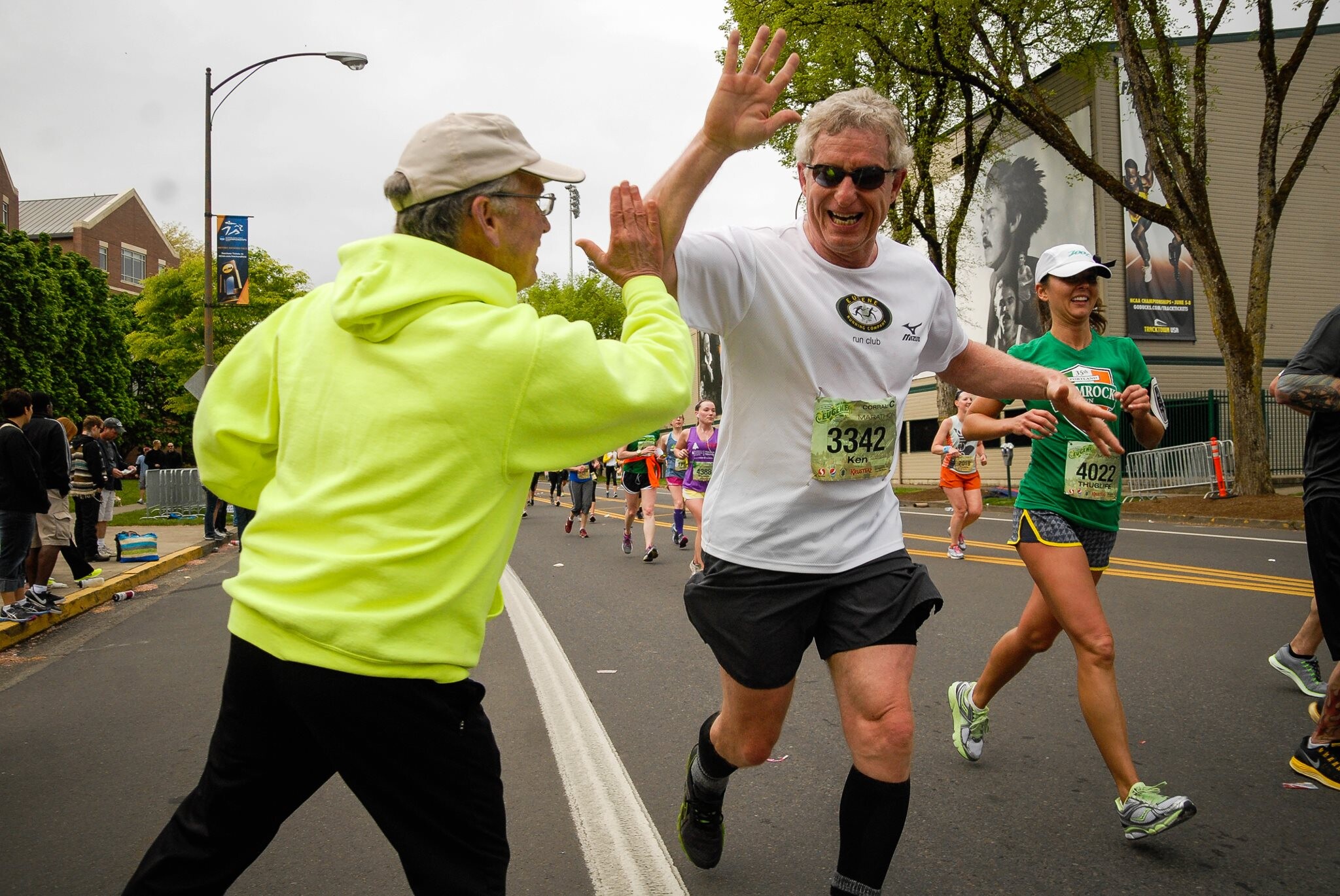
"You might have noticed. Running Commentary had an unbroken streak from 1982. Then it suddenly stopped coming to you about three years ago.
Writing for public consumption stopped then. Running ceased too, possibly forever.
At the least, I owe you an explanation.
In November 2019, I suffered a stroke. Much of the year 2020 does not exist for me, so far out of everything was I then.
I don’t remember at all the first two places I lived after having the stroke. The third is a partial memory,
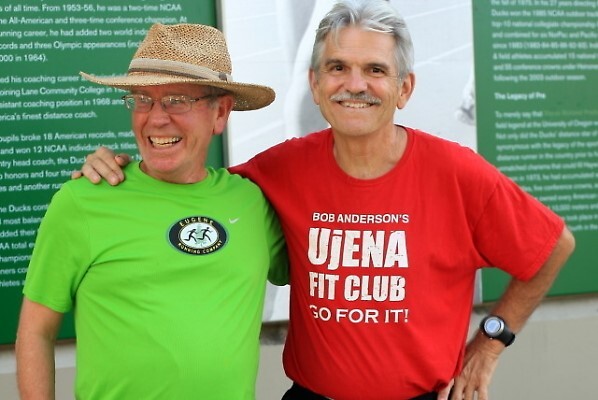
I don’t remember falling out of bed and hitting a low-slung bookcase, only waking up on the floor — missing two front teeth, with a broken nose, broken right hand and left eye that pointed the wrong way.
Worst, my wife Barbara died in early 2020. I wondered for months afterward why she quit coming to see me.
It turned out that the hard fall was the beginning of a wake-up call. It was a slow but steady return to a new normal.
The physical therapist dismissed me after a year — with the warning to always carry a phone in case of a fall. One eye doctor said I was stuck with the odd eye condition.
He did perform successful cataract surgery on both eyes. Another doc later told me that the left eye was moving toward its proper position, though ever so slowly.
The right leg remained affected, but much less so than at first. I was told that it as 95-percent impaired when first tested. It is now five percent off — but still requires a walker. Running is impossible, in the third year post-stroke (or fall).
I now live at a senior center called Shalom House. I don’t try to run, and use a walker for daily walks of 30 minutes or more (which sounds better than saying a mile or so).
My running is no longer personal, but my interest in the sport remains strong. I attended a small part of the Olympic Trials last year, and more of the Pre meet, NCAA and Worlds in 2022. I still hope to get back to coaching, if the runners will have an ex-runner whose running days are increasingly ancient,
Best of all, my mind is almost fully awake again. I realize that my wife is no longer with us. I returned to published writing with this brief tribute on the second anniversary of her passing:
Barbara Hazen Shaw — July 27, 1944, to January 19, 2020.
My dear Barbara. I treasure our time together — though that time was too short at more than 30 years, and it ended too soon, several months before the actual ending.
A stroke incapacitated me at first. But I’ve made up for it by thinking of you every day since that fog has cleared.
In your 75 years, you lived a life to be admired — if not imitated. On your deathbed, you promised to keep “exploring the universe” in your own ways.
This you will do, I am sure. We should all be so lucky.
So what does this have to do with Running Commentary? Perhaps nothing if you never subscribed, and maybe just this if you did.
I’ve felt lately that I have taken advantage of you while giving nothing in return. So between now and early next year, I’ll send you chapters from a yet-unpublished book, Miles to Go."
by Joe Henderson
Login to leave a comment
After the Beijing Olympics, This Biathlete Is Retiring and Returning to Her Running Roots
She’ll hang up her rifle and skis to be the new running director of the Craftsbury Outdoor Center in Vermont.
The 2022 Winter Games will be the last time three-time Olympian Susan Dunklee competes for Team USA; the 35-year-old professional biathlete has announced that she will retire after Beijing. But the end of her career, highlighted by two world championship medals and several World Cup podium finishes, marks the beginning of a new chapter that’s familiar territory for the Craftsbury, Vermont native.
This spring, Dunklee will hang up her rifle and skis to assume a full-time role as the running director for the Craftsbury Outdoor Center. She’ll be leading a program that’s supporting future generations of elite runners, while promoting sustainability in the same community that helped her develop into a dynamic athlete.
In an interview with Runner’s World, Dunklee shared how running continues to fuel her love for exploration and why she’s looking forward to supporting fellow athletes in their Olympic pursuits.
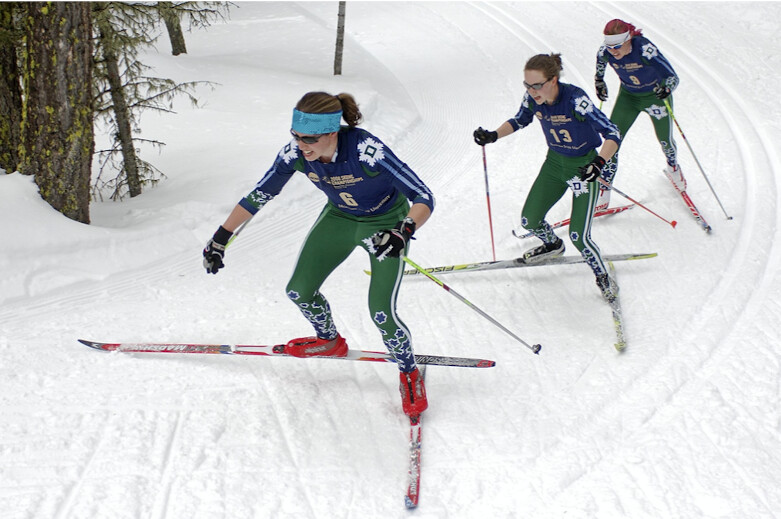
“I’ve been so immersed in biathlon for a long time, but running is really the place that I started out when I was younger and meant a lot to me for a very formative part of my life,” Dunklee said. “And I’m really excited to get back into it.”
Finding the Crossover Between Skiing and Running
While growing up in Barton, Vermont, Dunklee picked up skiing shortly after she learned how to walk, thanks to her family. Her dad, Stan Dunklee, competed in cross-country skiing at the 1976 and 1980 Olympic Games and now coaches cross-country skiing and track and field at the high school level.
At 5 years old, Dunklee started competing in cross-country ski races in Barton, which is known for producing top winter athletics talent, including Olympic cross-country skier Ida Sargent and Olympic biathlete Hannah Dreissigacker. Dunklee also thrived in that high level athletic environment.
“Sometimes you get these pockets of talent where kids are just doing something because it’s fun and it’s social, but you have enough of a group in one place that you have this threshold of momentum, and it just builds, you know?” Dunklee said. “You push each other, you train with each other, you have fun with it, you feel motivated, and it can take you places.”
When she was in first grade, Dunklee started tagging along on trail runs with her dad’s high school track team and loved the experience of exploring terrain on foot. “I remember the older high-school kids teaching me how to run down a mountain and just trying to learn how to bounce off the rocks and roll with gravity,” Dunklee recalled.
In high school, Dunklee shifted her primary athletic focus from skiing to running, because she enjoyed the traditions and atmosphere of running cross-country at the state level in Vermont. She appreciated how her St. Johnsbury Academy high-school coach worked to instill a level of commitment and consistency in the team’s training, and she felt that many of the cross-country courses where she races, which were “gnarly” and filled with hills, provided a unique “crossover between skiing and running.”
“Vermont cross-country really helped make me tough and resilient, so that was pretty cool,” she said.
In 2004, Dunklee was recruited to run for the cross country and track team at Dartmouth College. She embraced the opportunity because she wanted to compete in running and skiing at the NCAA level—and Dartmouth offers both athletic programs.
In the fall, she trained with the cross-country team in season, and would also jump into the ski team’s workouts once a week, which provided a unique cross-training dynamic. For example, she’d join the ski team on roller skis for an “over-distance” workout of 3-4 hours in the nearby Adirondacks or the White Mountains, a training session that remains her favorite form of exercise. In the winter, she trained full-time with the ski team in its NCAA season.
“It’s so empowering to feel like you could just keep going forever and to be up in these beautiful places, just really peaceful and nice,” she said.
Learning a New Sport
During her senior year, Dunklee received an email from U.S. Biathlon—the governing body for the sport that combines cross-country skiing and rifle shooting—in an attempt to recruit her. Her college ski teammate made the transition to biathlon after she graduated, so Dunklee was somewhat familiar with the sport, but she hadn’t participated in it before. The invitation also came at an ideal moment for the senior, who, like millions of other college students at the time, was facing the challenge of graduating during the Great Recession.
“It was hard to find jobs, and I still loved skiing and wasn’t quite ready to be done with it,” she said.
Growing up as the daughter of an Olympic cross-country skier, Dunklee also liked the idea of choosing her own journey in a new sport she could call her own. “There was something appealing about learning how to shoot and learning a new element that he had never done and had no experience with because I wasn’t just following in his footsteps,” she said. “I was going one step further and finding my own path.”
In the summer of 2008, she moved to Lake Placid, New York and jumped into U.S. Biathlon’s development program. However, learning a new sport that requires high levels of mental and physical focus wasn’t an easy task. Shooting was completely new to Dunklee and created a “fascinating challenge” that forced her to hone different strengths. She explained that athletes need to be disciplined with their pacing in order to have enough energy and focus to shoot accurately.
“I’ve always been one of those athletes who could just dig incredibly deep, push myself into the pain cave, and just fight through a race and gut it out. I’m scrappy, I’m tough, but with biathlon, to be able to shoot well, it’s a very different skillset,” she said. “I had to learn a little bit more discipline with that, but also the element of shooting itself requires this amazing ability to control your emotions.”
Dunklee has since become the most successful U.S. female biathlete in history, according to NBC Sports. She is the only American female biathlete with an individual world championships medal (silver in 2017 and 2020). So far at the Olympics, her best individual finish is 11th in the mass start at the 2014 Sochi Winter Games.
Returning to Running
Throughout her biathlon career, Dunklee kept running. During the height of the pandemic lockdowns in 2020, she ran every road in Craftsbury, where she’s been living and training since 2010, as a personal challenge. She still runs for an hour or two at a time three or four times a week, a routine that’s kept her balanced, she said.
“I see so many young athletes burning out, getting too specialized at too young of an age and investing too much of that identity just on one aspect of who they are,” Dunklee said. “And I'm just really glad that I didn't burn myself out as a young skier. And part of that was because I had this passion for running.”
In August 2021, after spending a decade as a member of Craftsbury’s Green Racing Project biathlon team, Dunklee was named running director of the Craftsbury Outdoor Center, an outdoor nonprofit organization and sportscenter for the local community with running, sculling, skiing, biathlon, and cycling programs.
Now she’s leading the running program, which includes annual camps, community running events, races, weekly track workouts, and fundraisers for local nonprofits, among other offerings. Recently, the organization formed a new team of elite runners for the Green Racing Project. In the remote-based club program, post-collegiate runners who compete in events ranging from the 800 meters to ultra races are provided with individualized coaching, gear, on-site training camps, and travel support, among other services, with Craftsbury as the primary sponsor.
“Now I get to stay at the outdoor center in a different role and also help really shape this new program we have … which is still very Craftsbury,” Dunklee said. “It has that same spirit of Craftsbury of being an athlete, reaching a high level, but also contributing to your community and promoting sustainability in lifelong sport.”
Looking ahead to Beijing as her final Olympics—the biathlon competition kicks off on February 5—Dunklee is at peace with closing this final chapter of her biathlon career in favor of starting the next phase of her life. After catching the flu upon arrival at the 2018 Pyeongchang Games and experiencing disappointment in her performances as a result, Dunklee said she realized that you can spend a lifetime preparing for a big moment, but there will always be factors outside of your control and it’s important to accept it in order to move forward.
“This time I just want to be able to go and try to stay focused on my process and take it all in, be flexible and see what happens,” she said. “I mean, I think I still have the capacity if I hit the peak fitness right, and I get a little bit lucky with how the wind is on the range when I come in and how other people do, I can still have a top result. But I don’t need to have that top result to validate my career.”
MORE FROM RUNNER'S WORLD ON APPLE NEWS
by Runner’s World
Login to leave a comment
2021 Virgin London Marathon won't feature any RW Pacers
Alongside many important changes to make the Virgin Money London Marathon 2021 as safe as possible for all involved, it was announced that there will be no RW Pacers at this year's event.
The long-standing relationship between Runner's World and VMLM to provide pacers at the event began in 2000 and our team of trusty flag carriers have helped guide numerous runners to the finish line and that much sought-after PB.
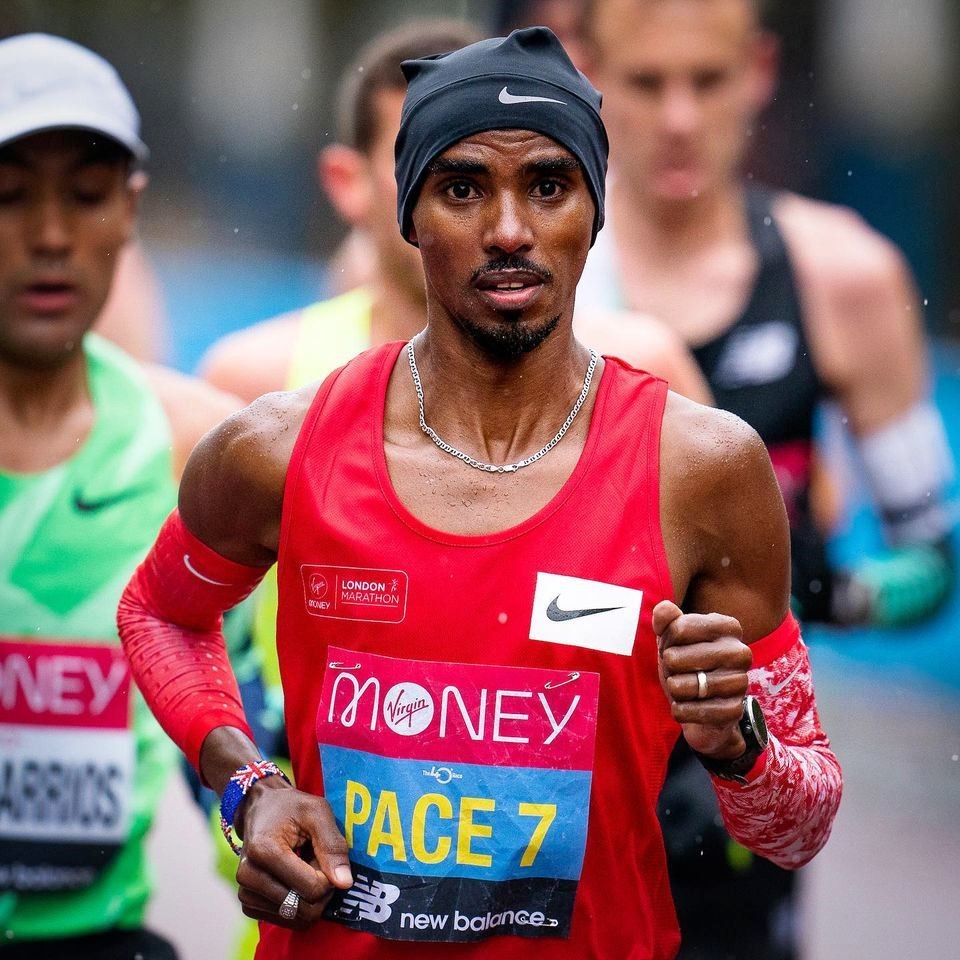
If you were relying on following a flag at the event this year, do not worry, you've already got through marathon training during a pandemic, so this will be easy.
A simple measure to help stay on track is noting down your mile splits for a certain time you are aiming to run and then arming yourself with a basic stopwatch with built in lap function/memory.

Each time you pass a mile marker on course, you click that lap button and you'll see how you're getting on. This negates relying on GPS, which can sometimes fail at points on the course. It's not a fail-safe method, but it's good to have a back up. It's also quite a nice distraction and helps you tick off the miles!
On Sunday October 3, it will be 889 days since we last ran the 26.2 miles of the Virgin Money London Marathon from Greenwich to Westminster.
For the last 40 years, these miles have been steeped in tales of human endeavour, in tales of perseverance, joy and tears, and, above all, in tales of the extraordinary and indomitable spirit of humankind coming together to celebrate life and raise more than a billion pounds for charity.Today we launched our campaign – We Run Together – to celebrate everyone taking on the 26.2-mile challenge on 3 October, whether that’s on the streets of London, or elsewhere in the UK or around the world in the virtual event.
Sunday October 3, is going to be a day to remember. It will be a marathon that you will never forget, and we look forward to welcoming you to the Start Line as we run together again.
Many of these new procedures have been tested in events since May, when we organised one of the first mass participation running events under the government’s Events Research Programme, and in events since: at Hatfield Park, the Standard Chartered Great City Race, and The Vitality Big Half.
by Ben Hobson
Login to leave a comment
TCS London Marathon
The London Marathon was first run on March 29, 1981 and has been held in the spring of every year since 2010. It is sponsored by Virgin Money and was founded by the former Olympic champion and journalist Chris Brasher and Welsh athlete John Disley. It is organized by Hugh Brasher (son of Chris) as Race Director and Nick Bitel...
more...British runner breaks Backyard Ultra world record
John Stocker ran 337 miles in 81 hours at the Suffolk Backyard Ultra event this weekend
A British ultrarunner has broken the Backyard Ultra world record.
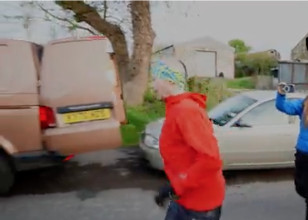
John Stocker, from Oxfordshire, ran more than 337 miles in 81 hours at the Suffolk Backyard Ultra beginning on Saturday.
Runners taking part have to complete a 4.167 mile lap of Suffolk’s Knettishall Heath every hour until they can’t carry on any longer. Participants must arrive back to the start in time for the next loop or they are knocked out.
According to race organisers, Stocker and fellow runner Matt Blackburn both beat the previous record of 312.5 miles in 75 hours, set by Belgian Karel Sabbe at Big’s Backyard last October. Sabbe told Runner’s World last year that his secret to resting was to 'give into sleep deprivation', turning his headlamp low and walking with his eyes closed so that he was ready for sleep by the time he returned to base.
Stocker and Blackburn both completed 80 laps, before Blackburn pulled out during the 81st lap. As no winner would be declared if he did not complete the lap, Stocker continued to run, completing the lap in 52 minutes, his slowest time.
That final lap was particularly difficult, Stocker told Runner's World. As he came out of the 'Spooky Woods' area of the course, he tripped and landed hard on his ribs. He thought he had "just lost it all", he said, before his resolve hardened. "I knew I just had to finish no matter what."
He said: "You could say the whole race flashed before my eyes, but with every small step I started walking along the road, then limping and onto running towards the finish and the win."
Race director Lindley Chambers told the BBC: 'What these guys have achieved is pretty incredible.'He added: 'I knew we had the calibre of people taking part and I personally thought we'd do 50 or 60 loops but these guys have gone beyond my expectation and have gone further than anyone else in the world competing in this format.'
Stocker and Blackburn reportedly completed each lap in around 45 to 50 minutes, leaving 10 to 15 minutes after each lap to rest and refuel before heading out for the next lap.
American runner Courtney Dauwalter told the BBC why this race format appealed to her in April: 'It’s a fun mental challenge,' she said, adding that backyard ultras are about 'finding out what’s possible rather than a race that you want to win. If we don’t limit ourselves, it’s pretty cool what can happen.'
by Runner’s World
Login to leave a comment
These two best friends ran a marathon in Crocs
Their socially distant ‘Croc-athon’ raised over £2000 for charity
Two students have completed a marathon wearing Crocs to raise money for an anti-slavery charity.
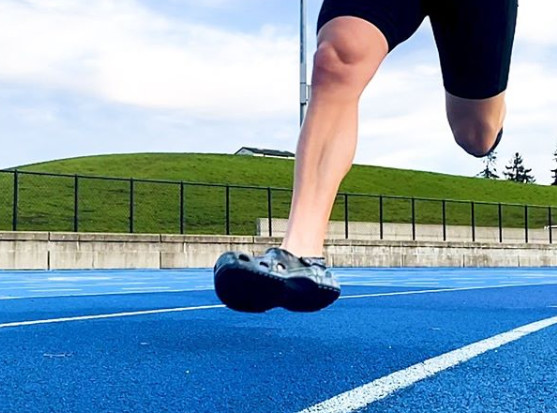
Best friends Carrie Hallam and Mhairi Russell ran the 26.2-mile distance together in Edinburgh on July 11th in aid of International Justice Mission UK. The global organisation works in more than 20 countries to abolish human trafficking and slavery, and regularly shares rescue stories of survivors.
Having discovered the prevalence of these abuses, the athletic duo was compelled to do something practical to make a difference.
'Lockdown has brought to light the injustices that exist across the globe. One of the most shocking things to me was learning that there are over 40 million people experiencing modern slavery today,' Hallam explains.
Wearing layered pairs of socks inside their sandals, Hallam and Russell crossed the finish line after 4 hours and 32 minutes.
The choice to run in Crocs was inspired by their united love of the world-famous brand.
'We see Crocs as a wholly misunderstood footwear,' Hallam tells Runner's World UK. 'They're bright, comfortable and aesthetically pleasing. They are also lightweight, breathable and they prevent plantar fasciitis – what more do you want in a pair of running shoes?!'
Although neither Hallam nor Russell had run a marathon before, they were equally eager to tackle the distance.
'After being locked down for two months, Carrie and I both had an excess of time and energy – we thought that a marathon was a great fitness challenge that would give us something to focus on and train for,' Russell says.
In their four-week training period, the pair focused on getting used to the challenge of running in Crocs.
After much experimentation, they devised a strategy to enhance the comfort of their footwear. 'We ended up with the perfect set up of prophylactic blister plasters, a pair of running socks and a pair of thicker hill walking socks,' Russell reveals.
Aware of the risk of running in less-than-suitable shoes, the women took a number of measures to fend off the threat of injury. Their training included intense strength-building, such as squats and lunges, and their race was run predominately on grass.
Having successfully completed their first marathon, the duo have set new running goals for themselves. While Russell now hopes to run a sub 1:45 half-marathon (also in Crocs), Hallam is planning to run another full marathon in under four hours.
'Perhaps long term, we’ll claim we are aiming to do an ultra in crocs, but we won’t be held to that one!' says Hallam.
by Runner’s World
Login to leave a comment
The 4th Annual My Best Runs World’s Best 100 Races for 2020 have been announced
It was made official today (Dec 26) the My Best Runs 2020 World's Best 100 Races. The editors at My Best Runs lead by MBR and Runner's World magazine founder Bob Anderson considered thousands of races; races that are the best, most interesting and unique and races that if you can get into won't let you down.
"There are well over 100,000 official running races around the world," stated Bob Anderson from his office in Mountain View California, "and these are our 100 of the best. It was very hard to only pick 100 since there are many more I know I would enjoy to run or at least watch."
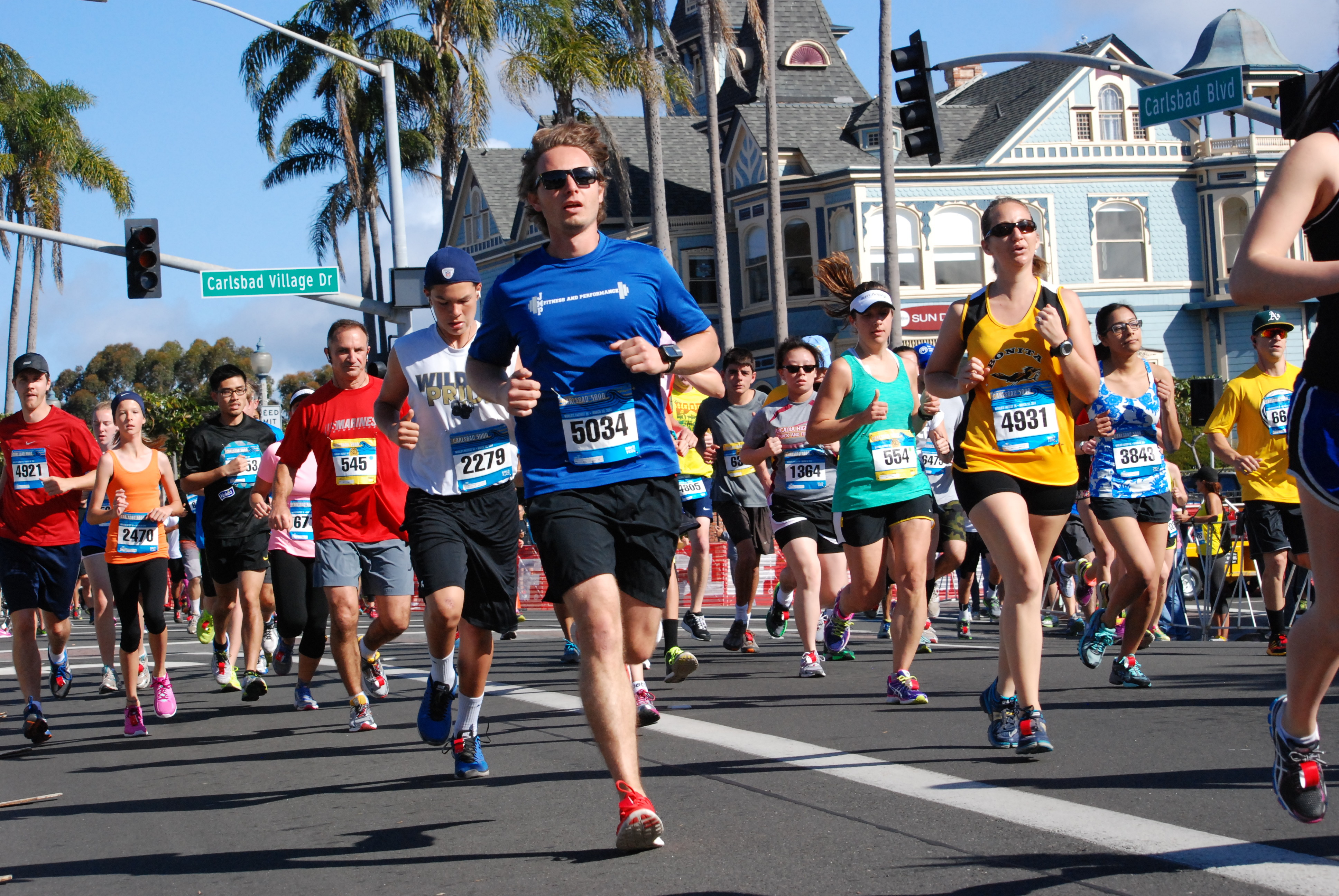
Bob Anderson loves to race. The soon to be 72-years-old (Dec 28) has run over 1000 races (including time trials) since he started racing in April of 1962. He still races and in fact won his age-group in winning the second half at the San Francisco marathon in 2019 and placed third in his age-group at the London Vitality 10k last May. In 2012 he ran 50 races, 350.8 miles and averaged 6:59 pace.
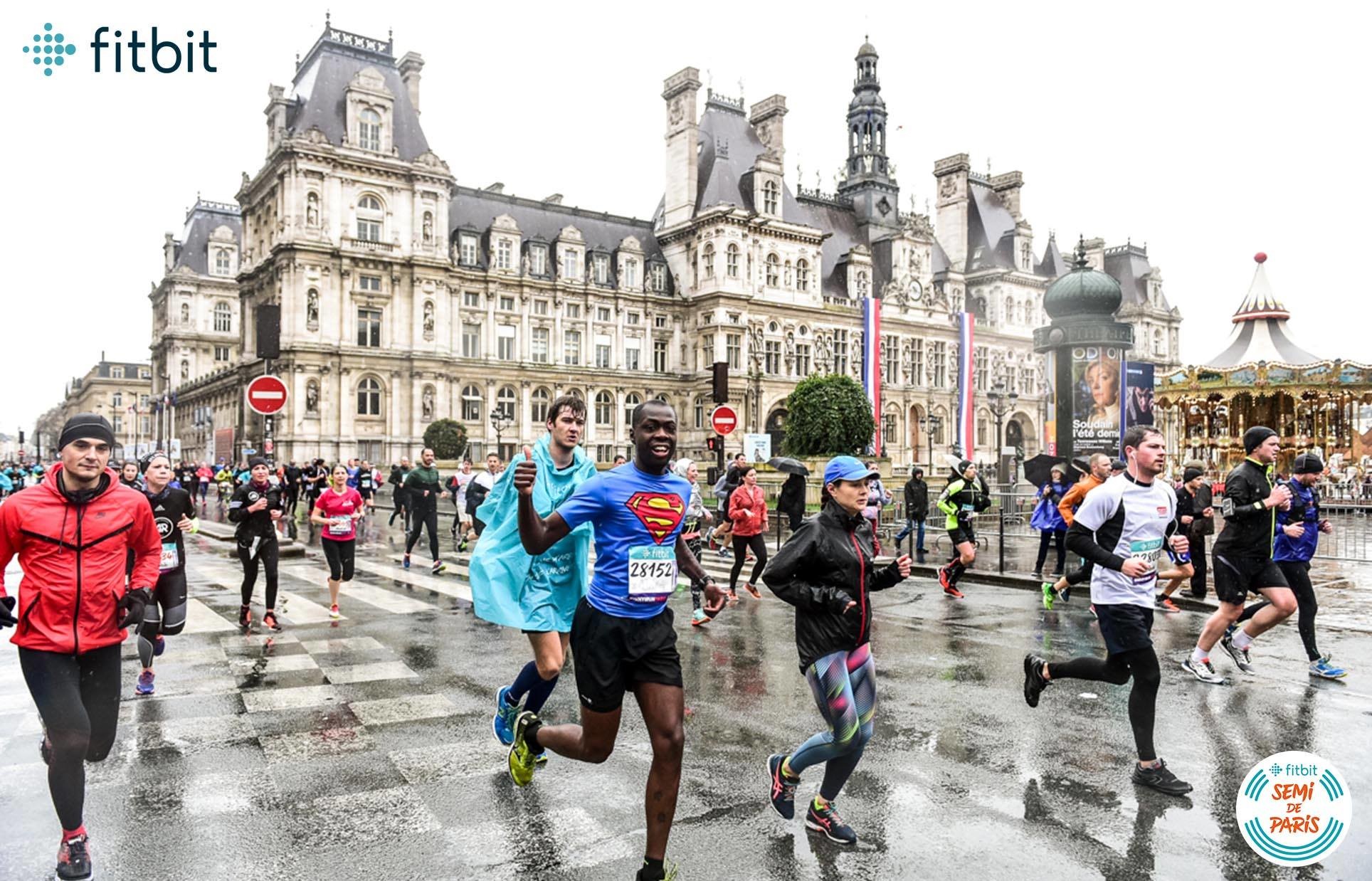
His My Best Runs website and the UjENA Fit Club website keeps him and his team plugged in to the current racing scene.
"We did not consider races which are more local in nature. Even through I love local races we only considered races that are international in scope. A race if you travel too, you would not be disappointed.
"With our nearly 80,000 unique visitors monthly from countries around the world, we considered all races around the planet," says Bob Anderson. "Some of these races are very hard to get into. But not impossible. If you can get in, these all would be a good racing experience for you. I hope to run more of these myself."
We would love to get your feedback on these races and recommendations for 2021. Post your comments or email Bob Anderson at bob@mybestruns.com (photos - Boston Marathon, Carlsbad 5000, Semi de Paris)
Login to leave a comment
I have run ten of these. Carlsbad 5000 (25 times), Boston Marathon (my fav), London vitality 10000 (which I am planning on running regularly), New York City Marathon, Kauai Marathon (beautiful course), Falmouth, Silicon Valley Turkey Trot, Bay to Breakers, Honolulu Marathon and San Francisco Marathon Weekend (second half). How about you? - Bob Anderson 12/26 4:40 pm |
Massachusetts runners are the fastest marathoners in the United States
When it comes to marathons, it's hard to top Massachusetts. It's home to the Boston Marathon, arguably the world's most famous 26.2-mile race.
Now, a new study claims the state's marathoners are the fastest in the country.
The study was completed by a Danish research team from RunRepeat. Billed as the largest survey of race results in history and conducted in collaboration with the IAAF, its conclusions are based on data from more than 107 million race results from 1986 to 2019.
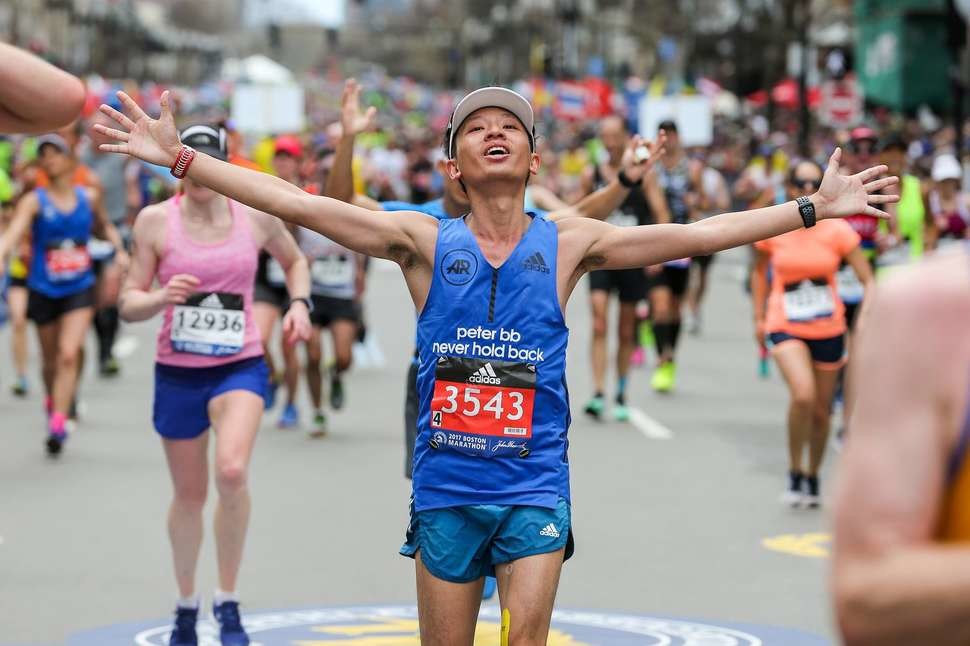
Massachusetts runners have an average marathon time of 4 hours, 4 minutes, 20 seconds, according to the study. That's nearly 14 minutes quicker than the second fastest state, Washington, which has an average of 4:18:09. Indiana ranks third at 4:18:57. For comparison, the report says Alaska (5:30) Florida (5:33) and Hawaii (6:16) are the three slowest states overall.
The average marathon time for Massachusetts women is 4:15:01, which is faster than the average time for men in more than 30 states. Massachusetts men average 3:54:31 for the marathon, according to the new study. Again, that's a big jump in time over runner-up Washington, whose men average 4:05:56.
The report is based on residency. If a runner from Massachusetts runs the New York Marathon, the result is attributed to Massachusetts.
The study doesn't explain why Massachusetts runners are faster than the rest of the country, but Danny McLoughlin of RunRepeat has a theory.
"I think that the goal of the Boston Marathon qualifying time acts as an inspiration to the people of Massachusetts," he said. "To have such a prestigious marathon in your own state that you have to reach a certain level to qualify for can act as a target for a lot of local runners and push them to a level they would not have achieved otherwise without this target hanging over them."
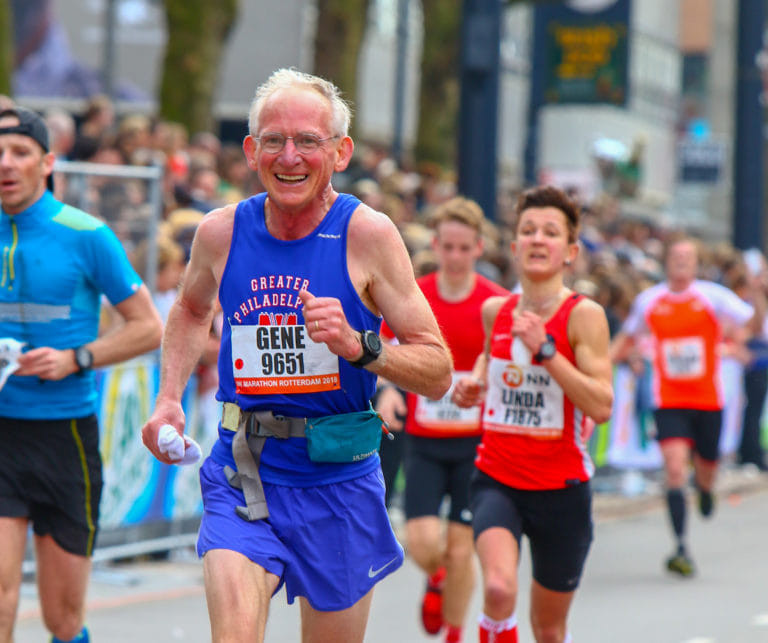
New Mexico ranks 44th overall in the study but its runners are getting faster. They shaved more than 27 minutes off their average marathon times over the last decade. It's one of 12 states where average times have improved over the last decade. The rest have slowed down.
New York leads the way when it comes to marathon participation, accounting for close to 14% of all American marathoners. Massachusetts is fifth at just under 6%. Overall, participation in marathons in the U.S. peaked in 2014, with 545,390 people running 26.2 miles races.
While the overall number of marathoners has declined in the last five years, the number of women running marathons has been on the rise, according to the study. In Florida and Illinois, the two states that have the most female marathoners, there are actually more women running the distance than men.
Runners from all 50 states participate in the Boston Marathon every year, where these finish times have a practical application. Marathon organizers have tightened general qualifying standards by 5 minutes across the board for the 2020 race. A 40-year-old man now has to run 3:10 to qualify. A 40-year-old woman has to run 3:40.
Over the last few years, just having a qualifying time isn't good enough to get into the iconic race, which has a cap on participants. According to Runner's World, more than 7,000 qualified runners were not accepted into this year's race. You had to be nearly 5 minutes faster than your age and gender qualifying time to get a coveted bib.
by Alex Ashlock
Login to leave a comment
Boston Marathon
Among the nation’s oldest athletic clubs, the B.A.A. was established in 1887, and, in 1896, more than half of the U.S. Olympic Team at the first modern games was composed of B.A.A. club members. The Olympic Games provided the inspiration for the first Boston Marathon, which culminated the B.A.A. Games on April 19, 1897. John J. McDermott emerged from a...
more...A Long Run the movie tells one man's story, but it's every runner's journey. Bob Anderson's life connects us to many icons...by the end, you're left with a runner's high without the sweat says Dan Brown
Over 100,000 people have already watched A Long Run the movie with good reviews. Now you can watch the full length movie...compliments of MyBestRuns.com with speical arrangments with it's production company Around Town Productions.
Actor Sean Astin who narrated the film wrote, "I loved A Long Run. Thank you so much for letting me be a part of your wonderful journey Bob." Boston Marathon director Dave McGillivray wrote," In watching A Long Run, you readily see the impact and influence Bob has had on our sport over the years. This story is inspiring, motivational, educational and simply makes you want to go out the door and do a run..and a real 'long run' at that."
Joe Henderson writer and former Runner's World editor wrote, "I’ve always known Bob Anderson as a man of Big Ideas, one with a knack for making these dreams come true. He conceived a little magazine called Distance Running News, which grew into the biggest one, Runner’s World.
"He created a book division that published some of the sport’s best-selling titles...This all happened before Bob turned 30, but his idea-generating didn’t stop then. At more than twice that age, he dreamed up Double Racing and then to celebrate his 50th anniversary as a runner, Bob plotted a tough year-long course: 50 races, averaging better than seven minutes per mile overall, concluding the week he would turn 65."
A Long Run tells one man's story, but it's every runner's journey. Bob Anderson's amazing life connects us to icons like Bill Rodgers, Billy Mills and Paula Radcliffe but also to the low-budget thrill of a community 5k. The gorgeous cinematography captures The Avenue of the Giants, the beauty of Central Park in New York City, the San Francisco landscapes, resort cities like Cancun and Cabo, the lush island of Kauai and the vistas of Fort Bragg.
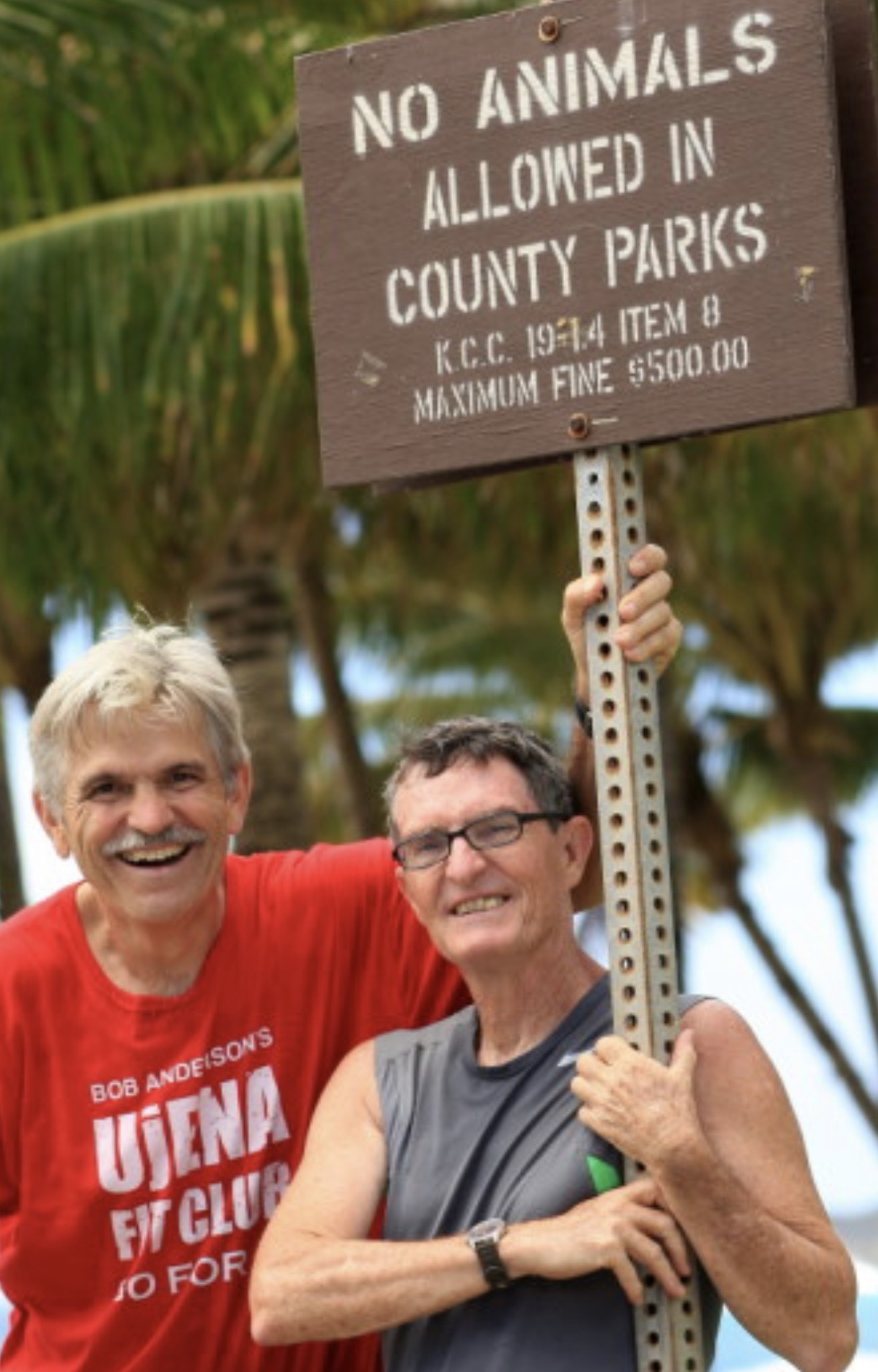
And the smoothly intertwined stories - his 50-race challenge, the magazine, the running boom - are handled with Olympic-caliber pacing. By the end, you're left with a runner's high, without all the sweat.
This is an inspirational life long journey that takes you across the United States, into Mexico and introduces you to some amazing runners.
A Long Run features Bob Anderson who started Runner's World magazine when he was 17 with $100. He grew the magazine to nearly a half million circulation with monthly readership of nearly 2.5 million before selling it to Rodale Press in 1984. How did he do it and why did he sell the magazine he loved?
50 years after he started running, he started his 50 race challenge... one year - 50 races - 350 miles.
His goal - Average under a 7 min/mile average pace at 64-years-old. That's fast for any age!
In the running formula known as age-grading, Anderson’s mile pace is the equivalent of a 30-year-old running an average pace of 5:24 for 50 races covering 350 miles.
“I wanted to do something special, something that would be very positive for running,” Anderson said. “But I also wanted to do something that would not be easy.”
Did he reach his goal? How did he cope with injuries? Weather? Hills? How did he recover each week?
Bob Anderson first run took place Feb. 16, 1962. His first race was May 7 that year, when he covered 600 yards at Broadmoor Junior High in 1 minute, 39 seconds. By 1963 at age 15 he placed first at the Junior Olympics in Missouri clocking 2:08.5 for 880 yards.
By 17, Anderson wanted to tackle a marathon. He wanted to run the Boston Marathon. But neither he nor his high school coach (coach McGuire) knew how to prepare. So Anderson did the 1965 equivalent of a Google search: He sent letters around the country asking for advice.
Coaches and top athletes replied not just with training tips, but also with addresses of other people Anderson should try. Soon he had a network of running experts at his disposal.
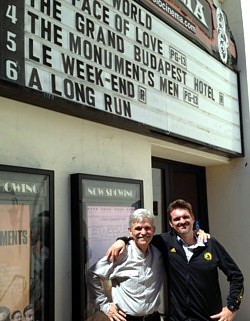
Recognizing the value of this collected wisdom, he turned to teammate David Zimmerman while on a bus trip to a cross-country meet for their Shawnee Mission West team. “I’m going to start a magazine,” Anderson declared.
With $100 from baby-sitting and lawn-mowing jobs, the 17-year-old launched Distance Running News. The magazine debuted in January 1966 with a 28-page issue that Anderson collated, stapled and folded himself.
The publication created a stir among a previously unknown army of foot soldiers. Thirsty runners plunked down the $1 subscription price (for two issues) — and often enclosed an additional $5 just to make sure the magazine stayed afloat.
“Until then, I wasn’t even aware that there was a running community,” said SF Bay Area runner Rich Stiller, who had been running with Anderson since the early 1970s. “I always think that Runner’s World was part of the jet-propulsion that really made the running boom take off and made people realize, ‘Oh, gee, I’m not doing this alone.’ ”
The magazine grew so quickly that Anderson dropped out of Kansas State University. He recruited a SF Bay Area writer and runner named Joe Henderson to be his editor, and moved the magazine headquarters to Northern California.
Anderson’s 50-for-50 goal was in jeopardy after he stumbled out of the gate or, more specifically, down a trail in Mountain View.
While on a training run in December, Anderson awoke to find his head streaming with blood and two people standing above him looking alarmed.
“There were no marks at all on my hands, which means I must not have even realized I was going down,” he said.
The fall required over 60 stitches and plastic surgery. But determined not to cancel the first race in his 50-race quest, Anderson limped to the starting line in San Francisco on New Year’s Day with a ruddy forehead and an eggplant of a bruise on his left knee. He finished that first race and then 49 more that year.
When Bob was publishing Runner's World he got so consumed managing a staff of 350 and was not able to train enough to run the Boston Marathon. However he did run ten marathons between 1968 to 1984 but none with enough training. He would not run Boston until 2013 when at age 65 he clocked 3:32:17.
A Long Run the movie covers a lot of ground. The year long event finished over six years ago but the story is fresh and a movie all runners and even non-runners will enjoy. You will want to watch it over and over again.
Some of the runners besides Bob Anderson featured in the film include: Bill Rodgers, Paula Radcliffe, Joe Henderson, George Hirsch, Rich Benyo, Amol Sexena, JoAnn Dahlkoetter, Rich Stiller, Hans Schmid, JT Service, Pina Family, Wall Family, Billy Mills, Gerry Lindgren, Dave Zimmerman, Dean Karnazes, Monica Jo Nicholson, Coach Lloyd McGuire, Katie McGuire, Mary Etta Blanchard, John Young, Roger Wright and more...
It was produced by Around Town Productions and directed by Michael Anderson (third photo at one of the showings in a theater in Monterey).
To watch the movie click on the link or go to: www.alongrun.com
by Dan Brown
Login to leave a comment
17 time NCAA champion distance runner Edward Cheserek will make his Carlsbad 5000 debut
The most decorated runner in NCAA history and one of the hottest superstars in athletics, Edward Cheserek will make his Carlsbad 5000 debut at the 34th running of ‘World’s Fastest 5K’ on Sunday, April 7, 2019.
“I’m excited to be part of Carlsbad 5000,” said Cheserek, who ran the second-fastest indoor mile in history last year, finishing in 3:49.44. “It’s an iconic event that I’ve always wanted to race.”
At the age of 25, Cheserek has established himself as an international star in the running world that only shines brighter as his career progresses. In high school he attended Saint Benedict’s Preparatory School in New Jersey, where he twice won the Foot Locker National High School Cross Country Championships.
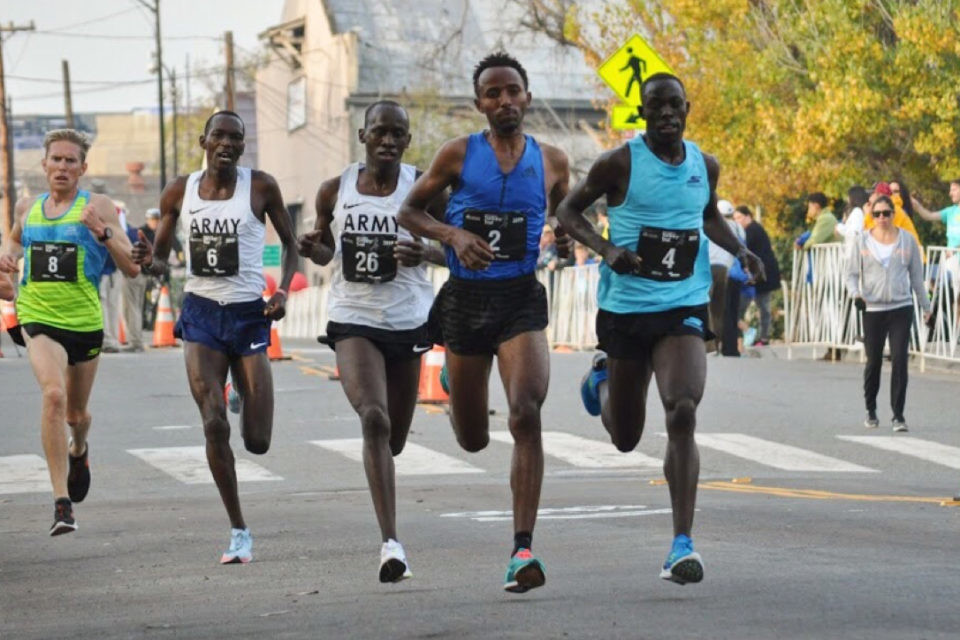
He was a 17-time collegiate national champion at the University of Oregon when he graduated in 2017.
“Carlsbad 5000 is one of the most historic races on the road running circuit. To attract a talent such as Edward Cheserek is testament to the event and its reputation,” said Matthew Turnbull, longtime elite athlete recruiter for the event.
“Ed is one of the most exciting athletes in the world and to have him racing in Carlsbad next week is a great statement, he has the personality and ability to go all the way. This race has nurtured many World and Olympic Champions, Ed certainly fits that mold and we’re excited to see him here and to watch him perform on the global level chasing medals for years to come.”
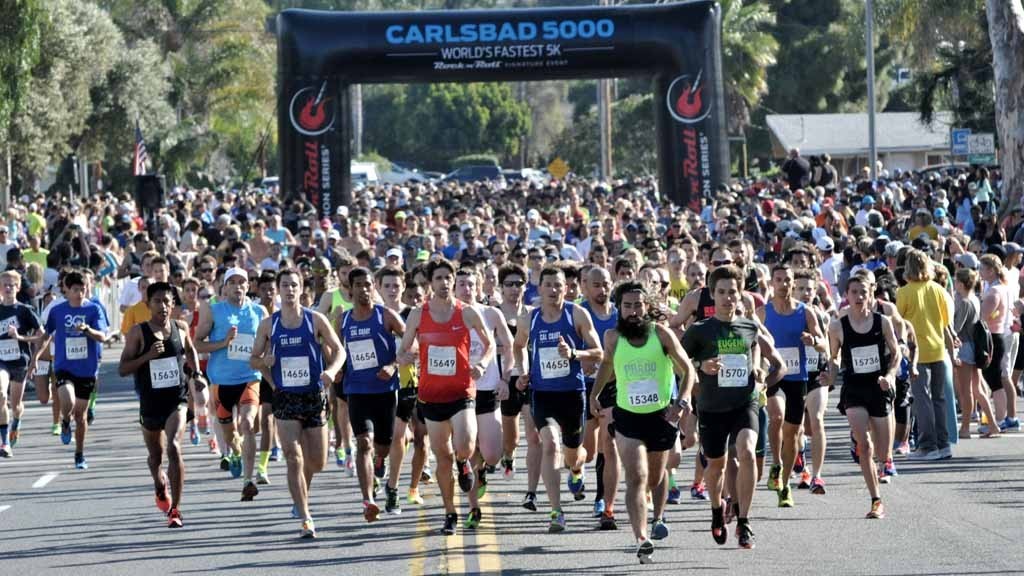
Since 1986, thousands of runners and walkers have converged on the seaside village of Carlsbad in early Spring to enjoy the scenic course or to set world records at the Carlsbad 5000. The annual road race attracts amateur, competitive, and professional runners from around the world.
The men’s event record and world 5K best is Kipketer’s 13:00, which he ran in 2000 & 2001. The modern, IAAF recognized 5k World Record was set in Monaco this February by Switzerland’s Julien Wanders with a time of 13:29.
My Best Runs director and Runner's World founder and publisher for 18 years, Bob Anderson will be running the Carlsbad 5000 for the 26th time. Over the years his best time was 17:09 while in the 50-54 age group. He hopes to be in the top three or even win the 70-74 age group this year.
Login to leave a comment
Carlsbad 5000
The Carlsbad 5000 features a fast and fun seaside course where 16 world records have been set. Both rookie runners and serious speedsters alike enjoy running or walking in Carlsbad. Weekend festivities kick off Saturday morning with the beloved Junior Carlsbad, a kids-only event in the heart of Carlsbad Village featuring fun runs, toddler trots, and diaper dashes! On Sunday,...
more...The Run The World Challenge will motivate you to run more miles...RTW4 starts March 1 with an exciting new format
The Run The World Global Challenge (RTW) is a world-wide celebration of running. Lifetime runner, Runner's World magazine and My Best Runs founder, Bob Anderson (71) created the event to help further spread the word about the benefits of running. The first RTW Challenge started July 4.
On March 1 the RTW4 Challenge will start with some changes to make the event even more fun and challenging.
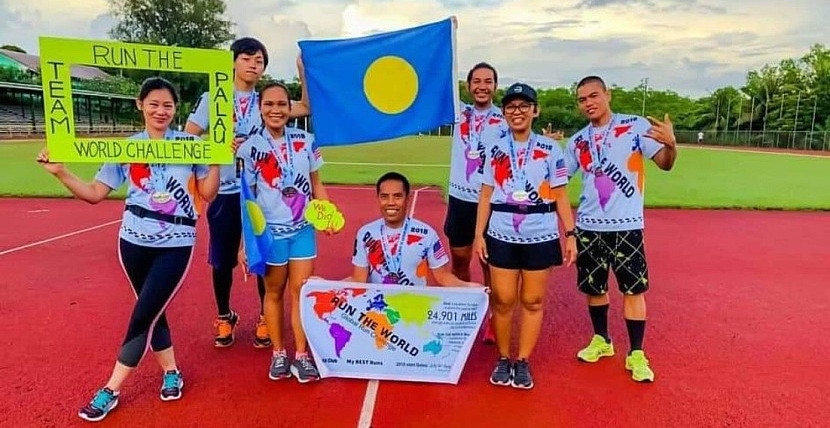
"Since I started running in 1962 I have been telling people about the sport I love," says Bob Anderson "I am proud to say I have reached a lot of people but the task is never done. Run The World is my current project and the feedback from around the world has been very positive."
Lize Dumon from South Africa posted this on the Run The World Feed January 5. "Possibly my last run for RTW3. Might do a small one to bring me close enough to 200 miles. Been a priviledge to be a part of all three Run The World Challenges. I have made loads of friends and learned a lot." Lize is putting together two South African 14 people teams for RTW4.
Already 260 Run The World runners have run and logged 85,876 miles (as of Feb 5, 2019) since July 4th in 56 different countries. In the little country of Palau alone, teams there have already run and logged 5,648 miles (photo 2 of some of the Palau RTW1 team headed up by Aaron Salvador). Aaron is putting together two teams of 14 for RTW4.
"Run The World Challenge is a great motivator," says Bob. "I was running 20 miles a week before Run The World. I now have been averaging 32 miles weekly and I am much better shape because of it. There are many such stories among the 260 runners who have already participated."
The first team that started July 4 finished in 36 days 23 hours and 13 minutes (the current world record). Two other teams starting August 29 and October 29 also completed the goal of circling the world.
How does it work? Participants run or walk and then log in those miles (k’s) on their free My Best Runs (MBR) account. The goal is for the team (now group of teams) to log enough miles (k's) to circle the world within 30 days.
The process of running/walking and then logging in miles (k's), making a comment (optional) and posting a photo (optional) is the basic program. A team member logs into their My Best Runs account to log in the miles they run or walk.
One major change is RTW4 will end 30 days after starting. "It is hoped one of our three groups of teams will reach our goal within this time frame but if not the group of teams that have logged the most miles win. All teams within the three groups will also be competing against each other," says Bob.
All runners will be part of a 14 person team. The teams have many interesting themes like: Team one will be for runners 70 plus. Team 9 is for those men and women who have or are in the Military. Team 10 and 11 are for Elite Runners. Team 21 is for India's citizens. Team 23 are for runners living in Canada. Team 34 are for those runners who have completed at least one 100 mile race. Team 37 are for runners who have lost 50 or more pounds and are currently running. Team 42 are for runners who have run at least 50 races in one year. (Click the link for the full list of the 42 team.)
Runers will pick the team of their choice as long as it is not full. There are 14 different teams (with a maximum of 14 runners per team) making up a group.
One unique aspect of RTW4 is that one person can be on one team, two or three teams. BUT the teams have to be in different groups.
When you run, let say five miles, these same miles only need to be entered once and they will be credited for all your teams.
Registration is now open. "It was hard to pick just one team per group," says Michael Anderson who has done all RTW Challenges. "I could have signed up for several different teams but I decided on Team 30 having fnished at least one Boston Marathon, Team 25 West USA because I live in Bend, Oregon and Team 4 age 40-49. Can't wait to do this again. It has really motivated me to run a lot more. Bring it on."
Login to leave a comment
Run The World Global Challenge
Run The World Global Challenge (My Best Runs Running Log)is a world wide celebration of running. RYW Challenge 13 started Jan 1, 2025 and will go the entire year ending Dec 31, 2025. See how many miles you can log of running and walking. The continuing RTW1 Challenge started July 4, 2018. Participants run or walk and then log in...
more...My Best Runs founder Bob Anderson is the featured runner on Amby Burfoot's Lifetime Running website today
Bob Anderson is the featured profile today on Lifetime Running.
As the founding publisher-owner of Runner's World magazine ("Making Tracks Since 1966"), Bob Anderson played a pivotal role in the American running boom. Less well known: He has been, and at age 71 remains, a passionate runner and racer. In recent years, Anderson has thrown his creative energy behind a Double Racing concept ("Running with a halftime break") and a free Running News Daily column which Bob edits.
Here are some excerpts from my interview:
When did you start running and WHY?
I started running on Feb 16, 1962. My older brother went out for cross country because my dad ran some in the Navy and I wanted to give it a try. Could not run without stopping after a mile that first day.
Your best races and running achievements?
One of the features on our Ujena Fit Club website is that it age grade all races. Five of my top races that I am most proud of would include when I ran a 1:25:24 half marathon at age 64. A 59:17 10 miler at age 53. A 17:09 5k at Carlsbad at age 49. A 3:32:17 marathon at Boston age 65. And a 2:08.5 880 at age 15.
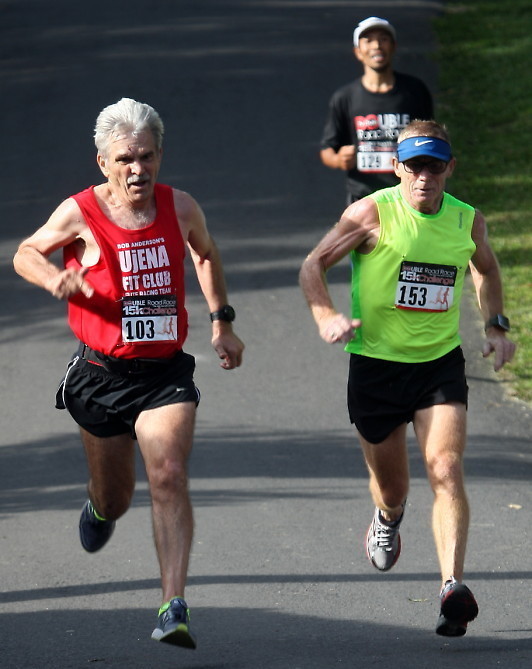
But my greatest running achievement has to be when I ran 50 races in 2012 at age 64. My 50-race challenge was not just about finishing a race each weekend but it was also about achieving an average performance which would be at least 80% age graded. I raced 350.8 miles and averaged 6:59 per mile.
3 key tips for successful lifetime running?
1--Run or walk each day outside covering at least one mile.2--Don’t worry about speed unless you want too. Make this your choice.3--Run at least a few races each year.
Favorite quote?
Steve Prefontaine: “To give anything less than your best is to sacrifice the gift.”
What are the biggest lessons (life lessons and running lessons) you have learned from running?
Running is magical and makes everything possible. My day is not complete without a run. Running is just part of my DNA. If I had not found running, I can not imagine what kind of life I would have had.
Age is only a number and even through the number is getting larger, I just don’t let a number tell me what I can or cannot do. We only live once, so why not enjoy it to the fullest?
Running helps add meaning to every day.
After posting this on FB Gary Rush wrote:
If not for Bob Anderson and his magazine, and the stories and photos and dreams it inspired in my life- I likely would have not been a runner since age 14 or a marathoner since age 15...
Editor's Notes:
First Photo: with Linda Sereno at the San Juan Christmas 2018 Double Road Race (Dec 16, 2018). Linda was awarded the Best Double Racer for 2018 the night before along with Dwayne Spencer. Second Photo: finishing the 10k leg of a Double Road Race in Bali Indonesia with Ken Whyte from Ausutralia.
The next Double Racing event will be the Palo Alto Double 8K (5K+break=3k) on March 10, 2019.
by Amby Burfoot
Login to leave a comment
Palo Alto Double 8K & 10K/5K
The Palo Alto 10K, 5K and Double 8K (5k+break+3k) will be held in the Palo Alto Bayland Open Space on the west shore of San Francisco Bay. The Double 8K Run/Walk is a two-stage run (5K+Halftime+3K). The races will be run on a flat, fast course. The 5K and 10k courses are mostly on paved and hard-pack trials. The 3K...
more...Best Racing Moment of 2018 and My Best Runs 2019 World Best 100 Races were announced today
My Best Runs "Best Racing Moment in 2018" and the My Best Runs "2019 World Best 100 Races" were announced today in Mountain View, California at the My Best Runs (MBR) headquarters.
First on the agenda was the announcement of the 2018 Best Racing Moment. MBR founder Bob Anderson stated, "Eluid Kipchoge was all smiles as he crossed the finish line at the Berlin Marathon September 29."
"He had just smashed the world marathon record clocking 2:01:39. Eliud ran the last 17k without pacers, pushing himself, taking off one minute and 18 seconds off of Dennis Kimetto's record."
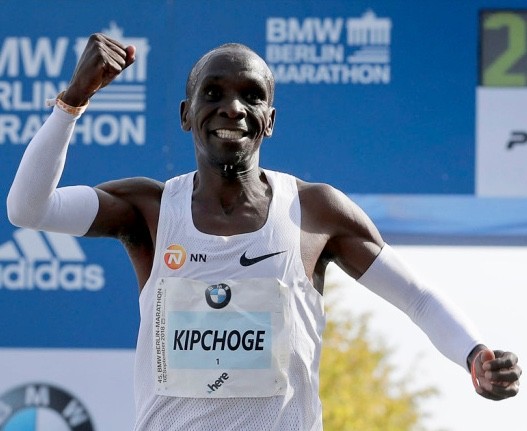
"The world has rarely seen one event so dominated by one man, Kenya's Eliud Kipchoge," says Bob who also was the founder of Runner's World magazine (1966) and publisher for 18 years.
Eliud has won many awards this year including World Athletes of the Year at the IAAF Awards.
Next up on the agenda was the annoucement of the 4th Annual My Best Runs 2019 World Best 100 Races.
"There are so many good races in the world. This list could easily be much bigger. However, as we have done now for four years, we have narrowed it down to the top 100," stated Bob.
The featured race at 44 of the best 100 are marathons. There are 20 half marathons and 14 10ks. There is the Western States 100 miler and the Comrades Ultra marathon in South Africa.
The shortest race is the New Balance 5th Avenue Mile in New York City. The longest is the 156 mile Marathon Des Sables coming up March 5 in Morocco.
Most offer prize money totally million of US dollars. The Standard Chartered Dubai Marathon coming up January 26 is offering $1,316,000. This marathon which was first held in 2000 top four men at the 2018 race all ran under between 2:04:00 and 2:04:06. Four women ran between 2:19:17 and 2:19:53.
"It is good to see over $21 million (from races MBR are featuring) in prize money being offered runners," says Bob. "Running is what these runners do and the money is well deserved and important for our sport."
Of course the Berlin Marathon is one of our top 100 but so is the Valencia Half Marathon (Spain) where Abraham Kiptum broke the world half marathon record in the 2018 race by clocking 58:18.
The Birell 10k Race in Prague, CZE also made the list again for the 4th year. 18-year-old Phonex Kipruto from Kenya clocked 26:46 while Caroline Kipkirui clocked 30:19. "This is one fast evening race and obviously belongs on our top 100 list," stated Bob.
The list has races from 23 different countries.
"You can not go wrong in running any of these races," says Bob Anderson. "Your biggest challenge in many of these races will be to be able to be on the starting line. But if you can get in, you will have a blast."
by My Best Runs
Login to leave a comment
Running legend Amby Burfoot is going to run his 56th consecutive Manchester Road Race
Login to leave a comment
Gene Dykes is currently the world's top 70 Plus runner - My Best Runs Exclusive Profile Part One
Gene Dykes is the world's best runner in the world currently seventy plus. "One of my 'secret' training methods for marathons is to run a lot of ultras," Gene told My Best Runs in this exclusive profile.
"I’ll begin training for Boston in January, and to kick it off I’ll run a 50-miler in January and both a 100-miler and a 200-miler in February. During March I’ll convert that training base into marathon speed."
Sounds wild and unconventional but it has been working for 70-year-old Gene Dykes from Philadelphia..."It was thought by many of us that Canada's Ed Whitlock's records were way beyond reach," says lifelong runner and Runner's World and My Best Runs founder Bob Anderson.
"At age 73 Ed became the first 70 plus runner in the world to run the marathon under three hours." In 2004 73-year-old Ed Whitlock clocked an amazing 2:54:48 at the Scotiabank Tornonto Waterfront Marathon.
No one ever had run a marathon that fast 70 plus. The late Ed Whitlock was in a league of his own until now. At the same marathon this year on October 21, 70-year-old Gene Dykes clocked 2:55:18.
My Best Runs wanted to find out more about this new super star, a runner who has set PR's at all distances (other than the 5k) over the last year from 1500m to 200 miles. How did Gene discover running?
"It’s probably more accurate to say that I discovered running twice," said Gene. "The first time, when I was about fourteen, it just kind of popped into my head to run three miles to the house of a girl I was interested in. After about a mile and a half, I had to walk for a bit. I was really disgusted with myself, and I swore I would never again resort to walking on a run.
"I actually kept this promise, until I started doing trail races, of course, where there are lots of good reasons to walk now and then."
After this he ran track in high school for a couple of years. "In my senior year I thought I was pretty good when I dominated the 2-mile run in my county. That notion was quickly dispelled when I ran track in college and I was totally blown away by the competition. For the next four decades, I would stay in jogging shape much of the time, but it never occurred to me to race because it had been firmly impressed upon me that I wasn’t a very good runner," Gene remembers.
He rediscovered running in 2004 at the age of 56 after a six year layoff because of a torn hamstring... "A golfing acquaintance told me he had a running group and that I should join him sometime. A classic case of falling in with a bad crowd. They encouraged me to run some races with them, and discovering that I wasn’t half bad, my running career was born," Gene told us.
So how important is running to Gene? "It started out as an activity I looked forward to on weekends, and it slowly took over as my main hobby. Probably starting around 2011 when I ran my first adventure race and started training for Comrades (56-mile race in South Africa) it became way more than just a hobby. While it will never quite reach the point of being 'all-consuming.' I suppose you would be forgiven for thinking that, considering that I’ll have done 38 races in 34 weekends this year."
The obvious next question was, tell us about your training. "For about nine years I just stumbled my way through training. I did lots of long, slow runs with occasional track workouts. I gradually improved, and I was having a lot of fun, but I was worried that my best days were behind me when I fell miserably short of a new marathon PR at the 2013 Toronto Marathon.
"Swallowing my pride and opening my wallet, I hired a coach. What a life changing decision that was! In just five months I went from a half decent runner with modest goals to a runner capable of competing at the highest levels. Training now consists of fewer miles, but harder workouts and fewer rest days," says Gene.
He has set PR's in the last 12 months from 200 miles down to the 1500m. He clocked 98 hours, 10 minutes 22 seconds for 200 miles, 23:41:22 for 100 miles, 1:26:34 for the half marathon and 5:17 for 1500m.
In 2018 he won ten USATF national championships. His 2:57:43 clocked at this year's Rotterdam Marathon was a world single age record until he bettered it in Toronto.
Gene says, "I’m particularly fond of having won championships at both track 1500 meters and trail 100 mile this year.” In part two Gene talks about his diet, going after more records, dealing with injuries and a lot more. Coming tomorrow October 29 on My Best Runs.
by Bob Anderson
Login to leave a comment
Count down to the third Run The World Global Run Challenge
The little country of Palau had a lot to celebrate after finishing 5th in the Run The World Global Run Challenge 2 that concluded October 12.
Palau's team leader Aaron Salvador posted in the RTW Feed, "This is now the fruit of our labors, those sweats, early morning runs, long runs and running under the rain/heat of the sun are all worth it."
He himself ran and logged 378 miles during the 44 day event. Miles ran and logged in Palau totalled 1,187. Team members only ran more miles in the countries of United States, Kenya, India and South Africa.
Palau is located in the western Pacific Ocean. There are mountain and sandy beaches on its east coast and grassy fields surrounded by palm trees in the north. Current population is just under 22,000. Aaron and team will be competing again in the up-coming RTW Challenge 3 starting October 29.
"Our team from around the world is being put together now," says Bob Anderson Team Caption. "We have runners of all abilities on our team. Current and past elite runners make up our team as well as runners who have just started running. All ages run and walk with us from age 11 to age 74."
34-year-old team member Carmen Gair from South Africa wrote, "RTW Challenge 2 motivated me to log more mileage than I have ever done before in a similar time frame. I can’t wait to see what Challenge 3 brings. Absolutely love being part of this wonderful running community."
62-year-old Kiranpal Singh Dhody from India will be participating for the third times says, "I love running for fitness...I try to push myself to get good timings in competitions and get podium finishes. The RTW Challenge helps me push myself."
RTW Challenge 3 starts October 29. It is easy to participate. Just run, race or walk and then log these miles (k's) into your My Best Runs account.
South Africa team leader Lize Dumon posted, "I haven't realized how precious this RTW community has become to me. It is like an extended running family...It has become a place where I learn so much about running from reading everybody's posts and a place of immense encouragement... bring on Challenge 3."
This event was created by 70-year-old Bob Anderson who founded Runner's World when he was 17 and published it for 18 years. "I hope you will join our team," says Bob. "Sign up by October 29 or join us along the way."
by Bob Anderson
Login to leave a comment
Trevor Van Ackeren won the Runner's World Half Marathon for the second time
Login to leave a comment
My Best Runs helped tell the world about the photo finish at the 2018 Illinois Marathon
The top two finishers at last year's Illinois Marathon were both clocked at 2:21:03. The finish line judges gave the win to 22-year-old Tesfaalem Mehari and 39-year-old Wilson Chemweno second.
My Best Runs helped tell the world about this exciting finish. My Best Runs published the leader board results just as soon as they were official.
Race director Jan Seeley had decided to have the Illinois Marathon featured and followed by My Best Runs (MBR) months before.
"We only feature the best, most interesting and unique races," says MRB founder Bob Anderson, "the Illinois marathon is the type of race we want to share with our over 600,000 unique annual visitors."
MBR is supported by races. "Jan recently signed up for another year and we appreciate her support along with our many other race directors," says Manuel Juarez, MBR sales manager.
MBR was started by lifetime runner Bob Anderson, the founder and publisher of Runner's World Magazine (from 1966 to 1984). Bob, now 70, is still running 35 miles weekly and racing at sub 8 pace.
"My Best Runs is for runners who love races," says Bob Anderson. "We are helping race directors publicize their race, and our website helps visitors find races from around the world without having to spend hours searching the Internet. It is now in one place. This is much more than just a race listing," says Lisa Wall, MBR social media director.
MBR features Photos, Videos, Course Maps, registration link, Leader Board Results, prize money, race write ups, background info, current race stats and promote discount codes if you do this. "Our editorial team will put this all together for you and post your results as soon as they are official, keeping your race updated every step of the way," says Michael Anderson, media director.
As news becomes available, your race will also be featured in our column Running News Daily and in our weekly newsletter. "We want to tell more people around the world about your race," says Bob. Contact Manuel Juarez for more details at 650-209-7820 or write manuel@mybestruns.com
"We appreciate your support. This is a win-win situation and we can have your race up within 24 hours at a reasonable cost," says Jamie Sanchez, MBR content manager.
Login to leave a comment
I needed some motivation and the Run The World Challenge 2 is just the ticket
by Bob Anderson
Login to leave a comment
Global Run Challenge Profile: Phil Camp is a lifetime runner with plenty of cool stories to tell
by Bob Anderson
Login to leave a comment
Global Run Challenge Profile: Boston Marathon Director Dave McGillivray has run over 150,000 Miles
by Bob Anderson
Login to leave a comment
Run The World Global Run Challenge is a 24,901 Mile Event circling the world
Run The World Global Run Challenge is a special running event celebrating running and inspiring people. Our group will login enough miles to circle the world.
We are starting July 4, 2018 and will finish once we have logged in 24,901 miles (40,074 kilometers). We are doing this Run The World Global Run Challenge to show the world that running is important to us no matter where we live in the world.
We are Runners and we are proud of it. We run regularly, many of us daily, and we mostly do it for ourselves because it makes us a better person. Some of us can only run a mile or so at this point while others can easily handle a marathon and beyond.
Running is magical. It helps keep things in perspective. Running helps smooth out the bumps. Running relieves stress and gives us fitness making our lives better. Running is much more than putting one foot in front of the other.
Many of us run races to gauge our fitness level and to be around other people who love running as much as we do.
I am Bob Anderson and I am a lifetime runner. I started running February 19, 1962 and four years later started Runner's World magazine and published it for 18 years. We had 2.5 million monthly readers by 1985.
I am starting the Run The World Global Run Challenge to help inspire us.
I love to have more reasons to log in miles. This is pure running. I hope you will join us. Just log in your training or racing miles. We have made it easy to log miles. Just set up an account on My Best Runs and log there starting July 4.
There is no cost to be part of our challenge. People can join at any time along the way and log in miles. Runners can sign up now and give an estimate on how many weekly miles they will post.
by Bob Anderson
Login to leave a comment
I am skipping the biggest meets that remain at Hayward Field, just too sad to go back to this doomed place
Full destruction of Hayward Field is guaranteed, now that the City Council has refused to consider a last-ditch attempt at historic status designation. I’m already distancing myself from the place, skipping the biggest meets that remain, Pre and NCAA.
This isn’t a call to boycott. It’s just too sad for me to go back to this doomed place. There are many happier places in Eugene...Coverage of the total teardown and replacement has overlooked the neighbors.
This might be the right change, but it's in the wrong place. Hayward Field outgrew its location by at least 1972 (the first year I visited there for the Trials). On-street parking was scarce then and has become more so.
The neighborhood has grown ever more crowded, from new construction on and near campus. Neighbors range from barely tolerant of the big events to wishing them away.
Hayward sits amid property owned by UO Physical Education and Recreation — four turf fields and the Rec track. These are heavily used, up to 18 hours a day. I’ve taught a running class there since 2001, and we typically get evicted whenever a big track meet comes to Hayward.
The effect of construction will be devastating on all student uses of these fields and track, and some of that space will never be replaced because there’s no spare room. The end of Hayward would have been the perfect time to locate the new stadium anywhere but here, anywhere with surrounding space.
The old track, minus the stands other than a smaller replica of the East, could have become Hayward Heritage Park — open to students and the public alike. Now it’s too late. Sad that the suggestions of nearest neighbors seemingly never were solicited.
(Editor's note: Joe Henderson was the editor of Runner's World in the early years and continued to write for the magazine for many years. He has written many books and is currently coaching his team in Eugene.)
by Joe Henderson
Login to leave a comment
Alberto Salazar still holds one American Road Record which he set in 1981
DID YOU KNOW: The American Road Record for 8K is 22:04. It was set over 37 years ago. On January 4, 1981 Alberto Salazar ran that time in Los Altos, California at the Runner's World Five Mile Invitational (5 miles is 154 feet longer than 8K).
It is a distance that is not run very often but that is a long time for the record to still be on the books. That same year Alberto won the New York City Marathon in 2:08:13 as he did the following year and 1980 as well.
He also won Boston in 1982 in 2:08:52. A race that would be known later as the "Duel In The Sun."
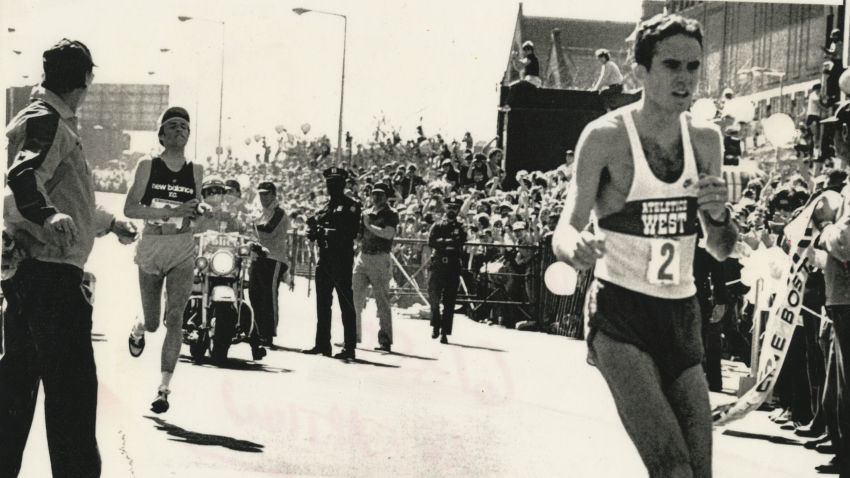
Dick Beardsley and Alberto (photo) battled right up to the end. Alberto was born in Cuba in 1958 and immigrated to the United States as a child with his family. Salazar currently is the head coach of the Nike Oregon Project in Portland, Oregon.
by Bob Anderson
Login to leave a comment
Bob Anderson's passion for running is contagious and some may even say, a bit fanatical
In this episode of Runners Connect Podcast we speak with Bob Anderson photographer, filmmaker and founder of Runner’s World Magazine, My Best Runs and runner-finisher of a grueling year-long race challenge that consisted of one race a week for 50 weeks. He averaged 6:59/mile pace for the 350.8 miles at age 64 which was 81% age-graded.
The next year at age 65 he ran the Boston Marathon finishing in 3:32:17. Bob started running at age 15 and two years later launched Distance Running News, a 1,000 copy magazine that later blossomed into the 2.5 million monthly readers periodical known as Runner’s World.
But, as successful as Runner’s World became, it was not without a cost which we learn about in this interview. Bob shares personal ups and downs with running, especially as they relate to his early creation of Runner’s World.
We move on to discuss his epic film A Long Run detailing his one year race challenge and featuring many of Bob’s running peers including Paula Radcliffe and Bill Rogers; the creation of a new running event called Double Racing; and the development of an informational and interactive website, mybestruns.com which features the best, most interesting and unique races from around the world.
Bob’s passion for running is contagious and, some may even say, a bit fanatical as detailed in the year long 50 race challenge documented in the film A Long Run.
His ideas and direct involvement in fitness continue into the current decade where Bob broke into a new race age category, 70 plus. We hope you enjoy our conversation with Bob Anderson.
by Stephanie Atwood
Login to leave a comment
What is going to happen to Runner's World...more employees terminated
A month after laying off 150 employees inherited through its acquisition of Rodale, Hearst Magazines is undergoing another round of cuts. Runner's World is part of the group of titles previously published by Rodale.
Hearst did not respond to a request for comment, but a source close to the company tells Folio: that at least 50 employees were notified Monday of their termination, effective immediately. It is not clear how many Runner's World employees were asked to leave.
"I am concerned to see this," says RW founder Bob Anderson. "Running and Runner's World grew up together...I have been concerned with all the discounted magazine offers I have been getting...I have some ideas if whoever is calling the shots want to listen," says Bob.
Login to leave a comment
Loon Mounain Race is One Tough Hill Climb
Login to leave a comment
Sometimes Treadmill Running is the Best Choice
Login to leave a comment
Hearst takes over Rodale, publisher of Runner's World
Login to leave a comment
Forbes Publisher first real job was at Runner's World
Login to leave a comment


